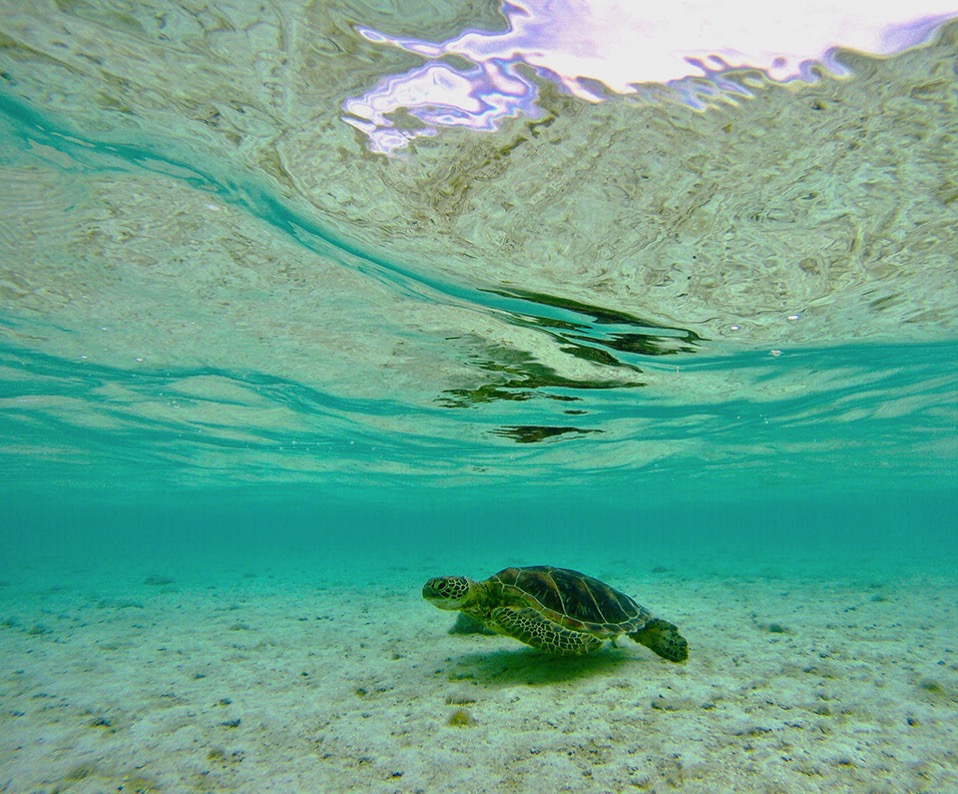
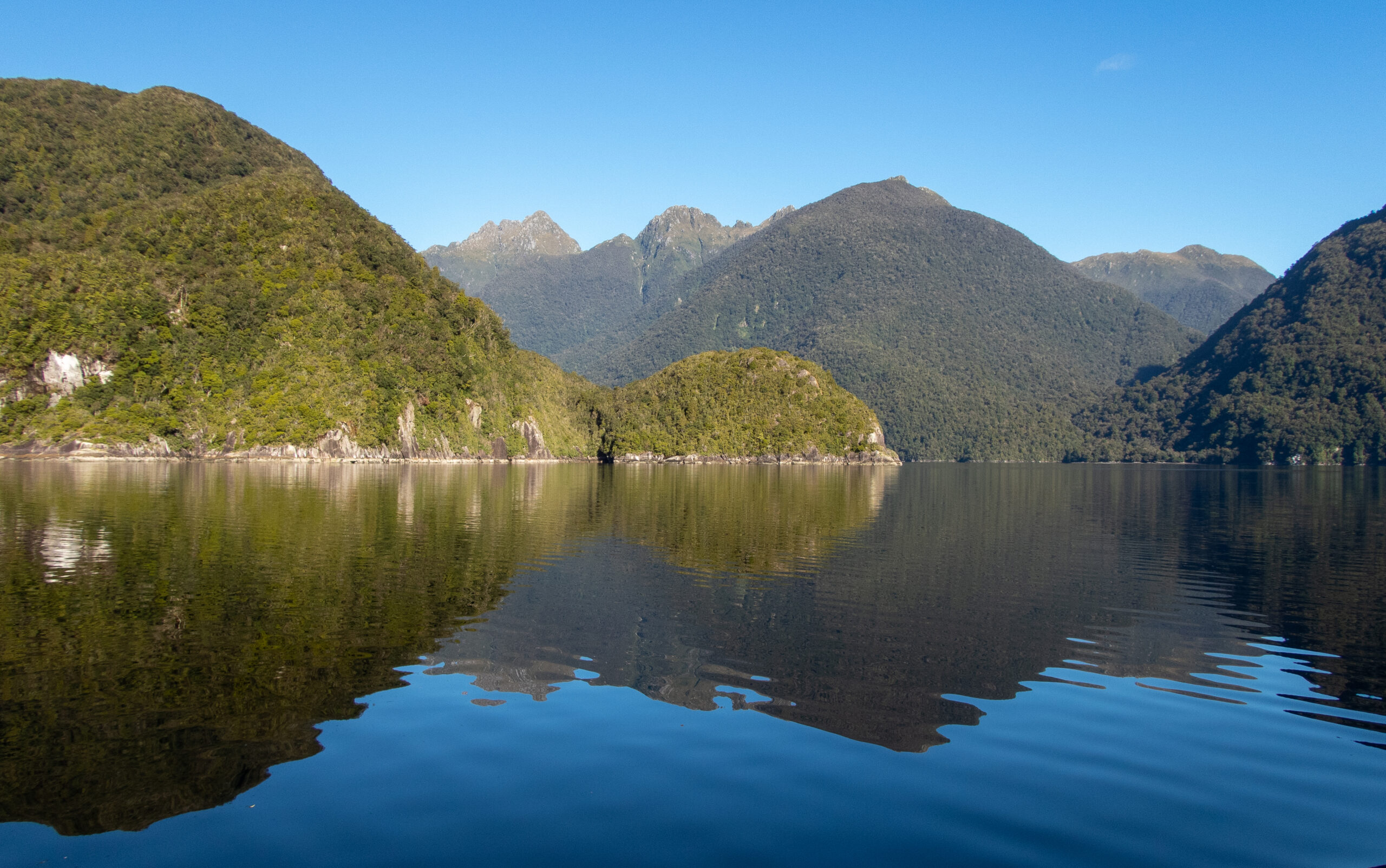
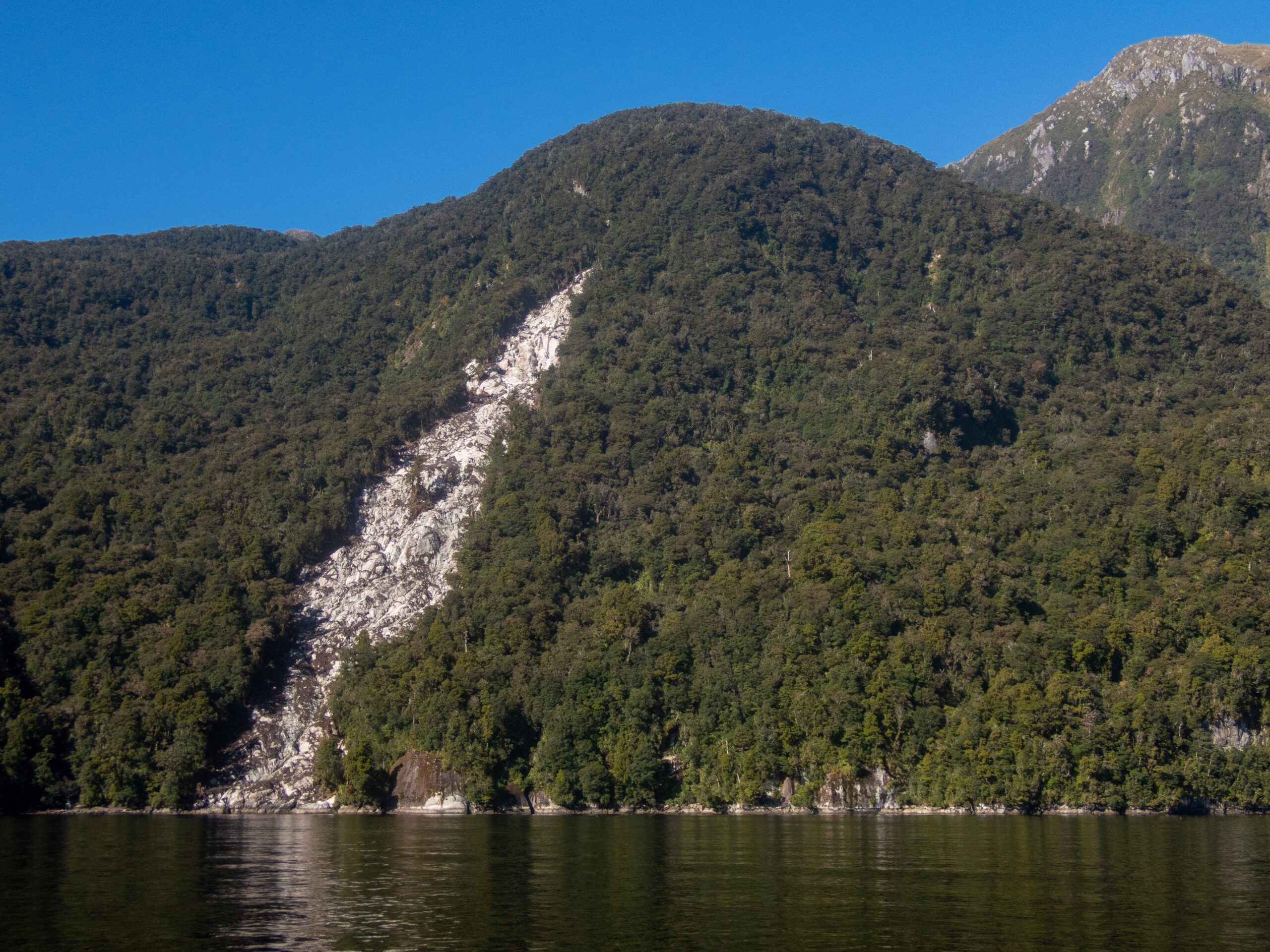

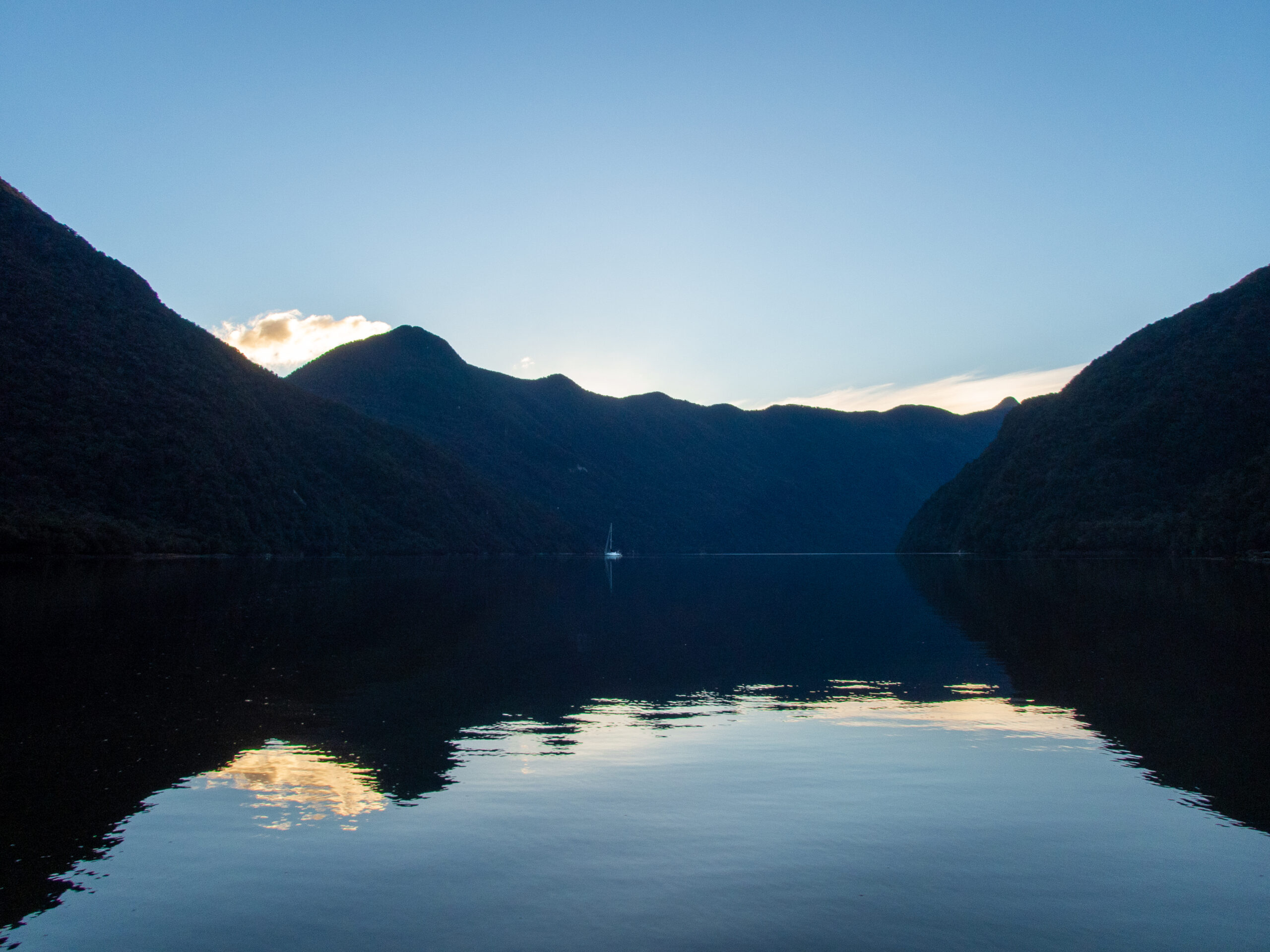
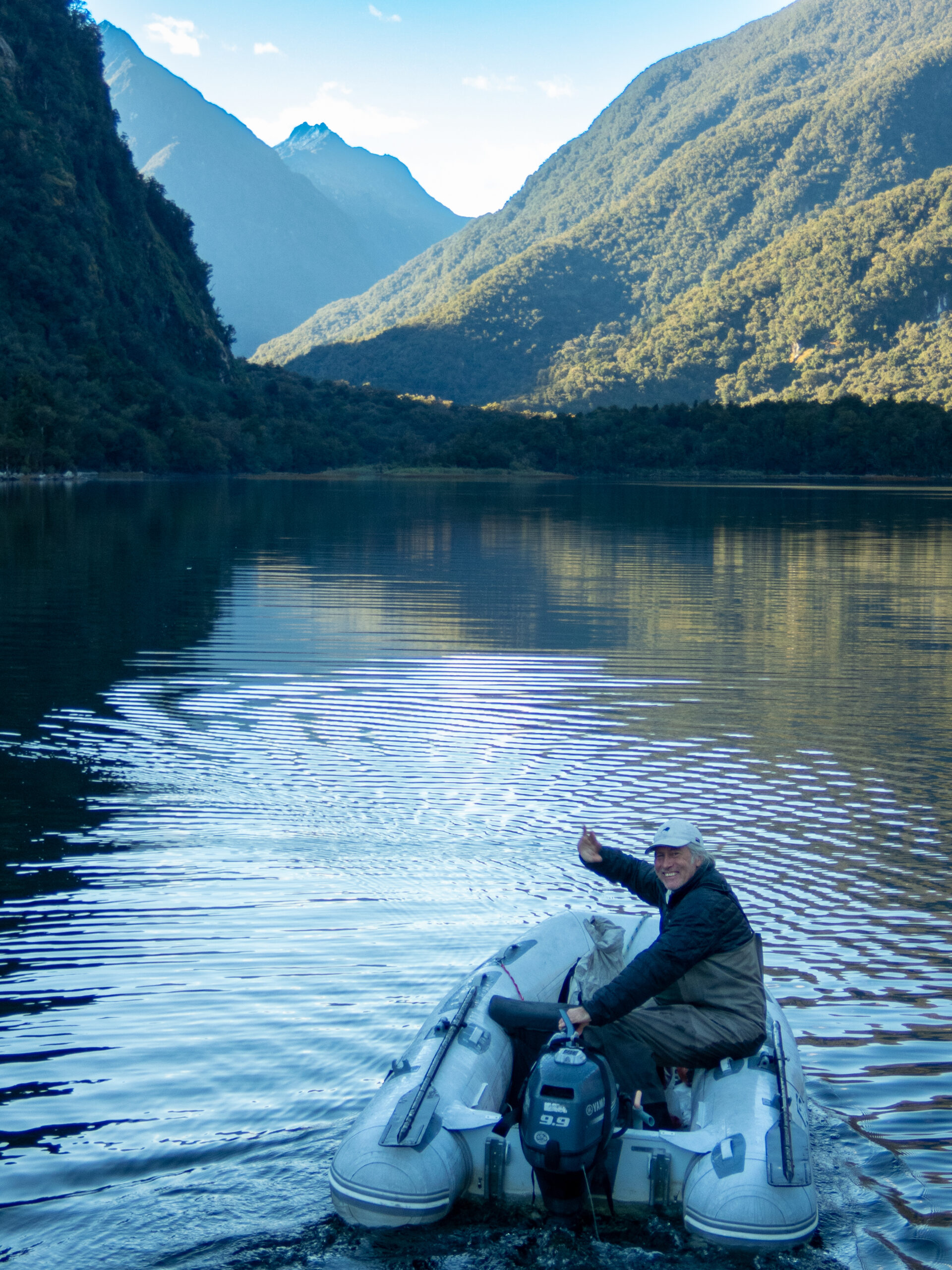
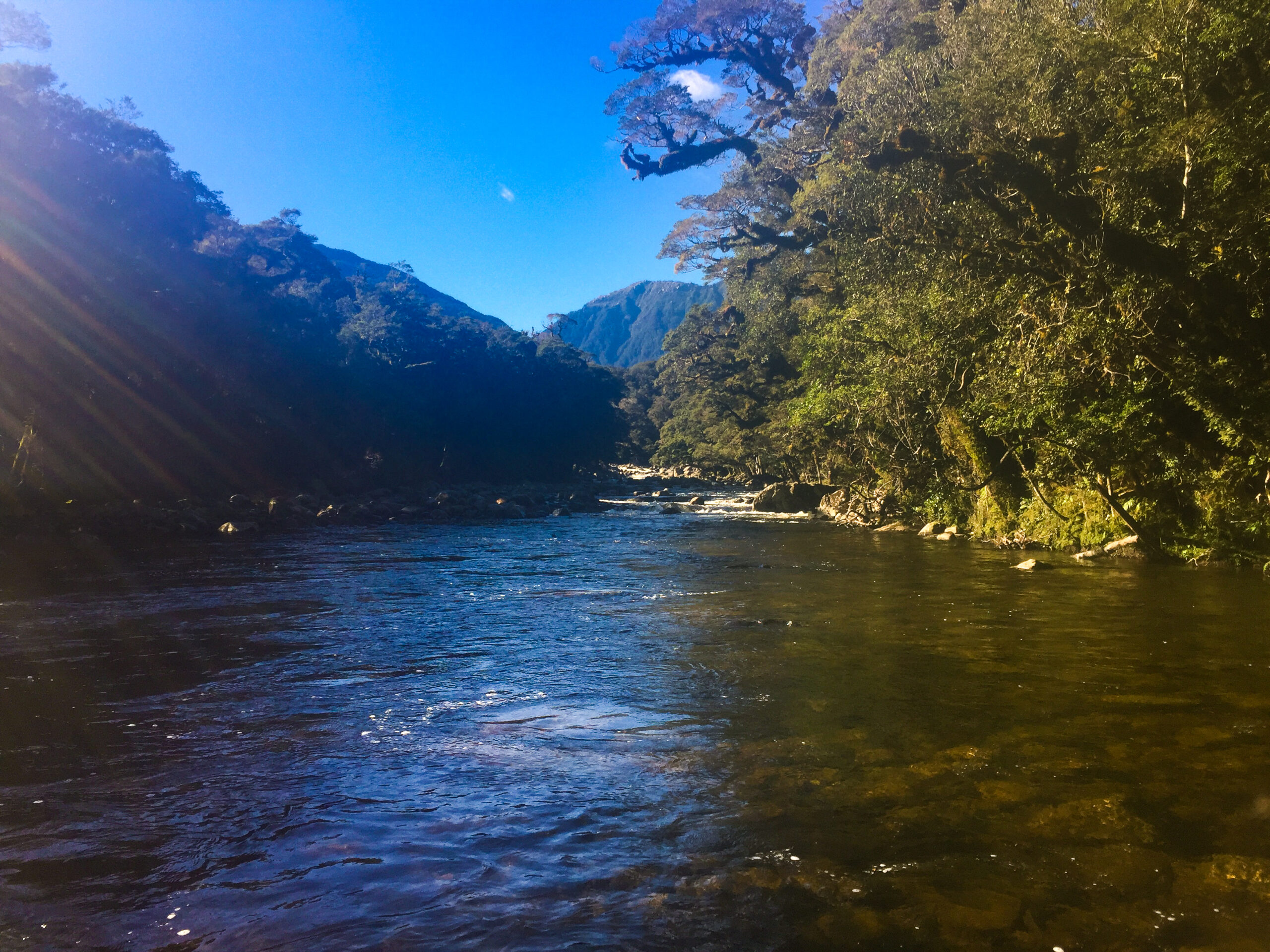
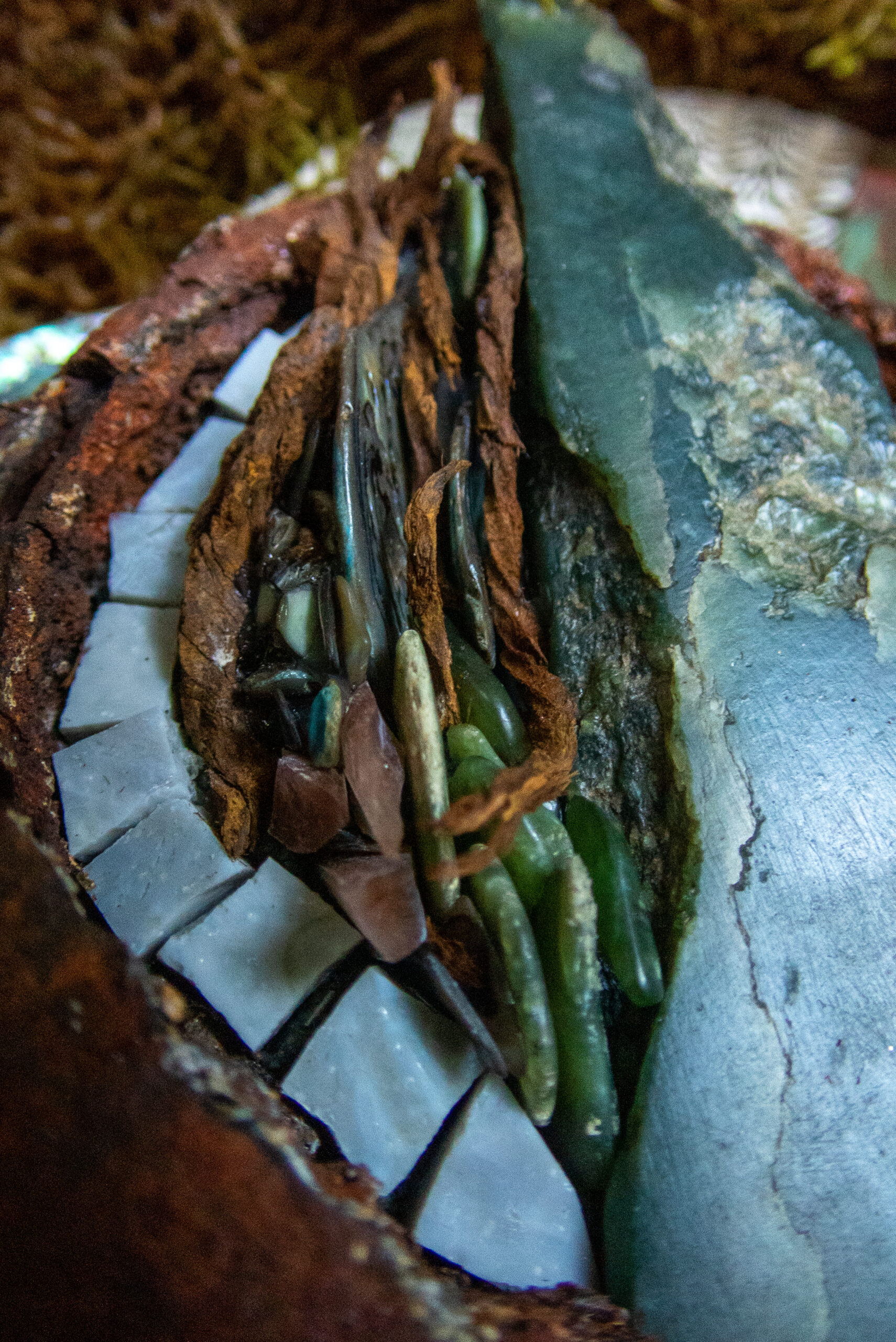

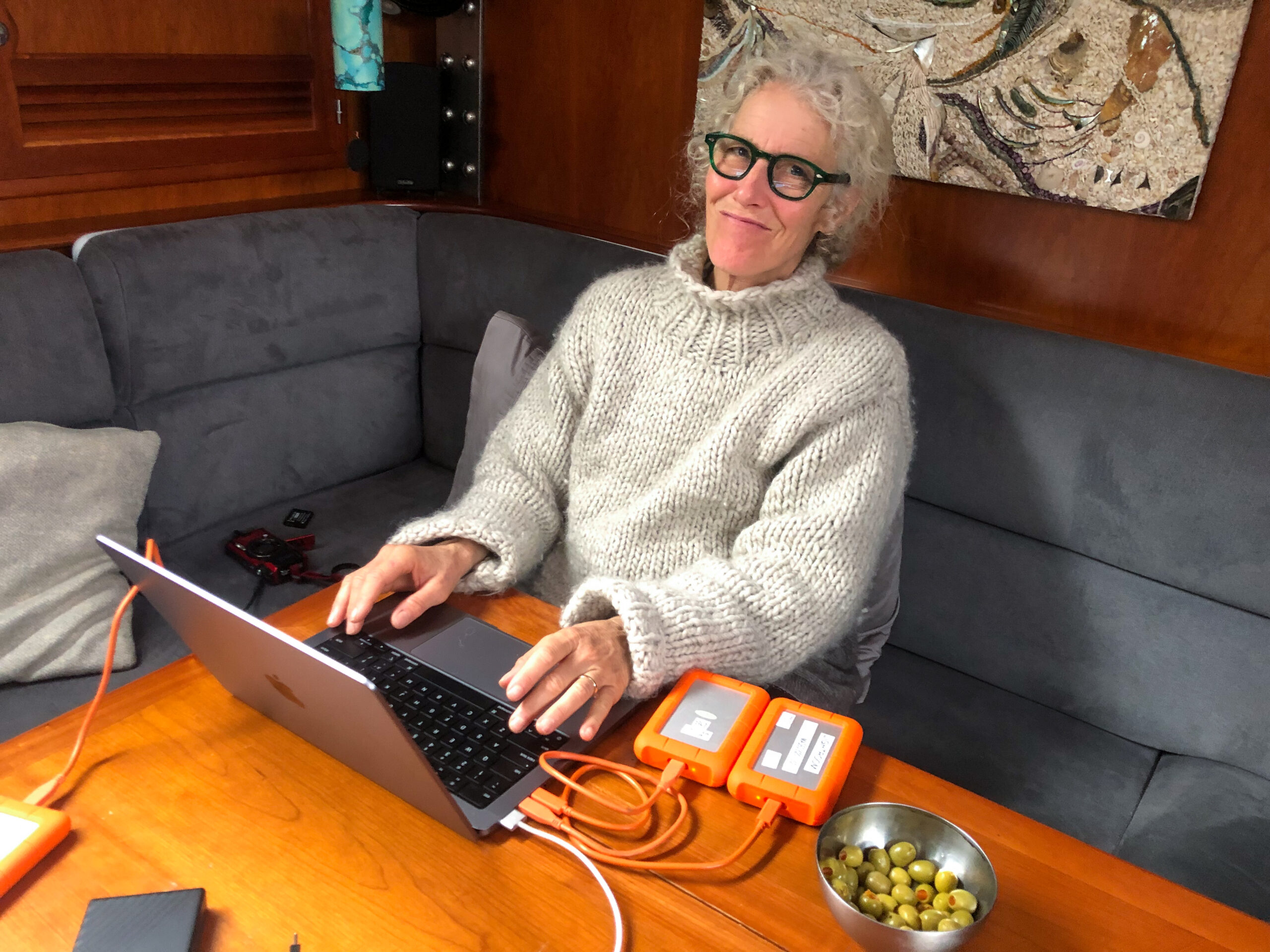















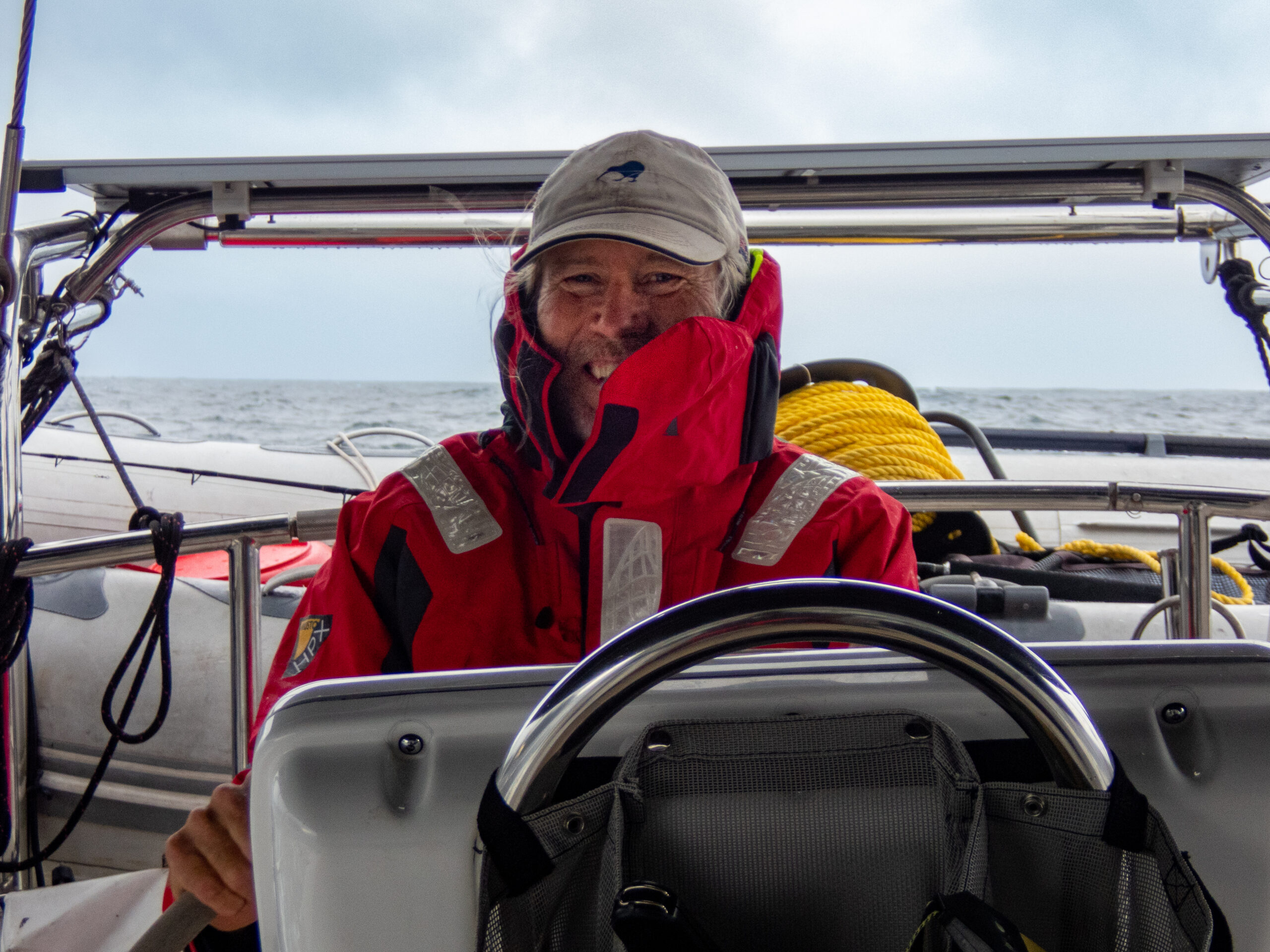
The run outside between Caswell and George Sounds is around 14 miles. We left early to try to beat some forecast rain and gusty NW winds, and almost made it. The rain started just as we made our turn in. Diana logged the max wind at 27.2 knots, then went down and crossed it out to a revised 29 knots. By the time the wind had blasted us another two miles down the sound, Diana had crossed that out to record 42 knots. Looking on the chart with the wind howling behind us, we were concerned if Anchorage Cove would be able to offer any shelter from this angle of wind, even though it’s listed as an ‘all-weather anchorage.’ We worried it might be too gusty to safely negotiate the narrow spot between the river bar and small rocky island. We decided to poke in and check it out if we could. Right away the wind dropped into the low twenties then the teens, which still felt like a lot to try getting into the tight spot where fishermen had set up a line we could theoretically side tie to. The rain hammered down as Diana watched from the bow for shallow rocks off the island and I maneuvered Allora in, ready to back out if we needed. Despite whitecaps just outside, the winds this close to the little island dropped to near zero and Allora was able to hover effortlessly while Diana (in the kayak) quickly tied lines on the bow and stern, getting absolutely soaked in the process. It was a kind of a crazy feeling, the sudden stillness and security of that spot with gusts in the forties not half a mile away. We wouldn’t have guessed even from a couple hundred yards out that it was worth chancing. ~MS


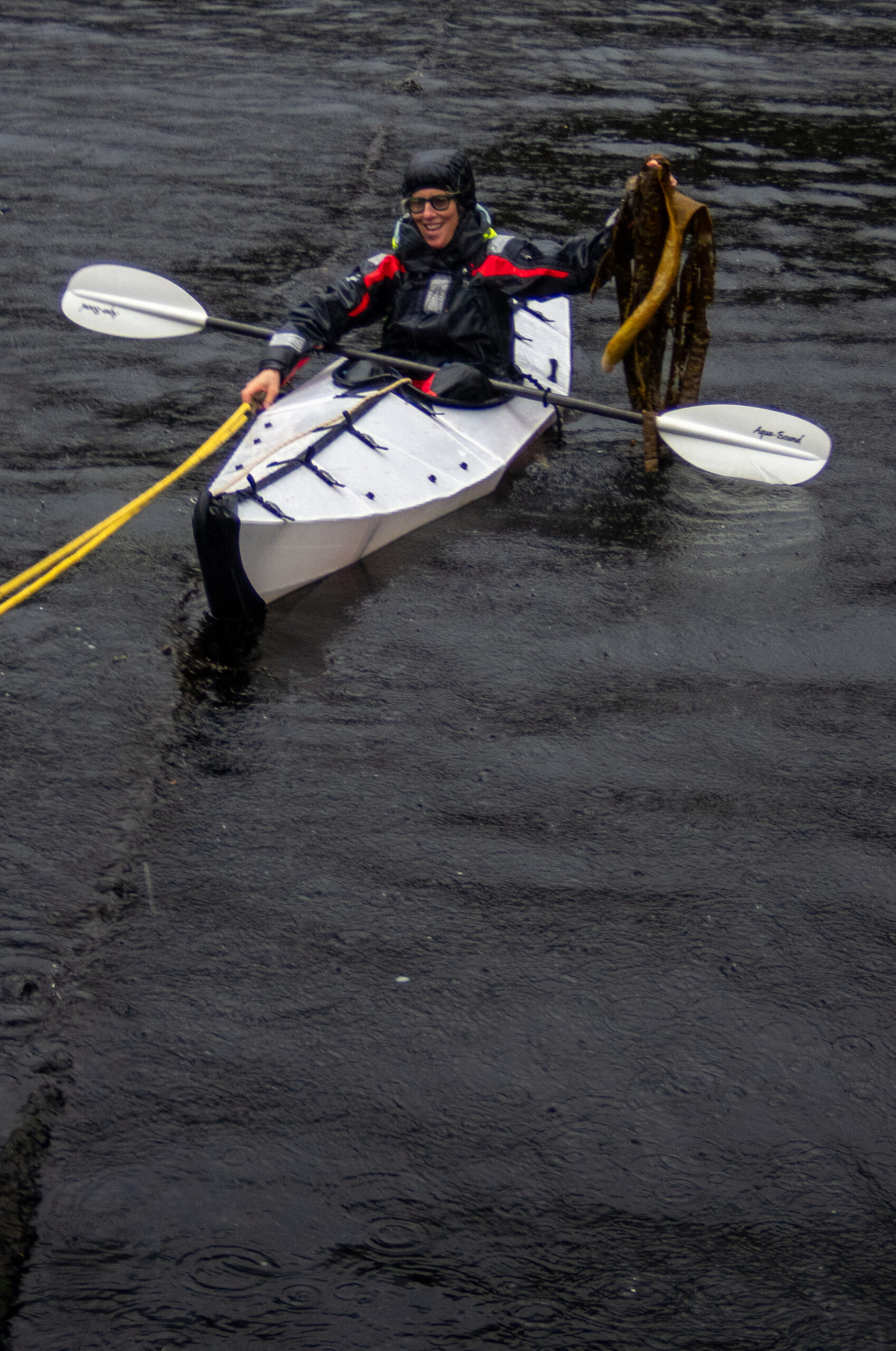

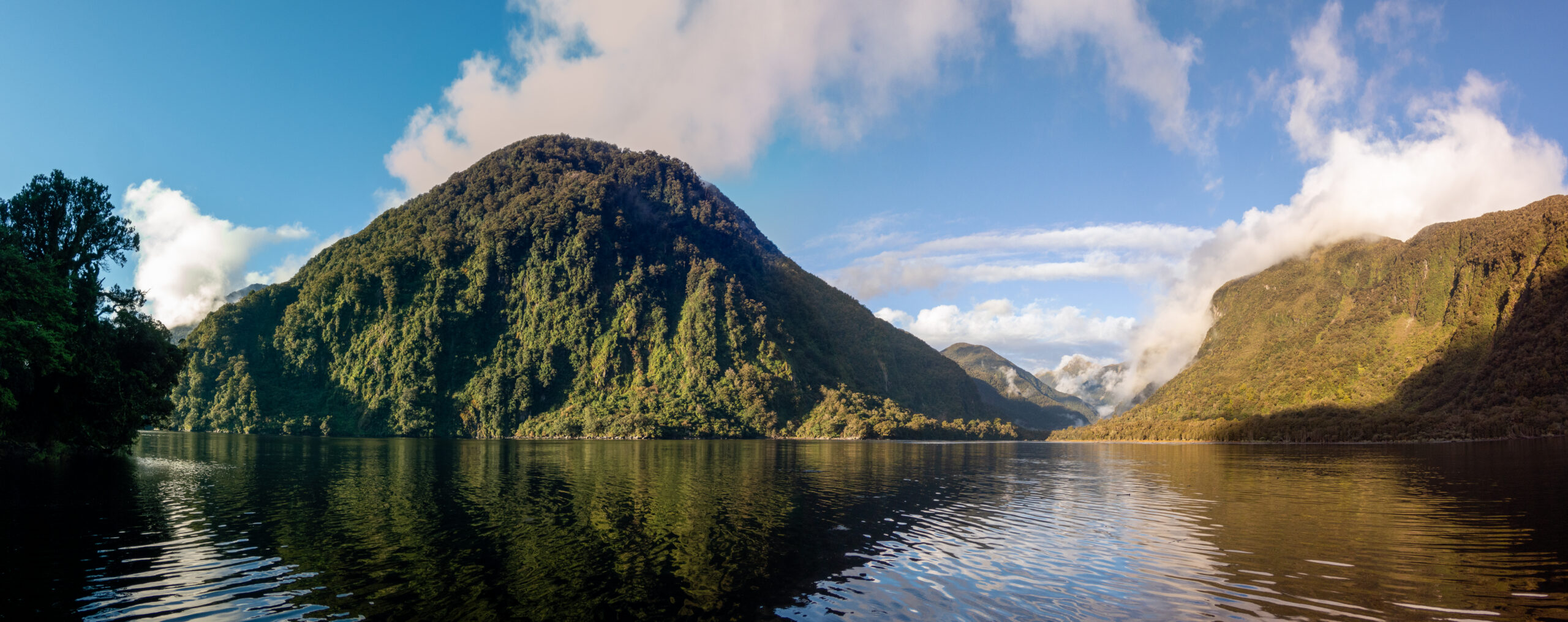
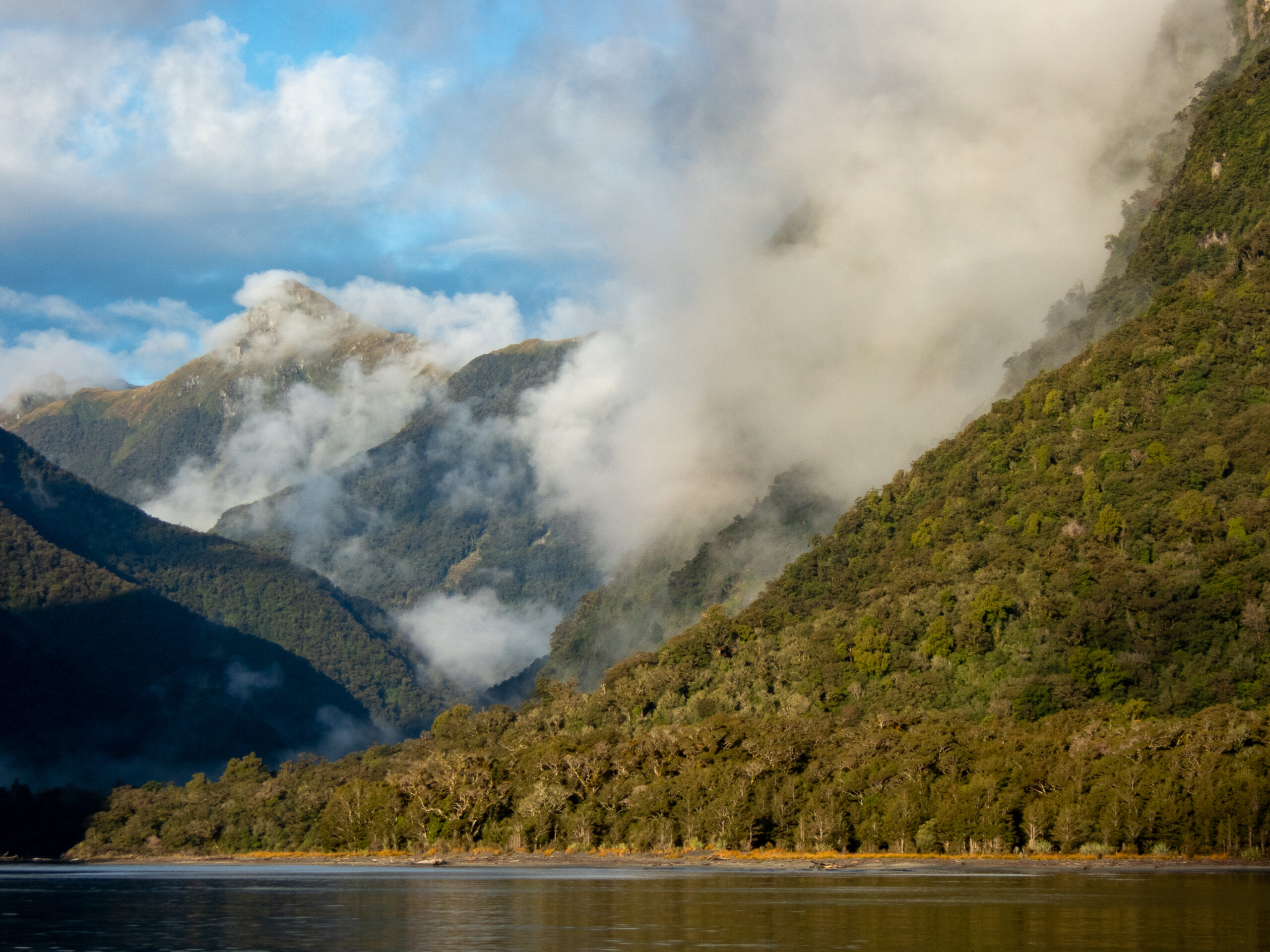
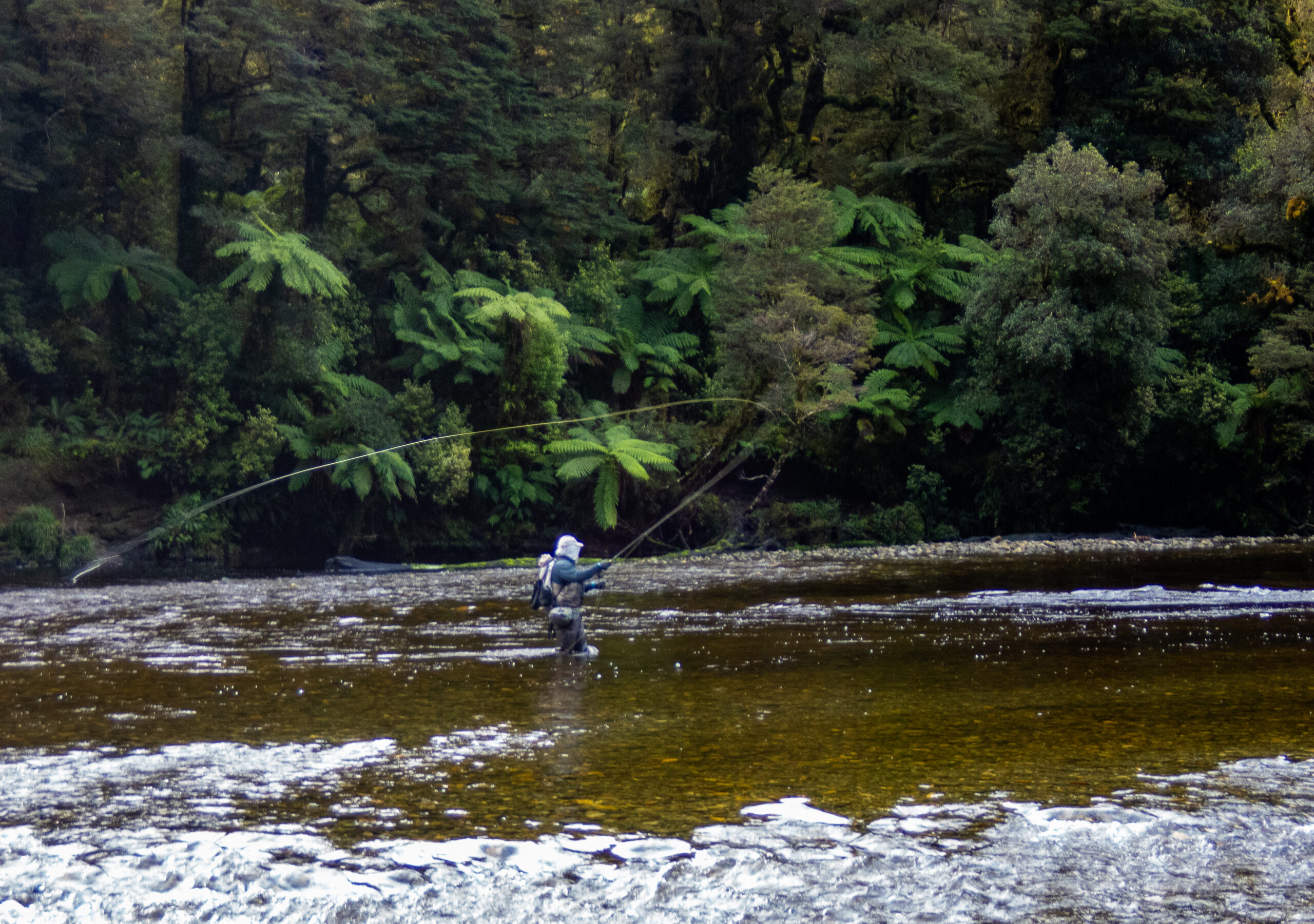
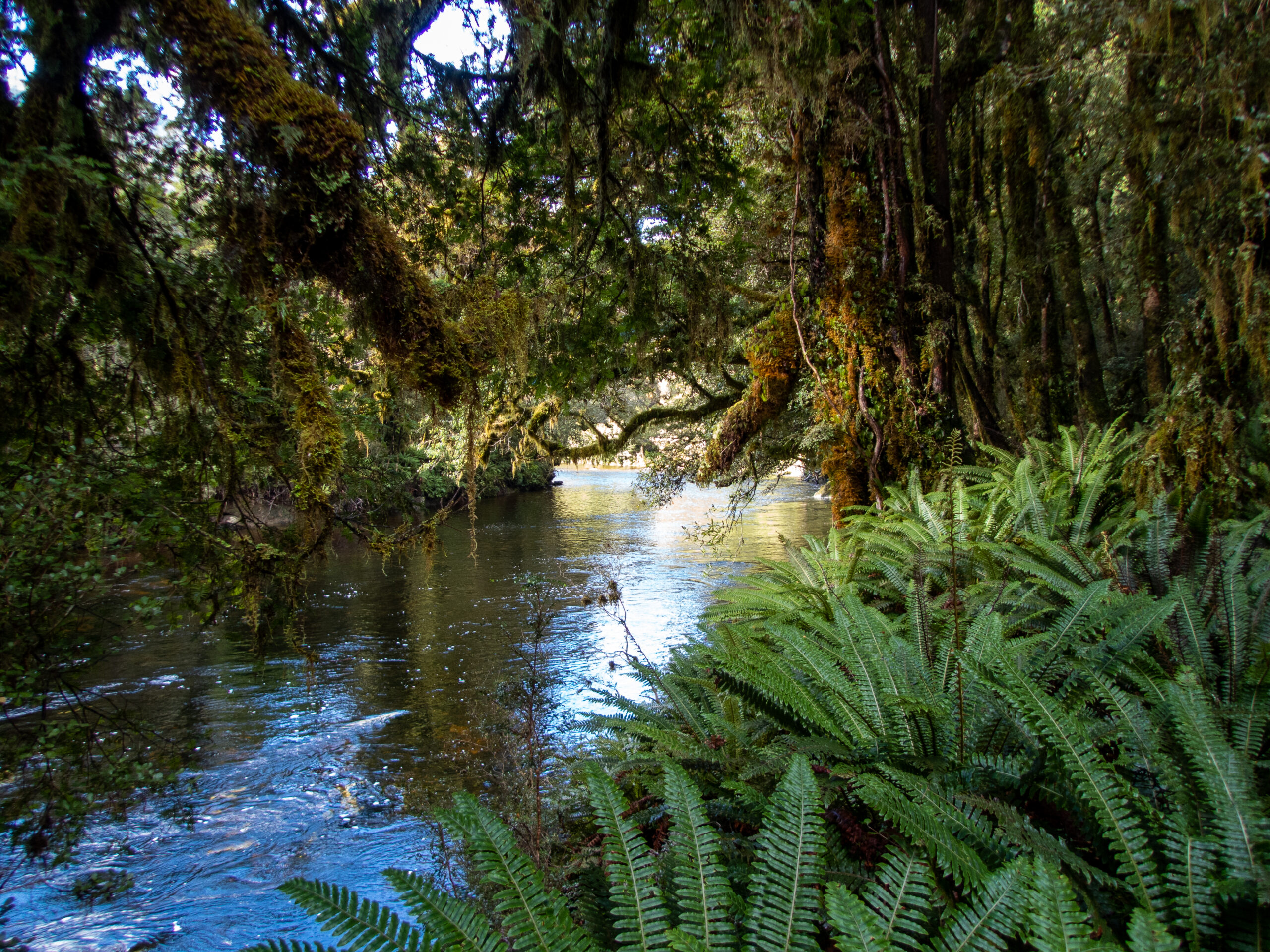
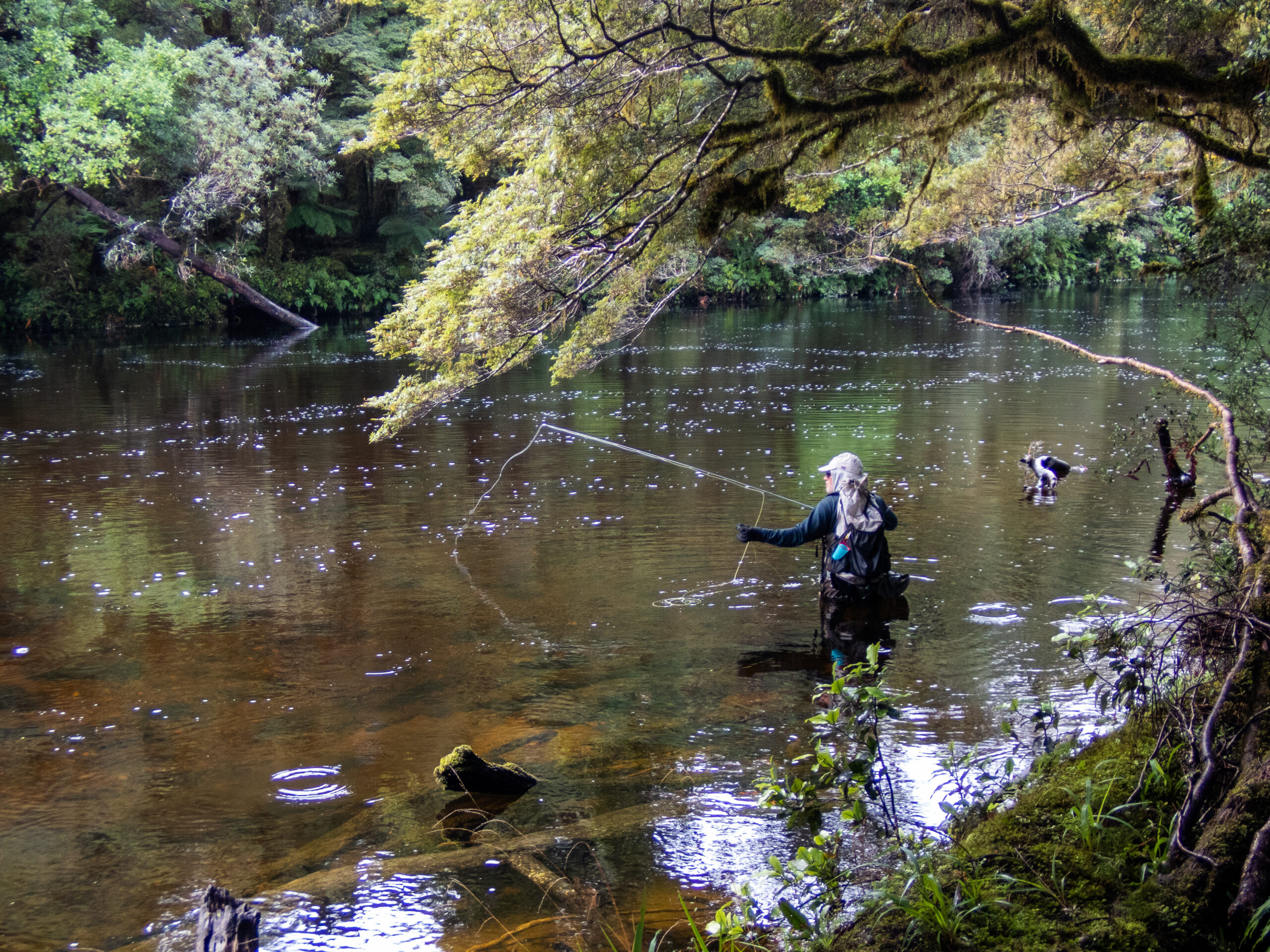
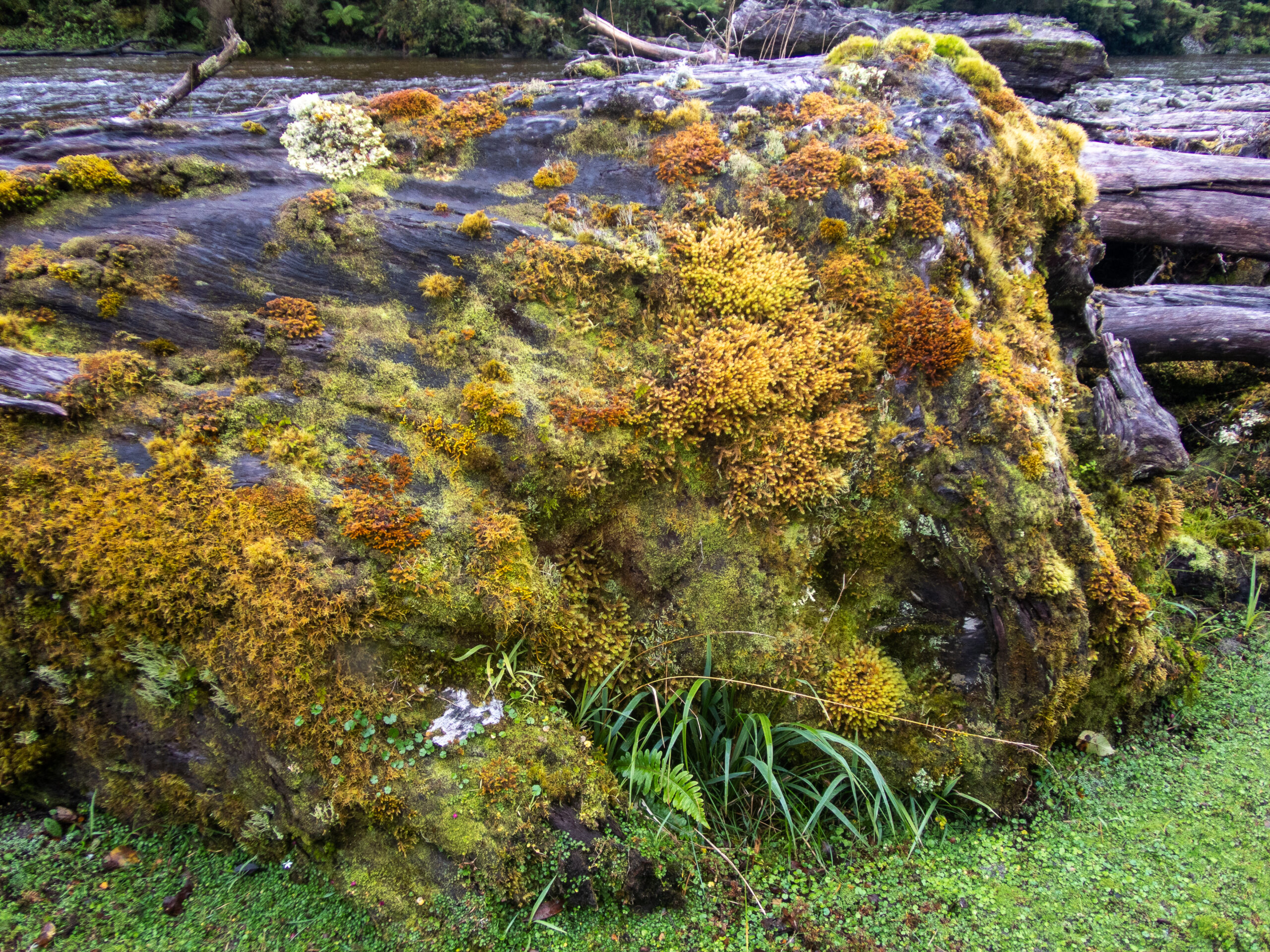

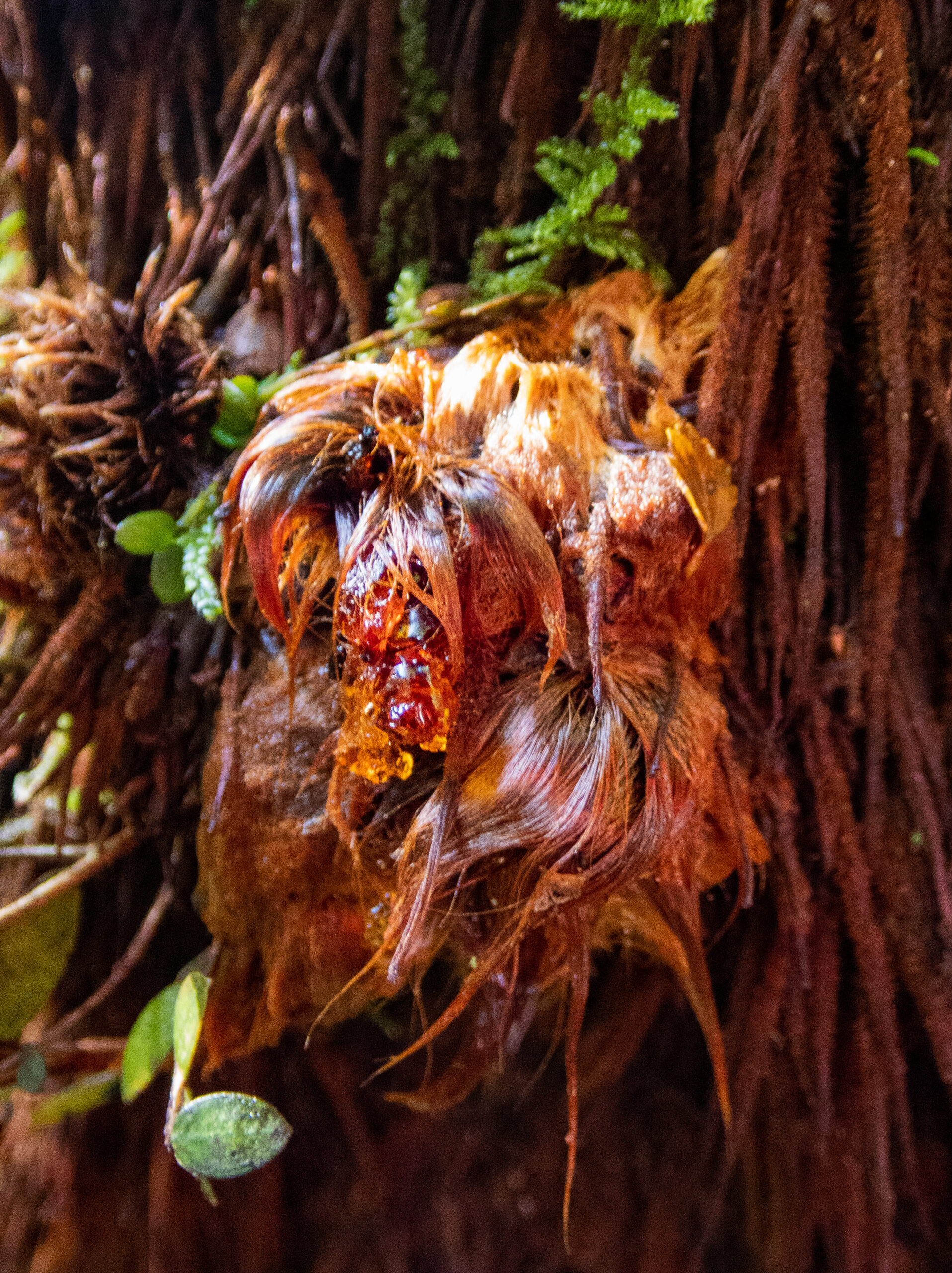
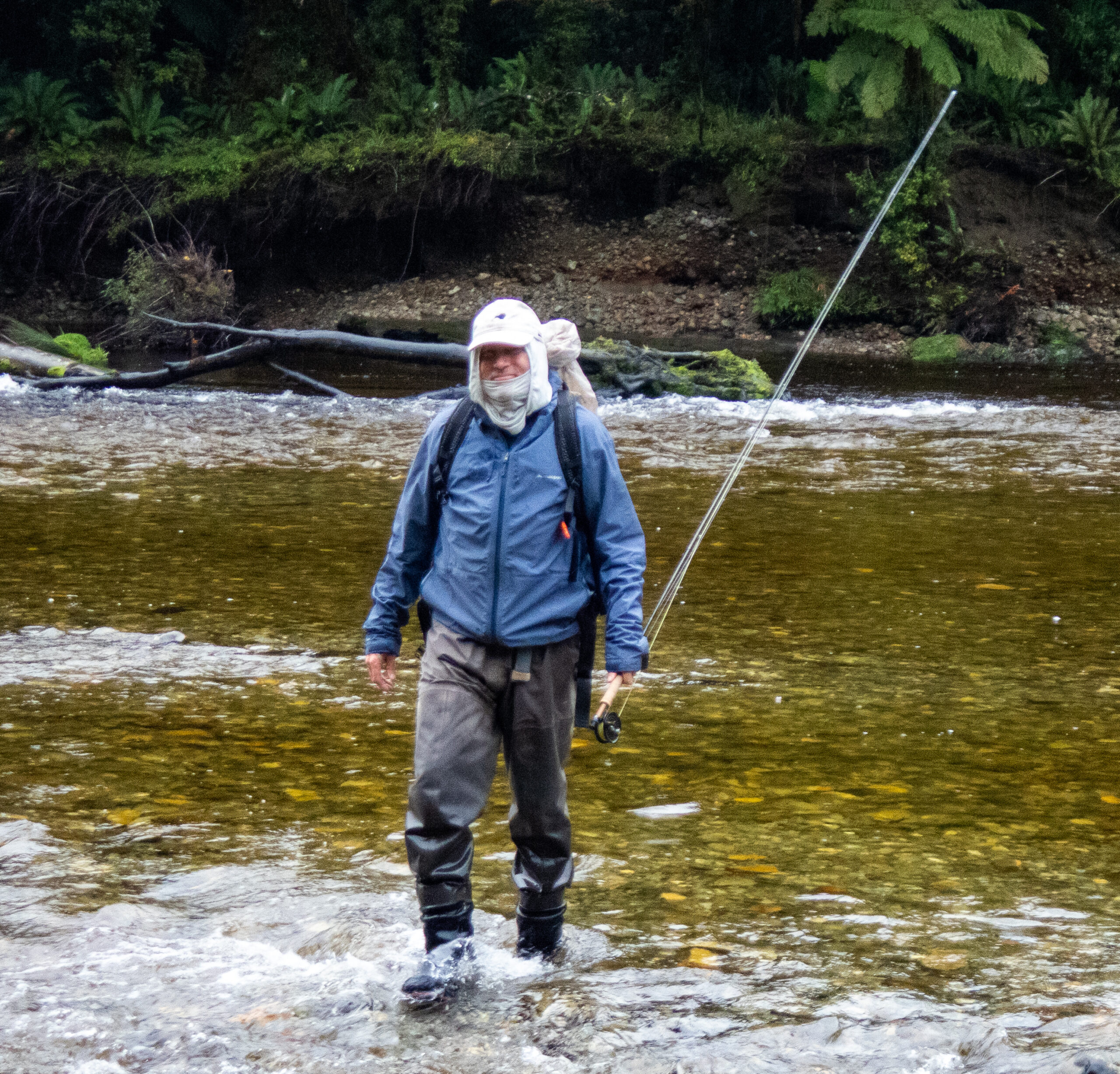
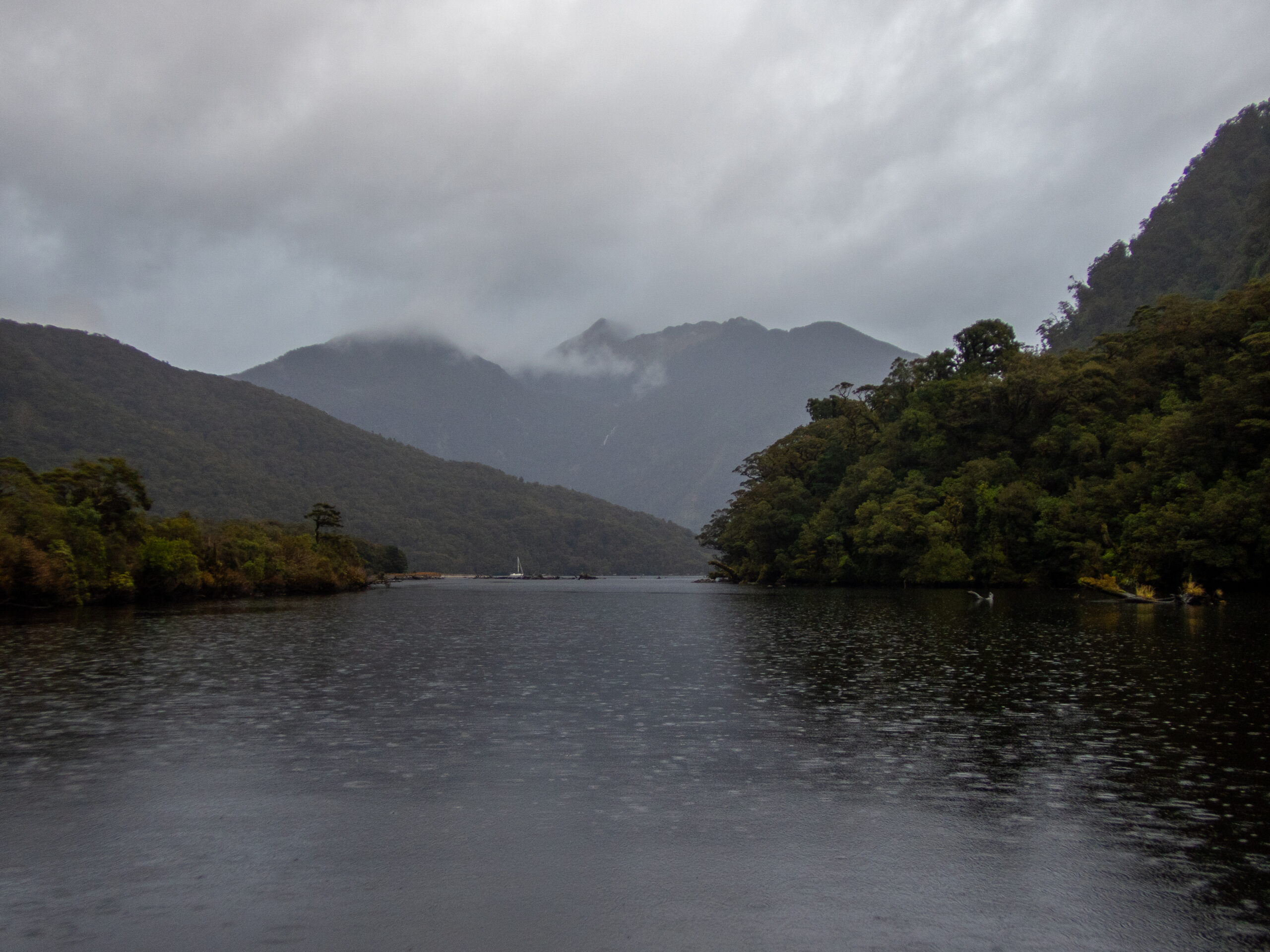

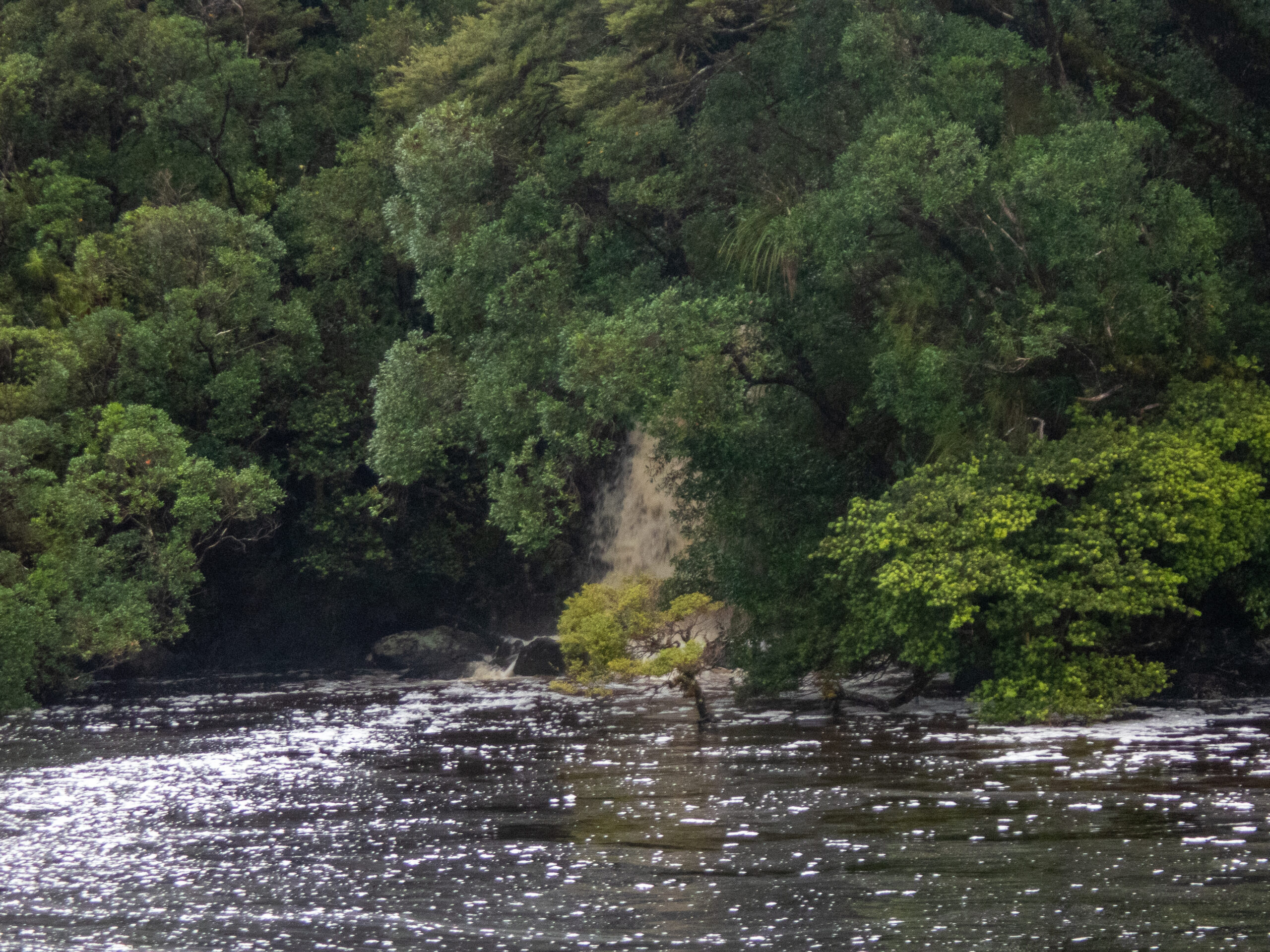
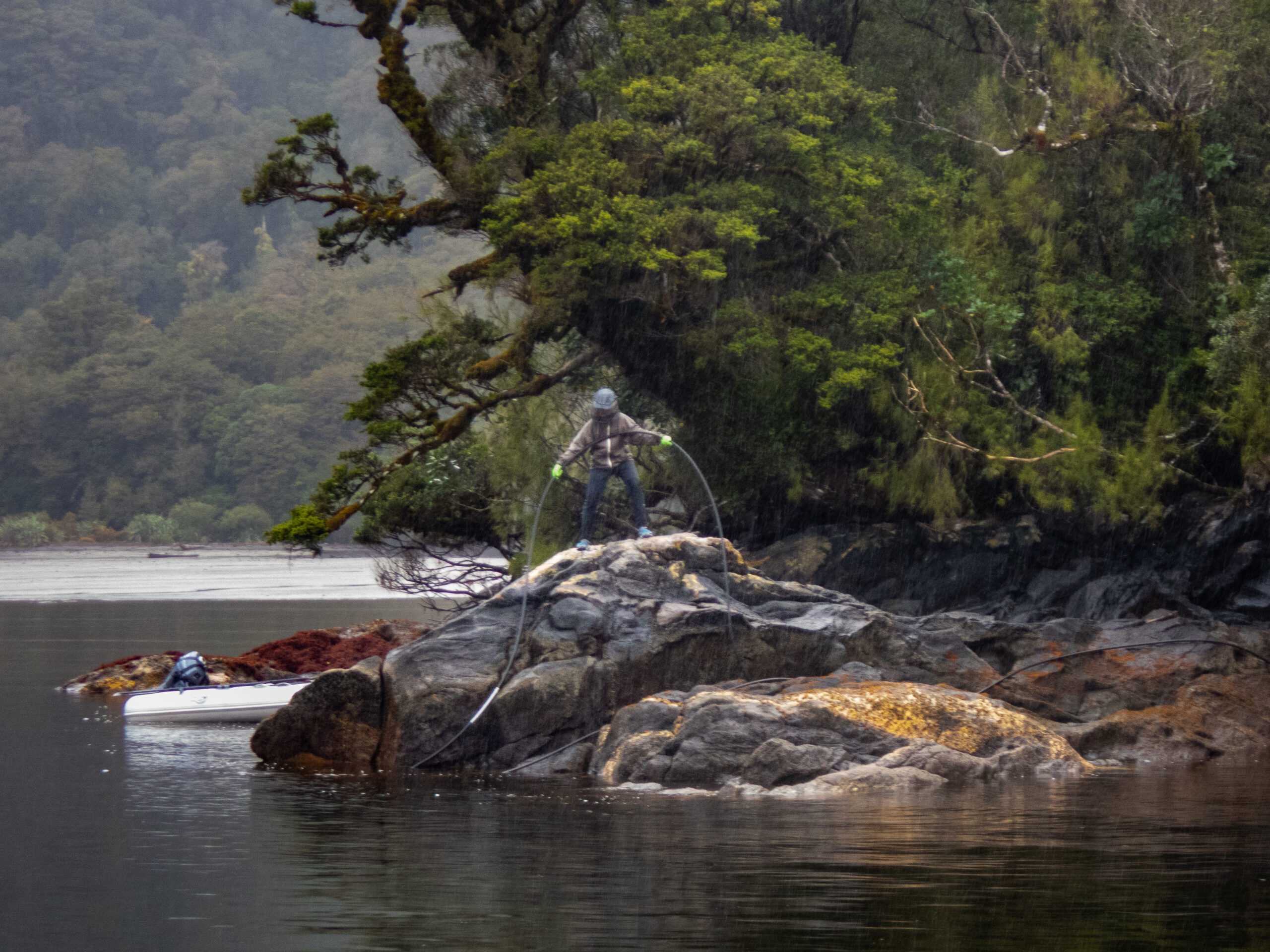
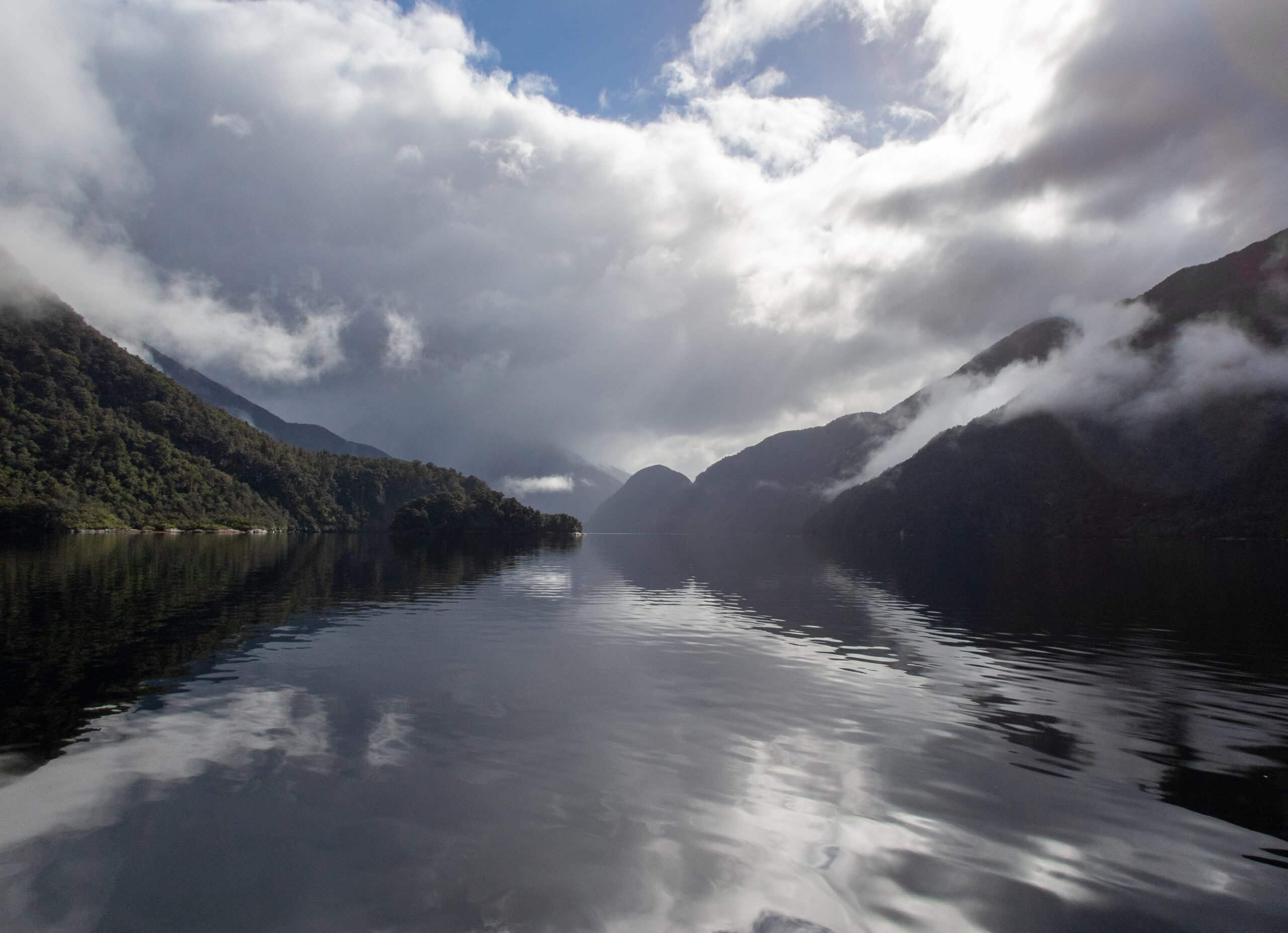
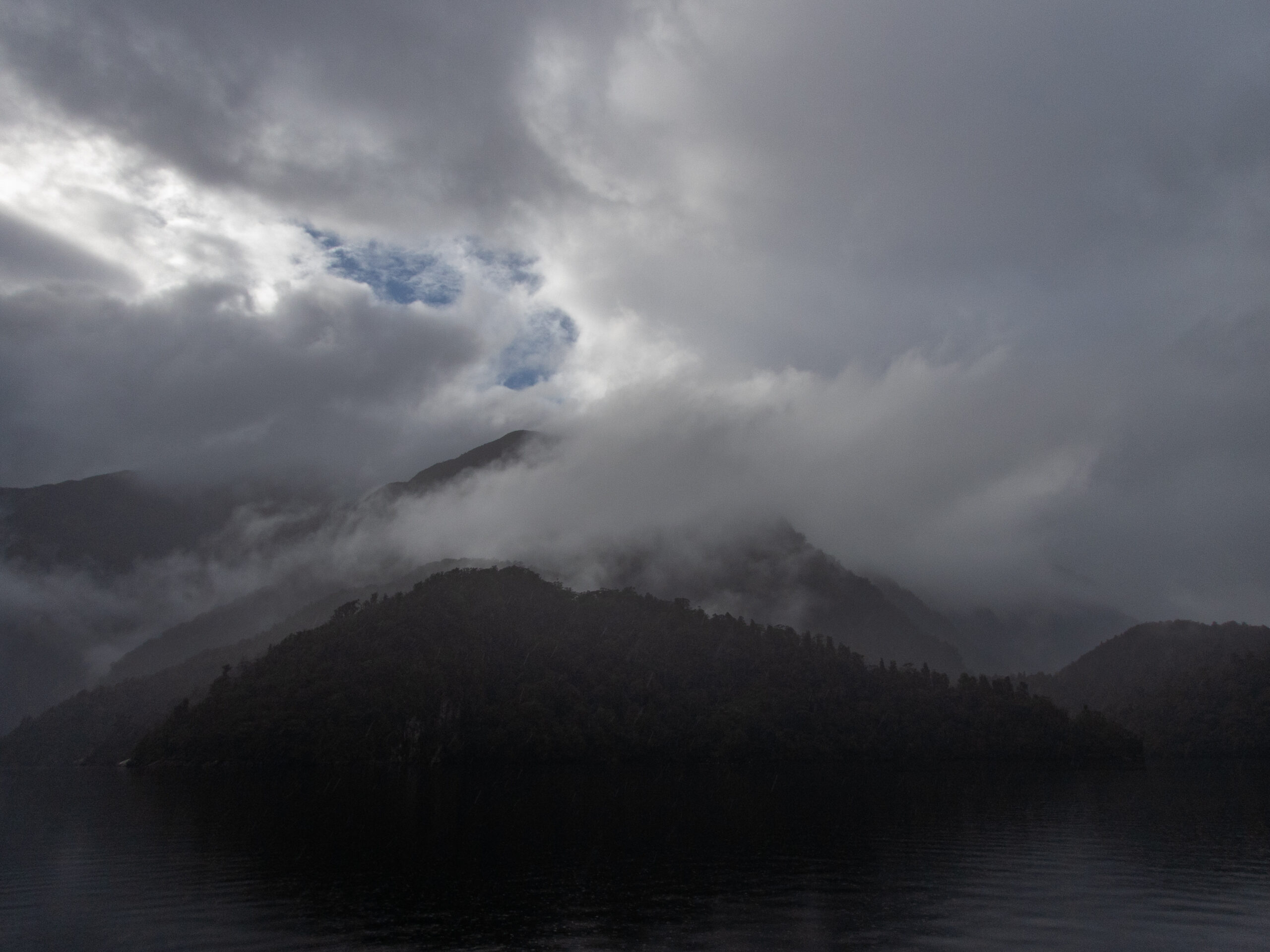
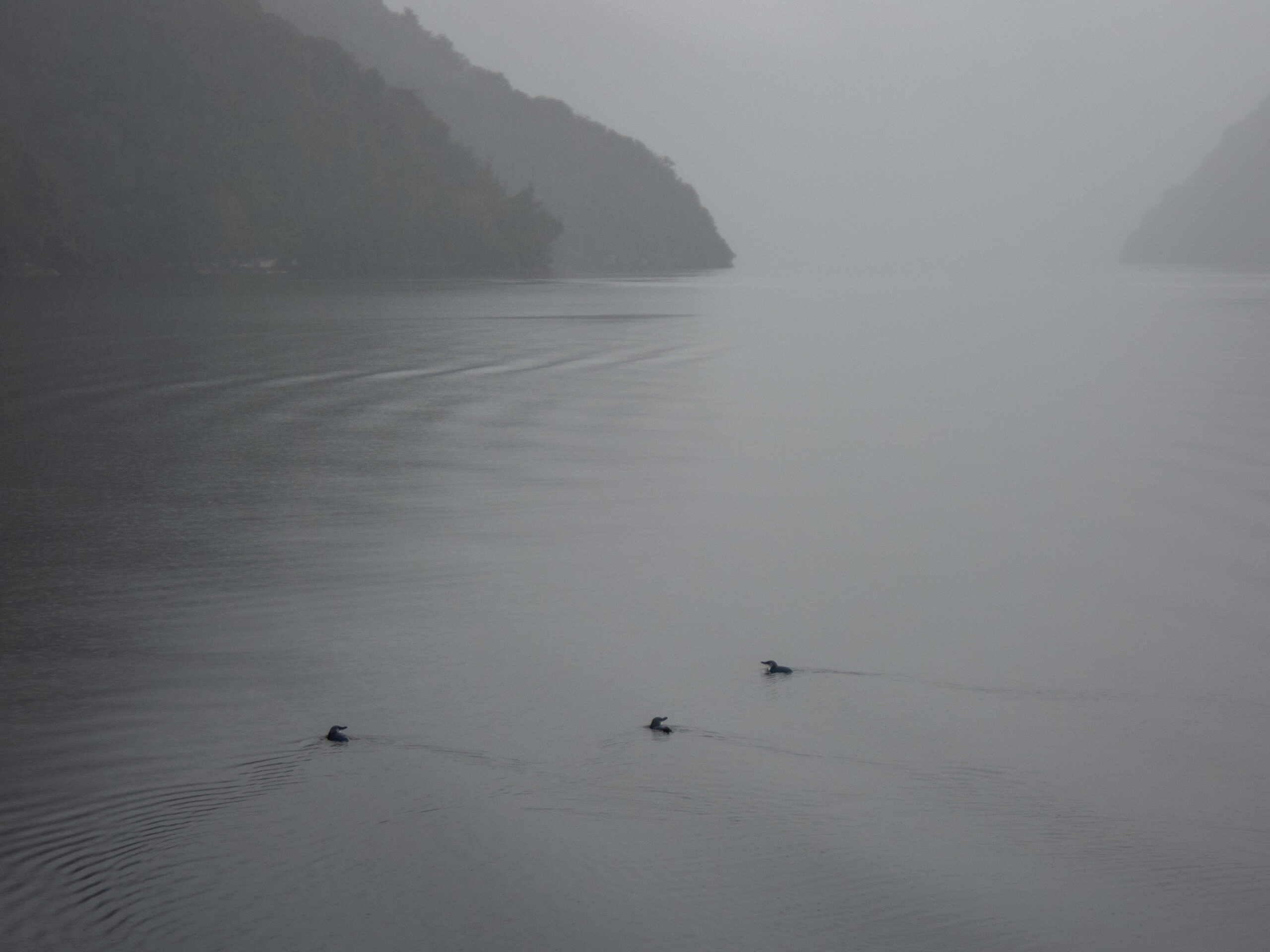
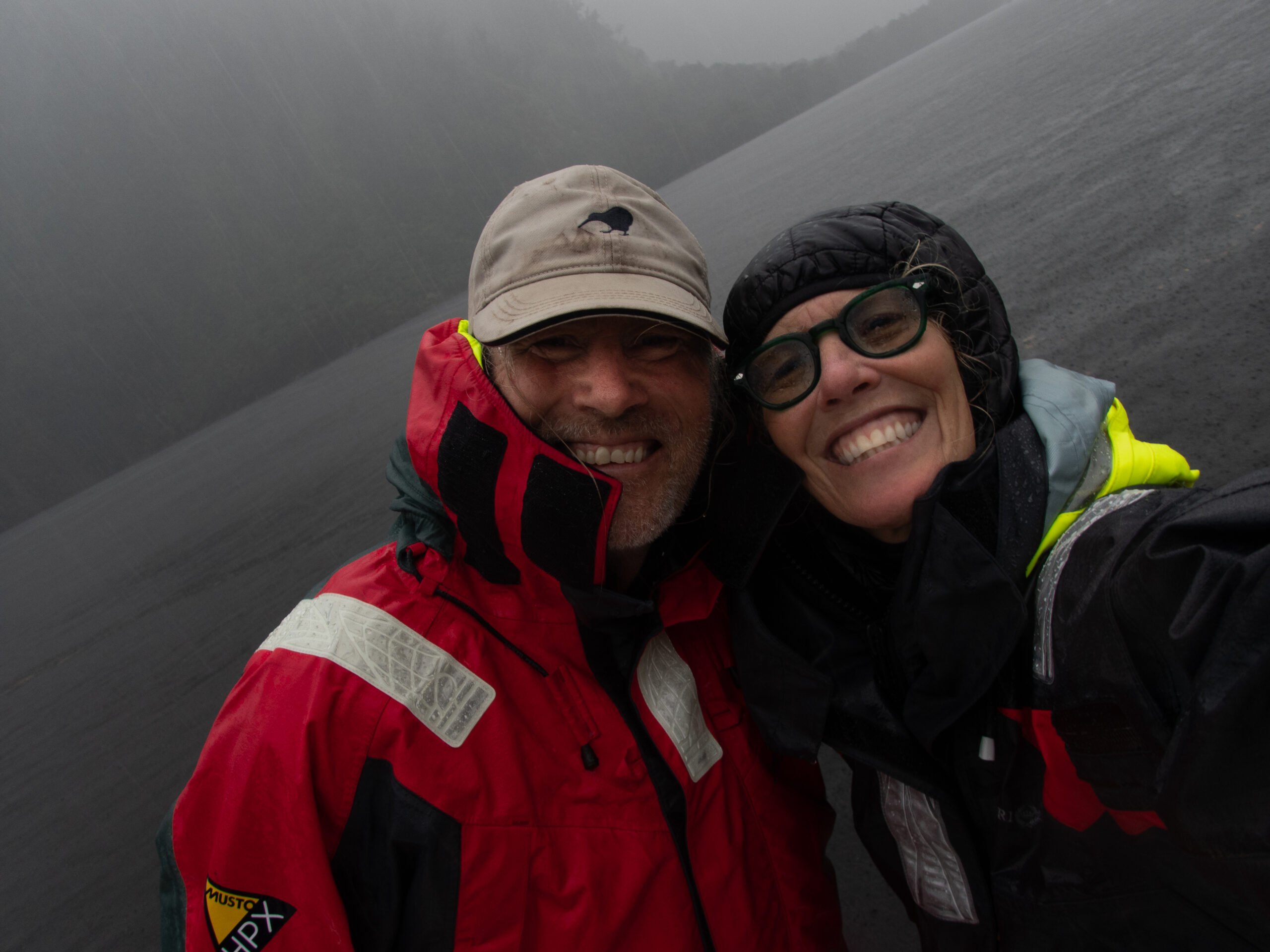




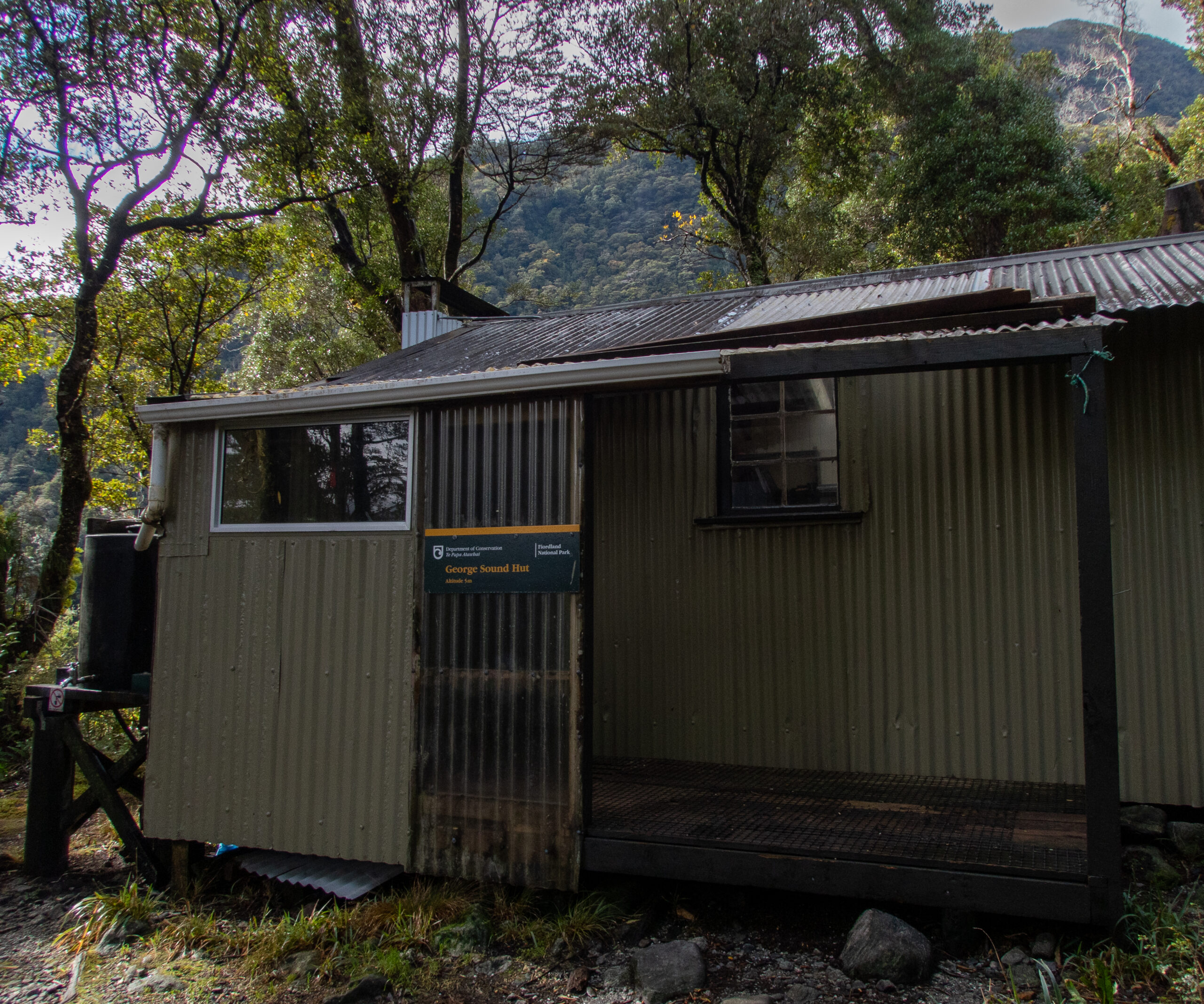

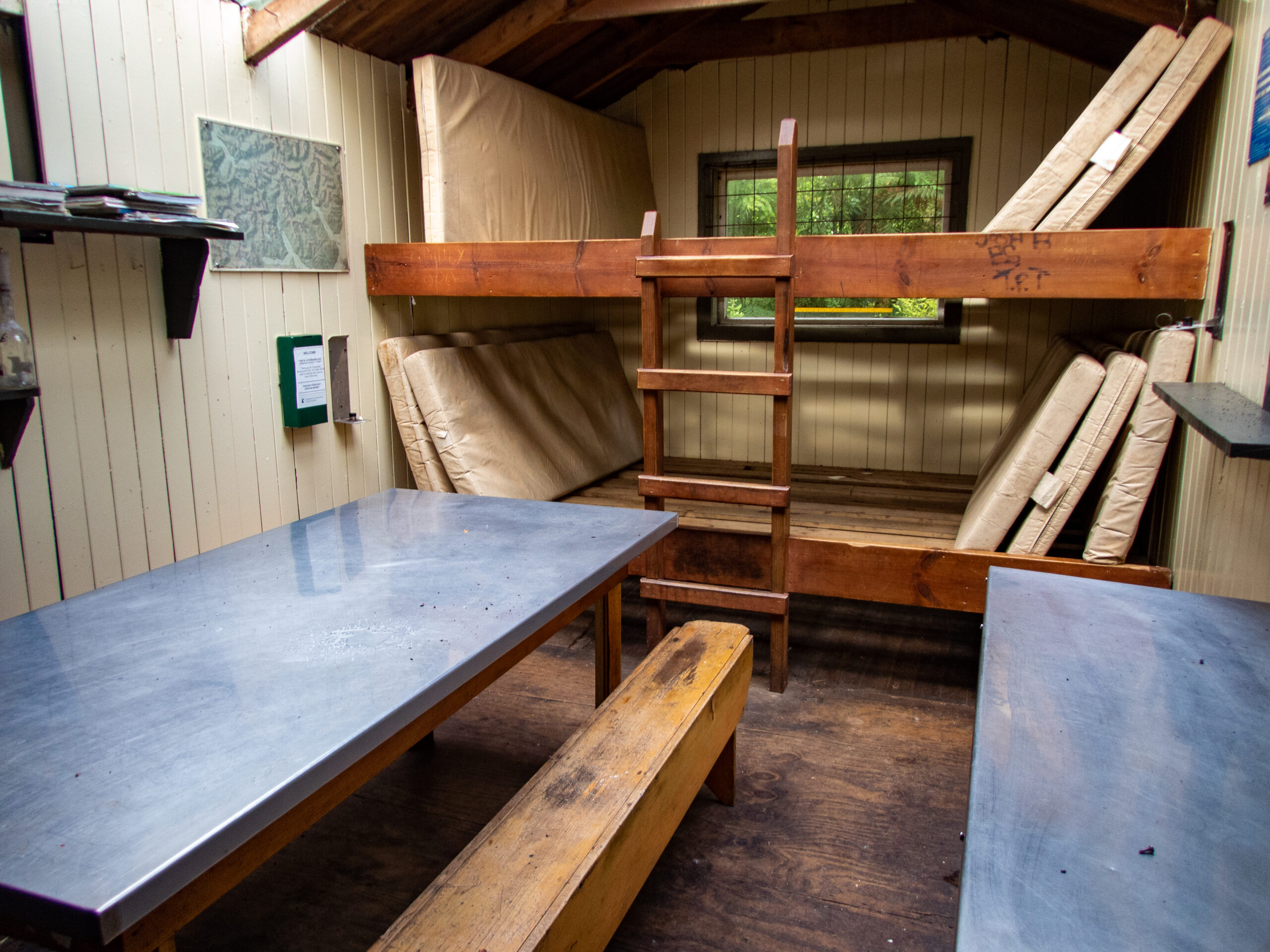

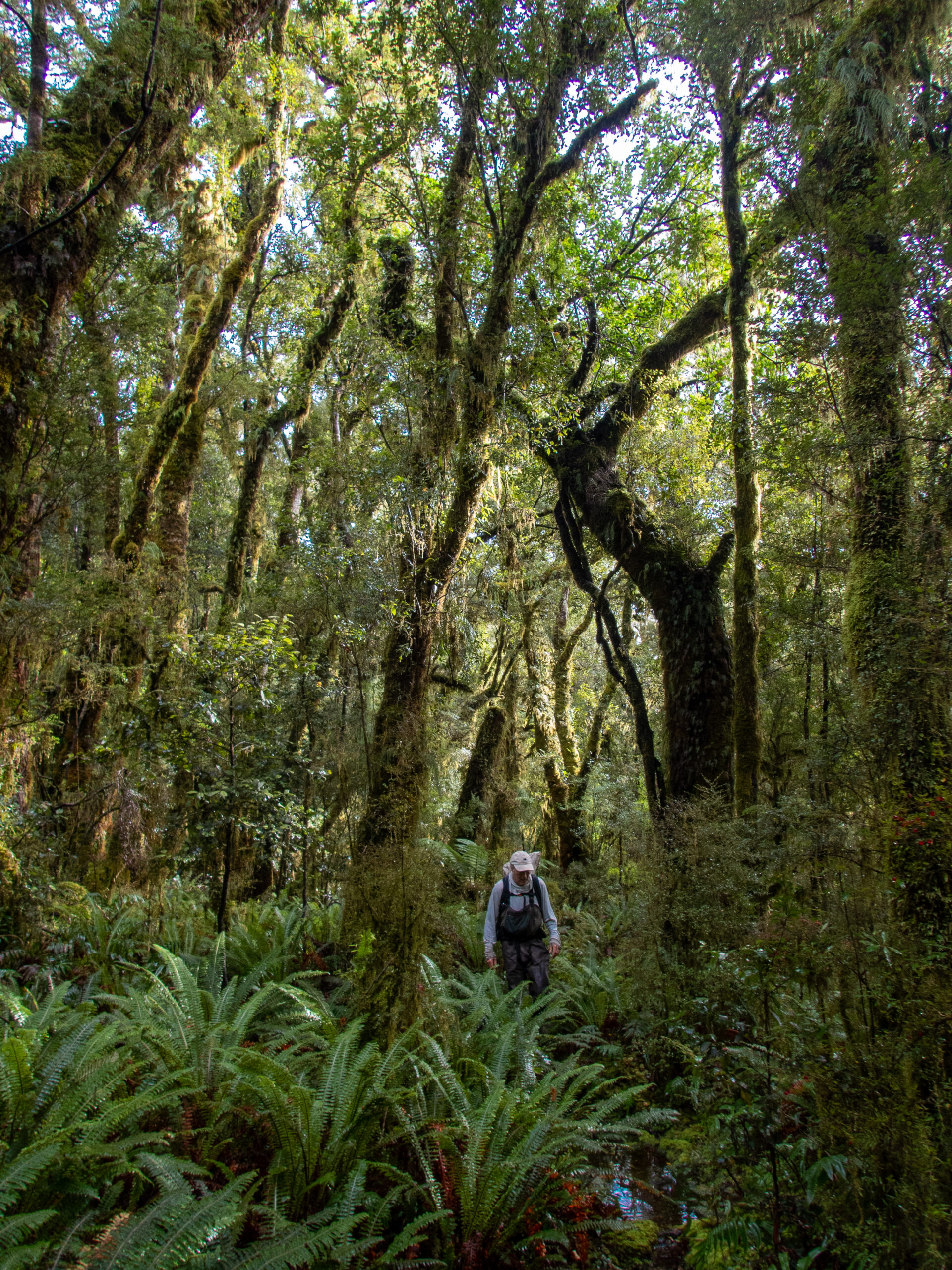

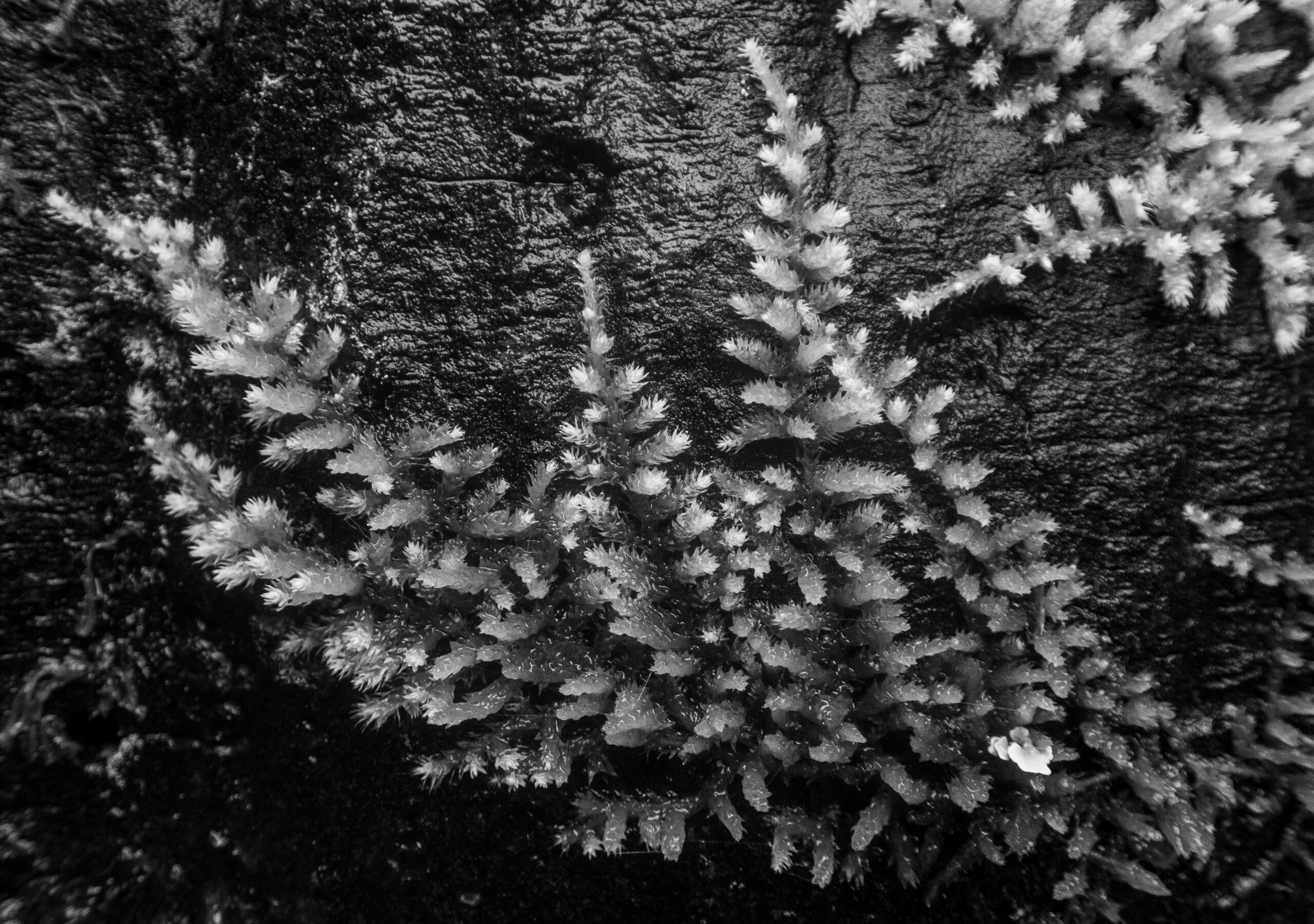

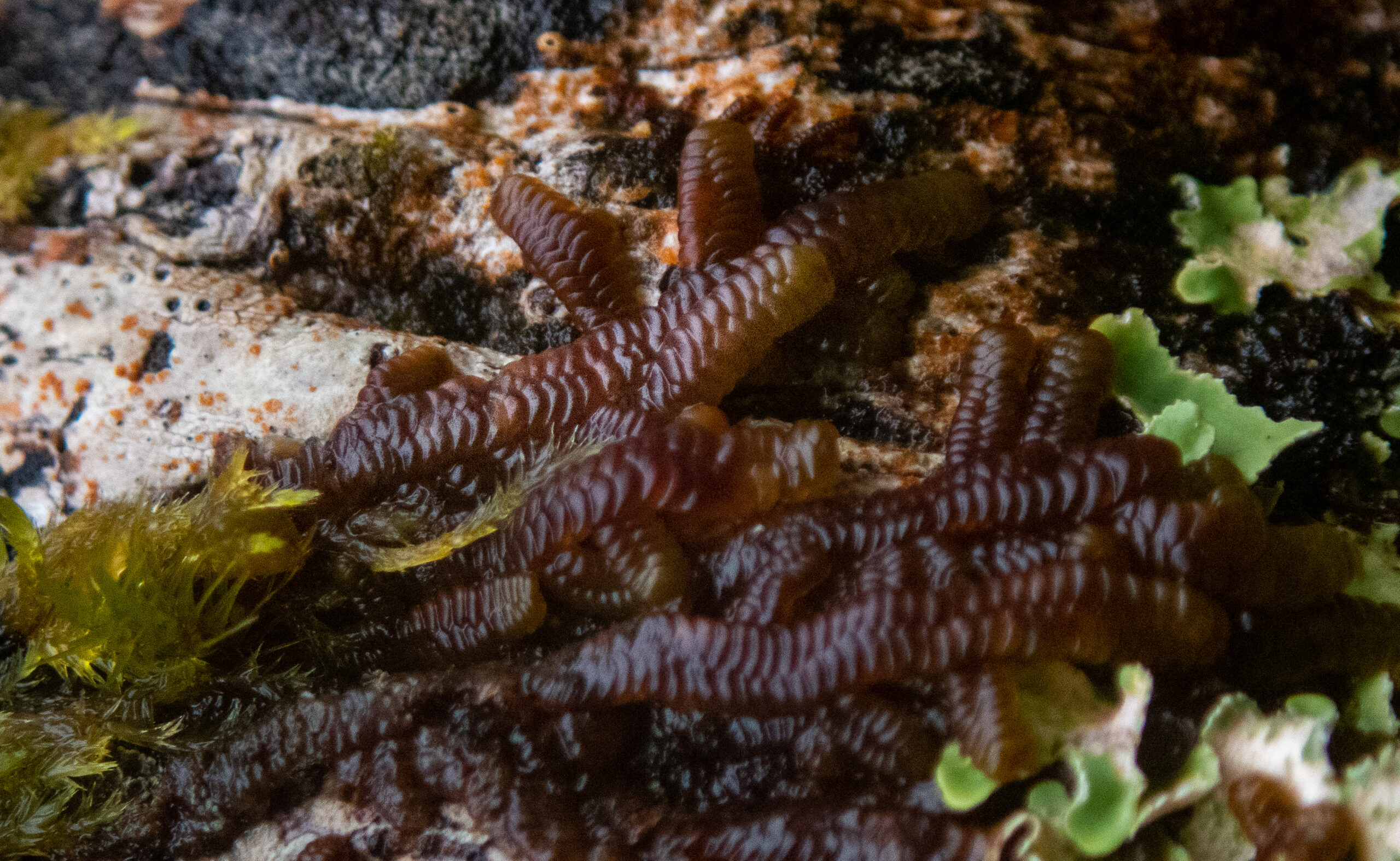
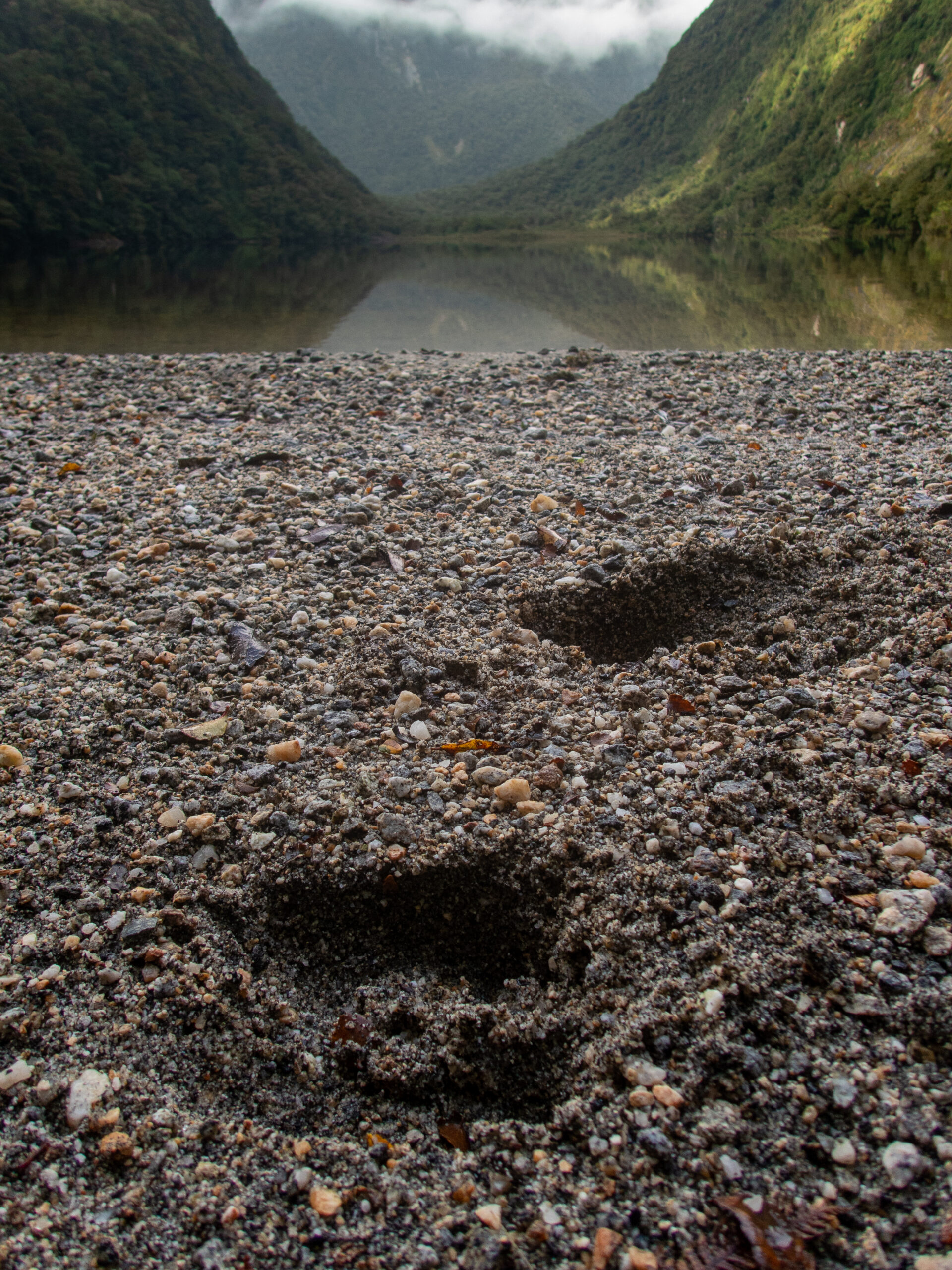
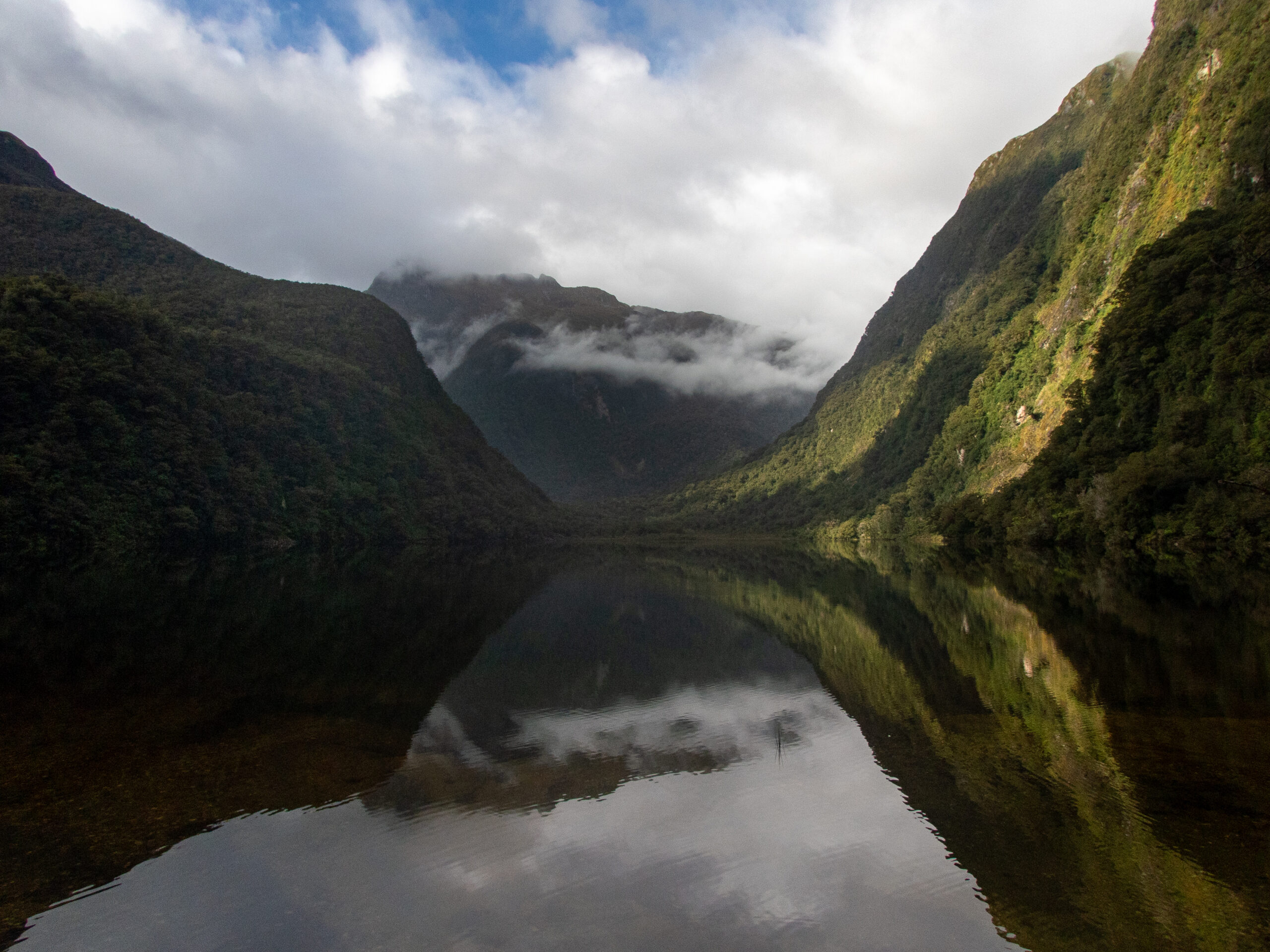


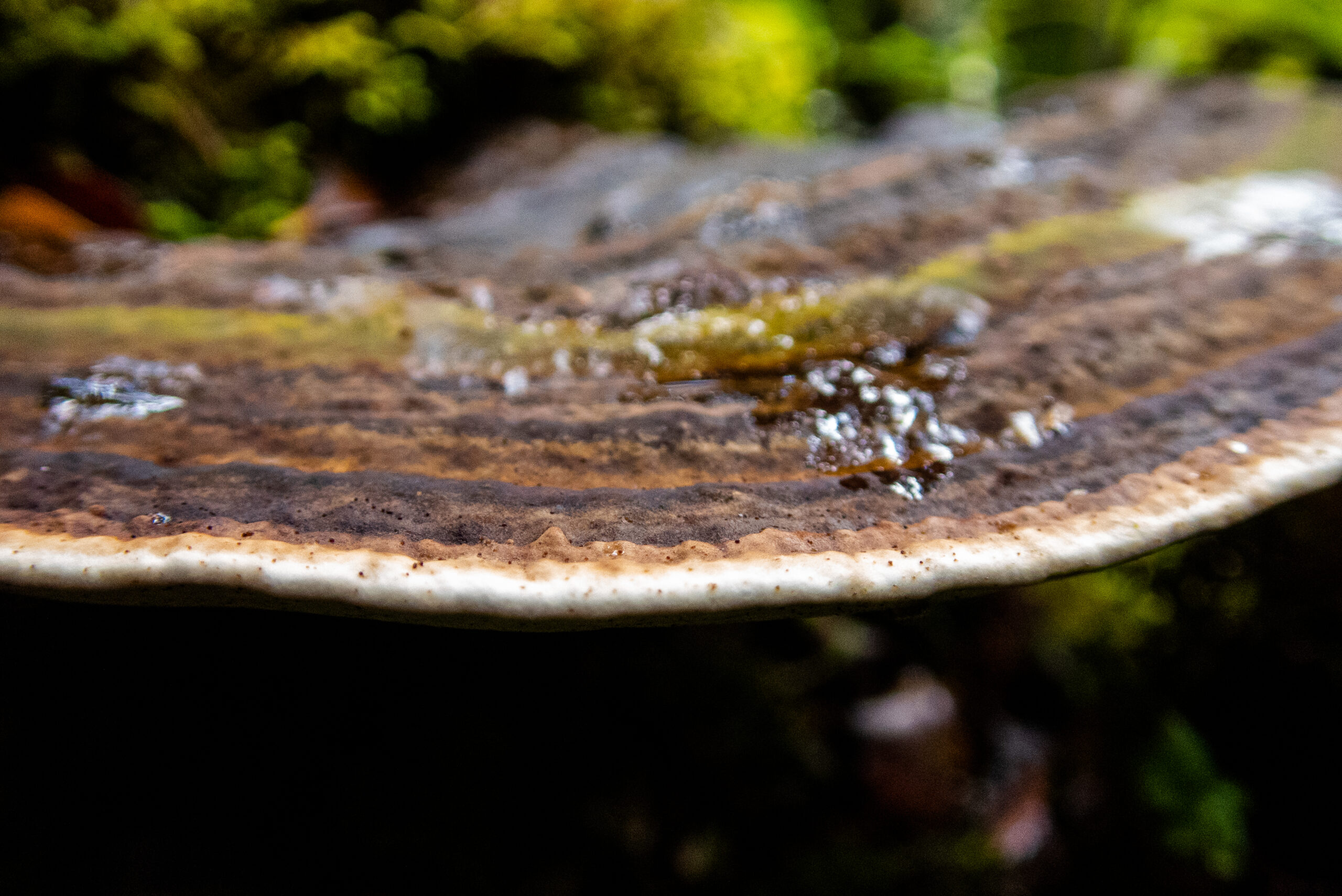
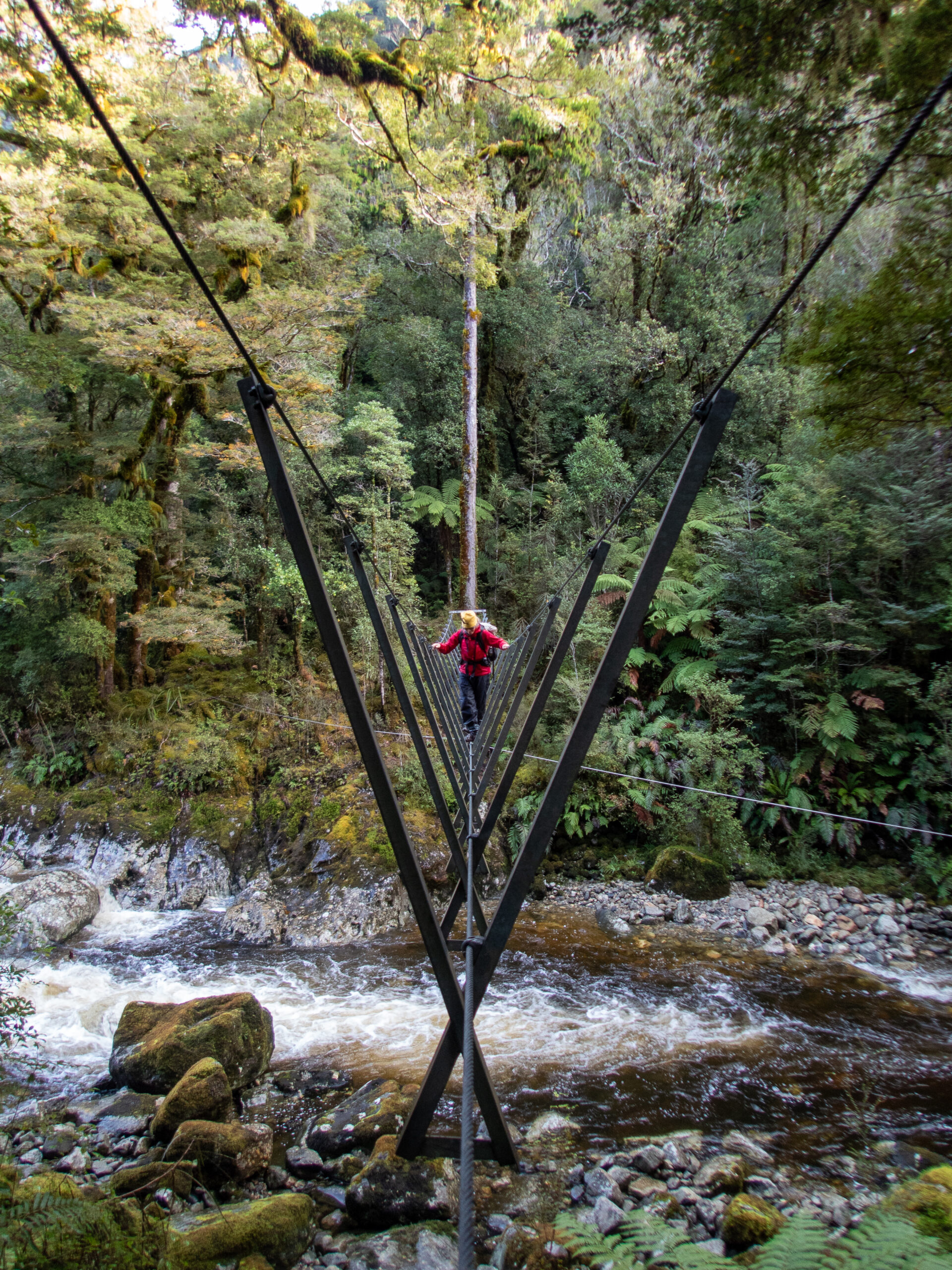
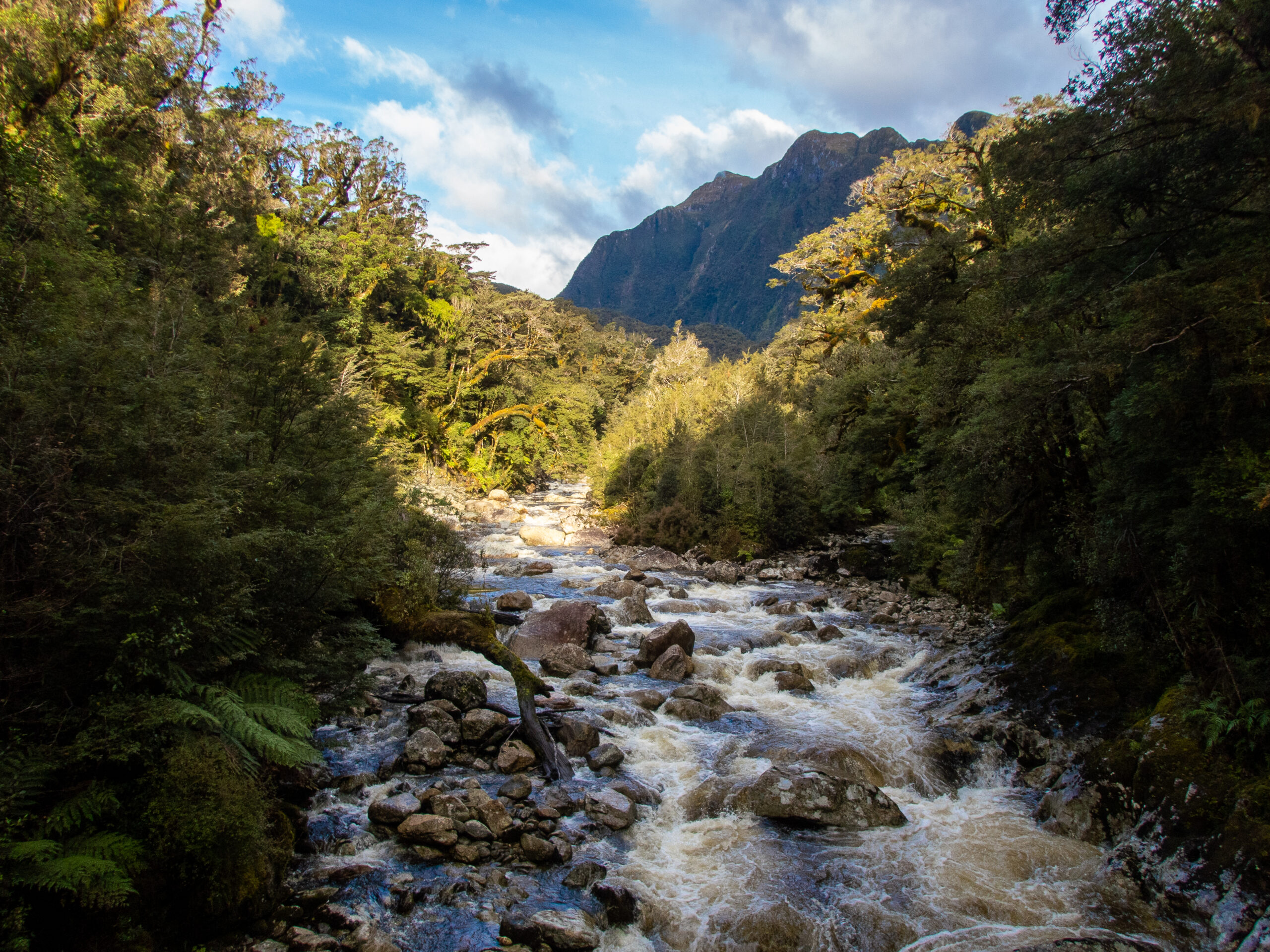
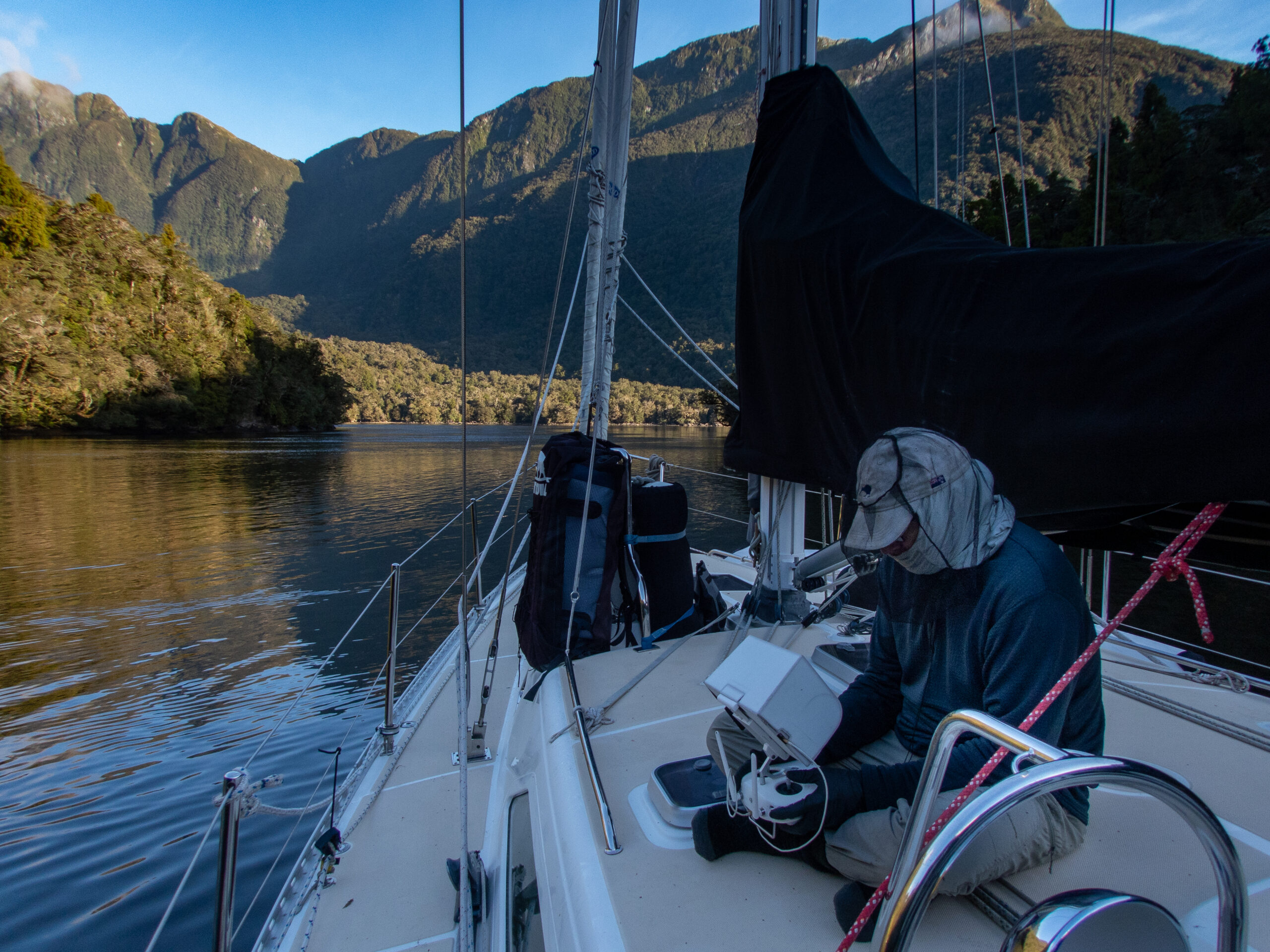

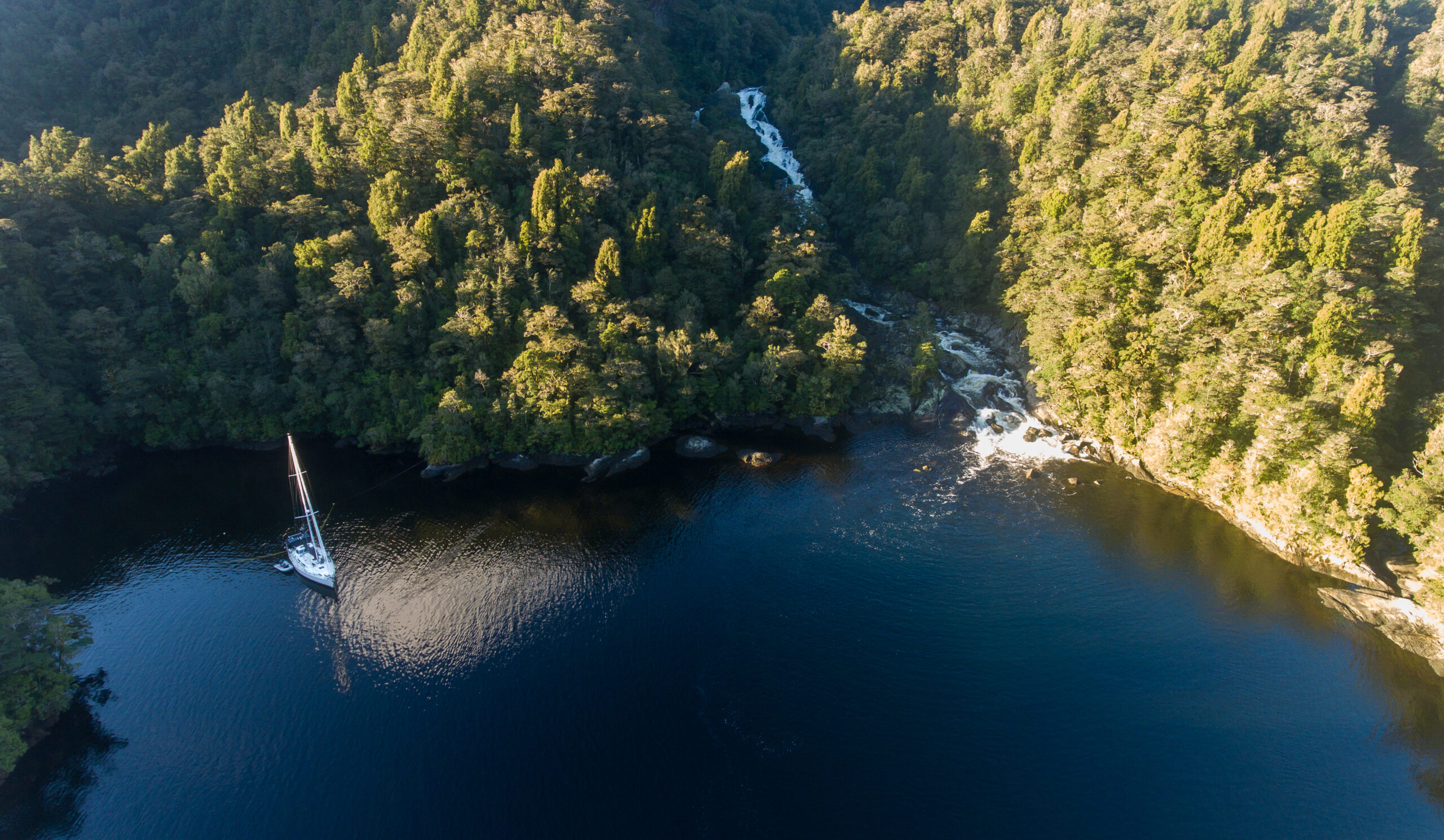
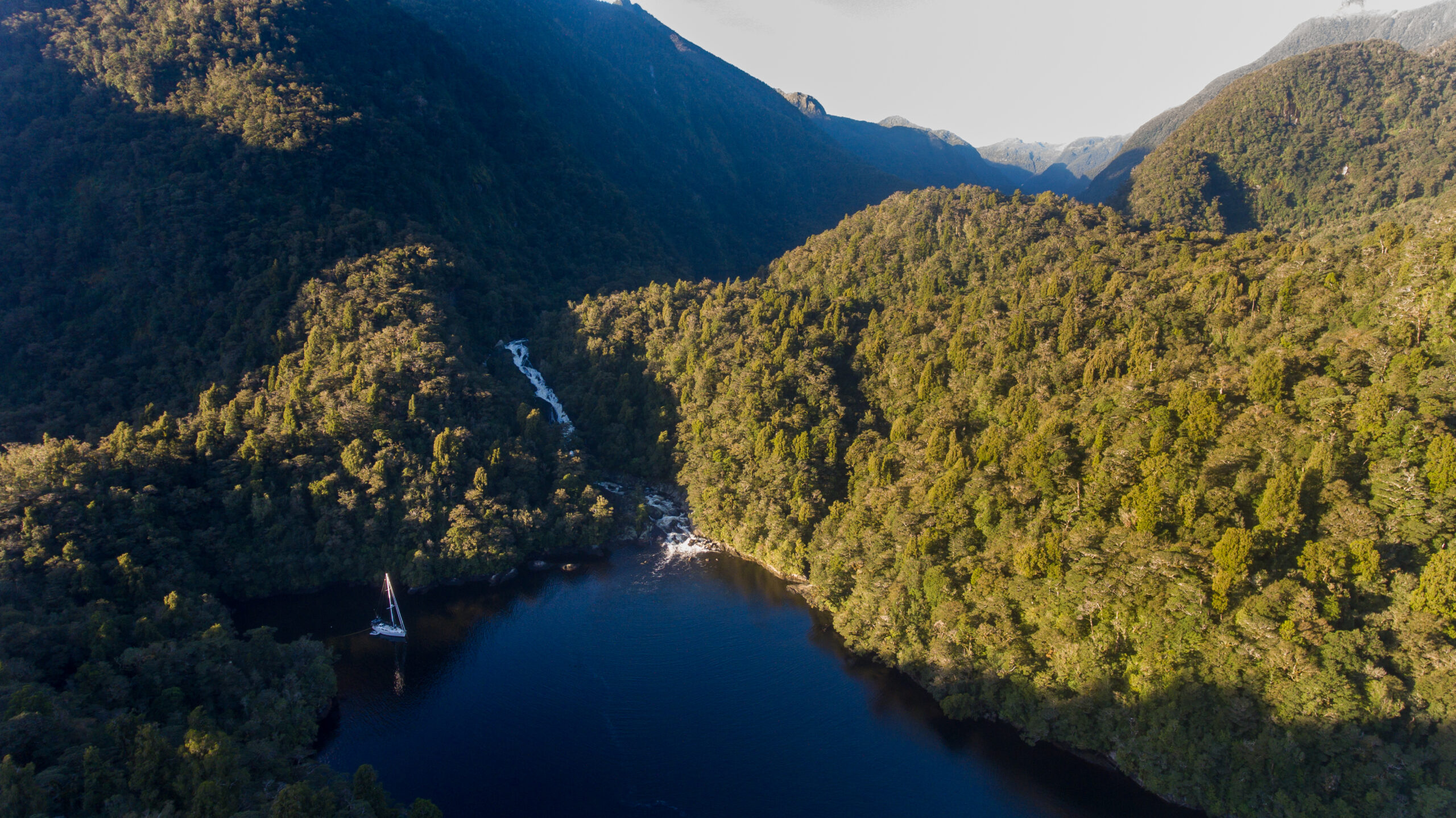
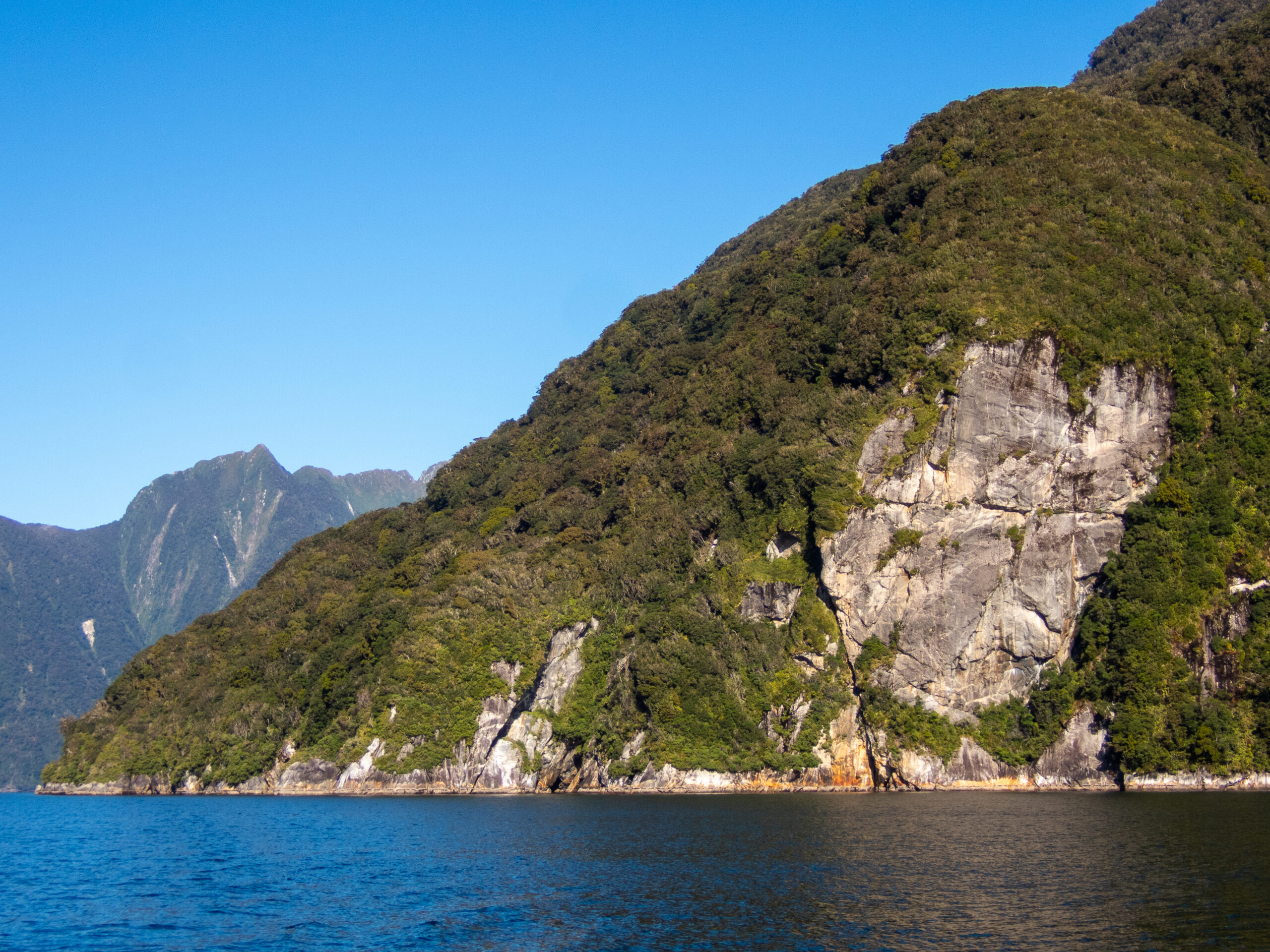
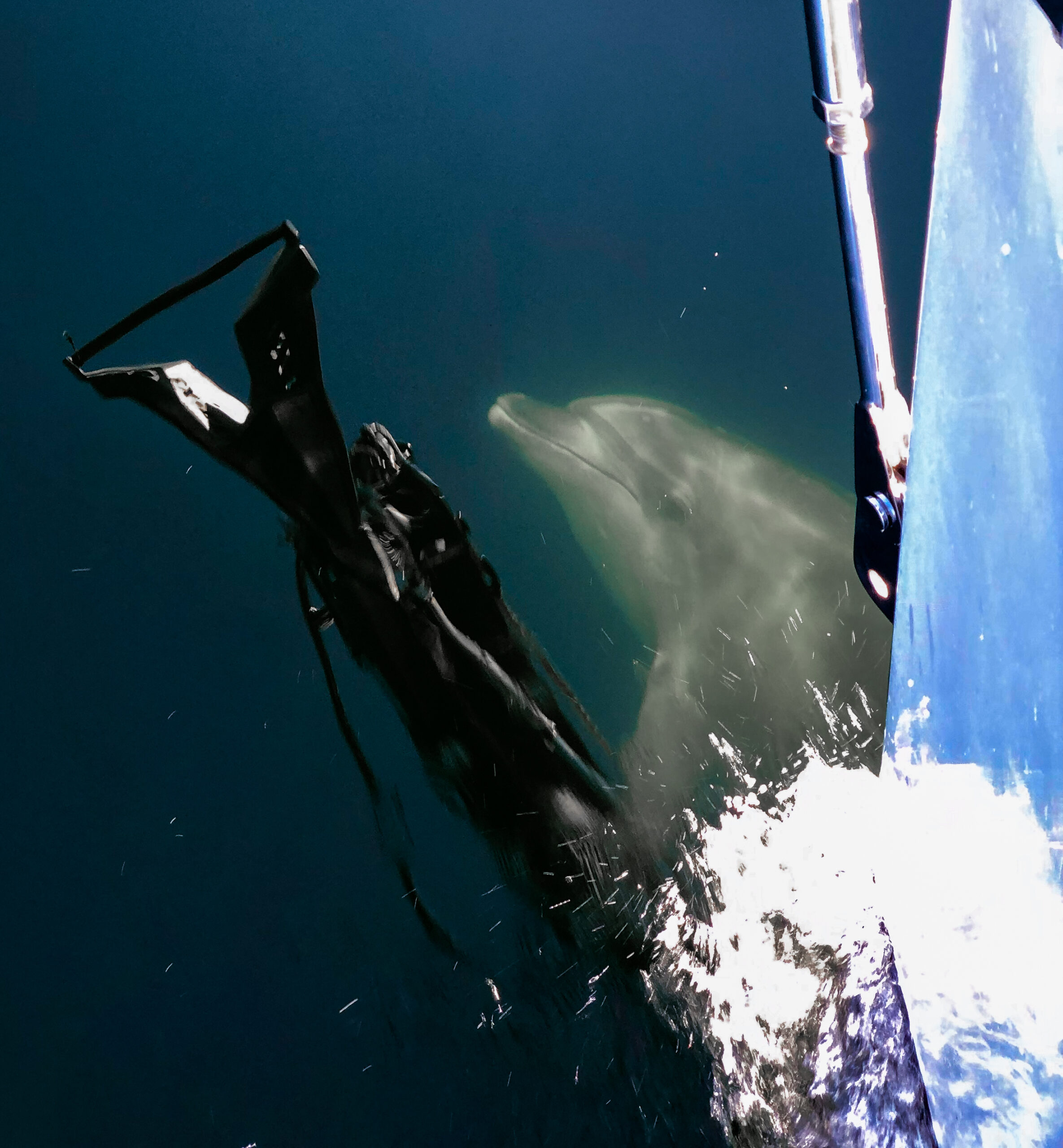
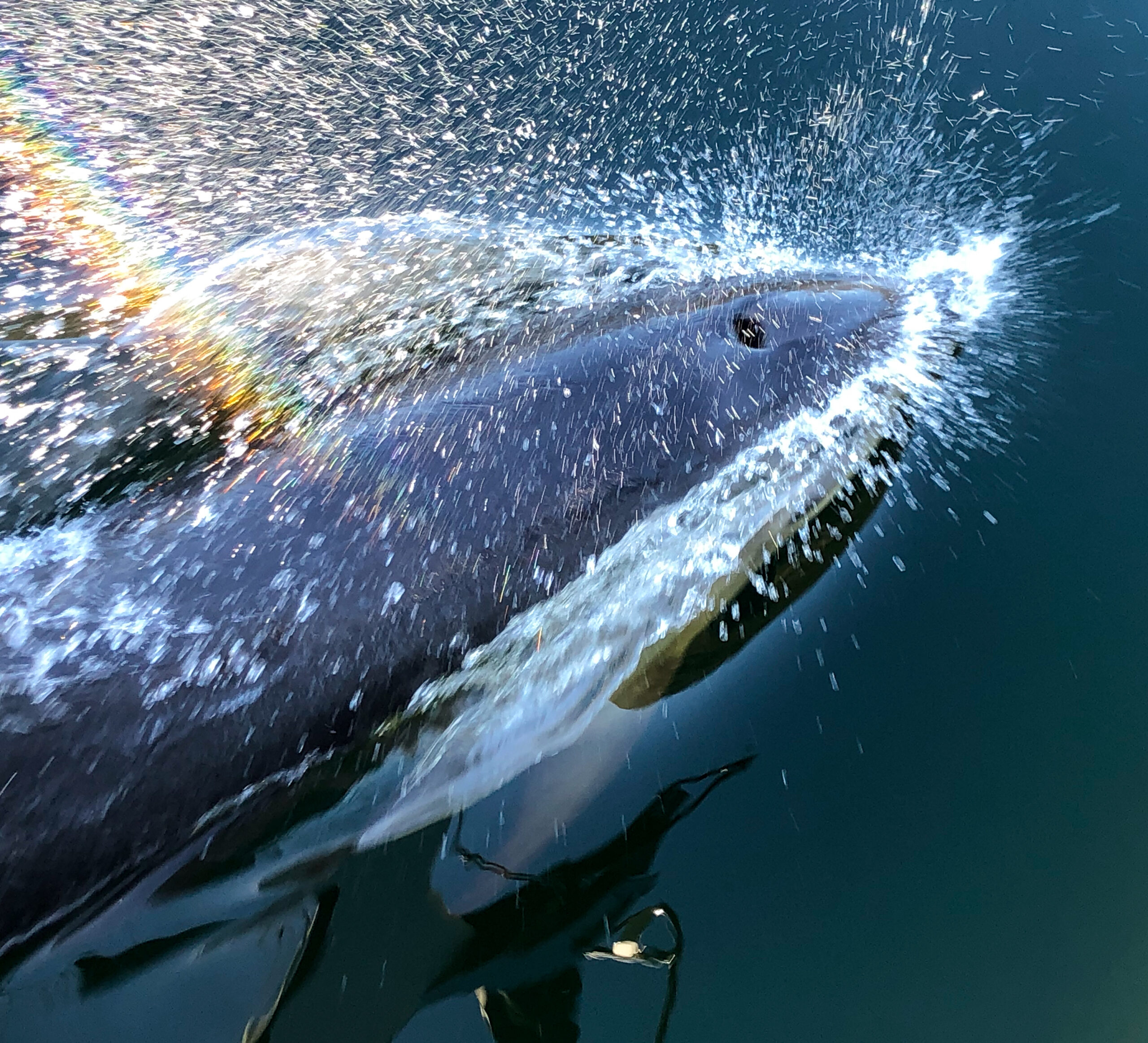
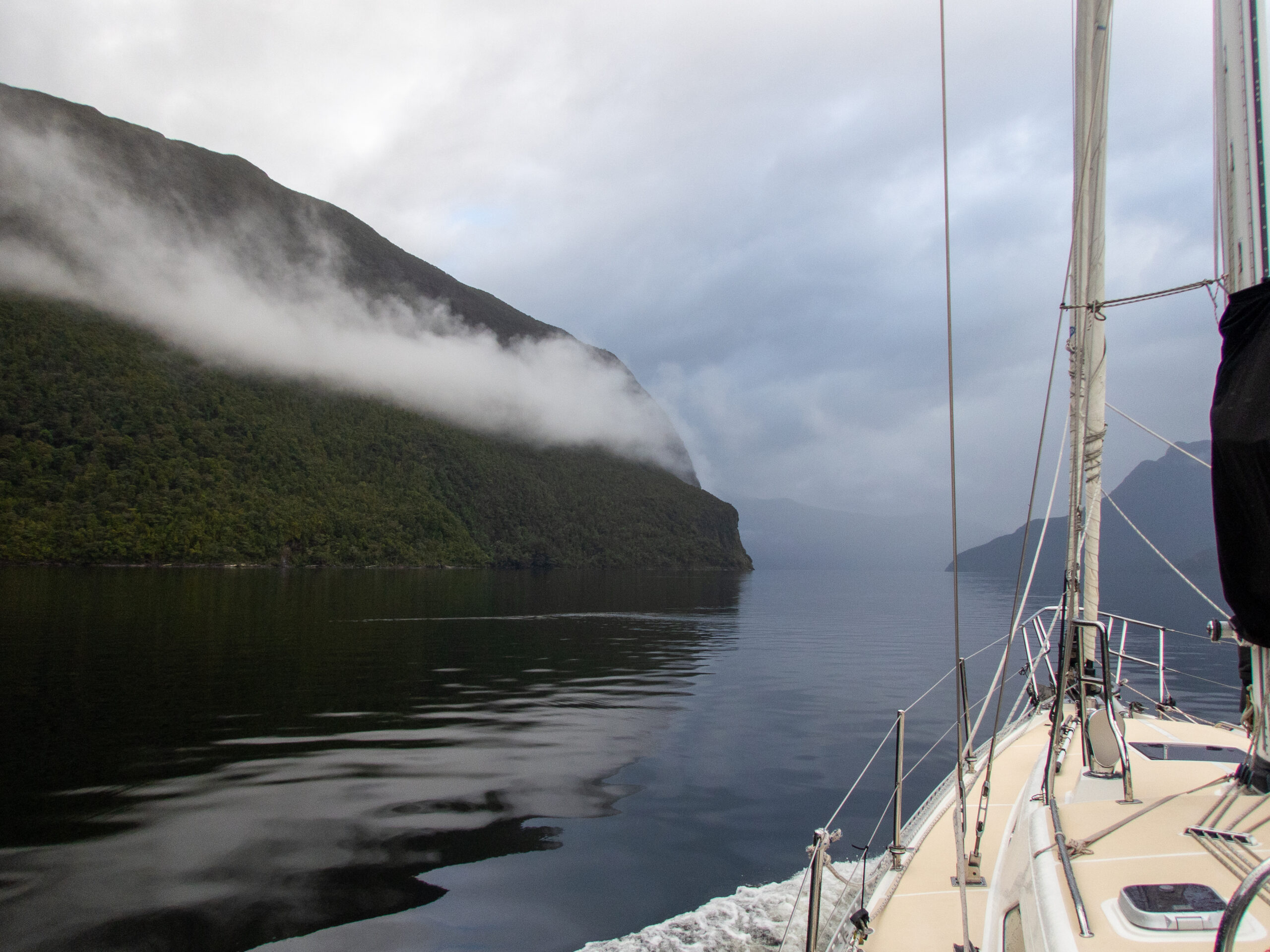
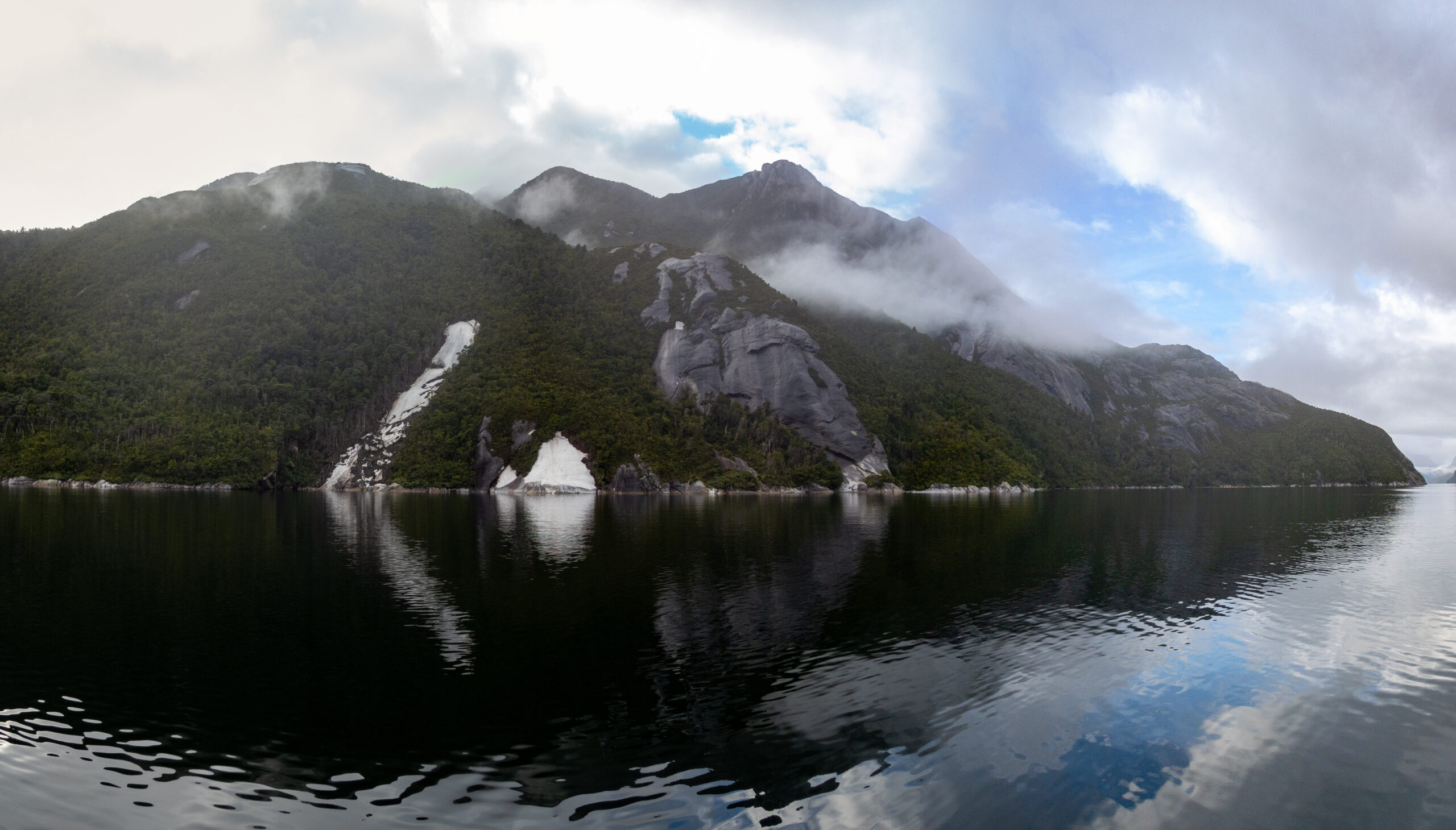
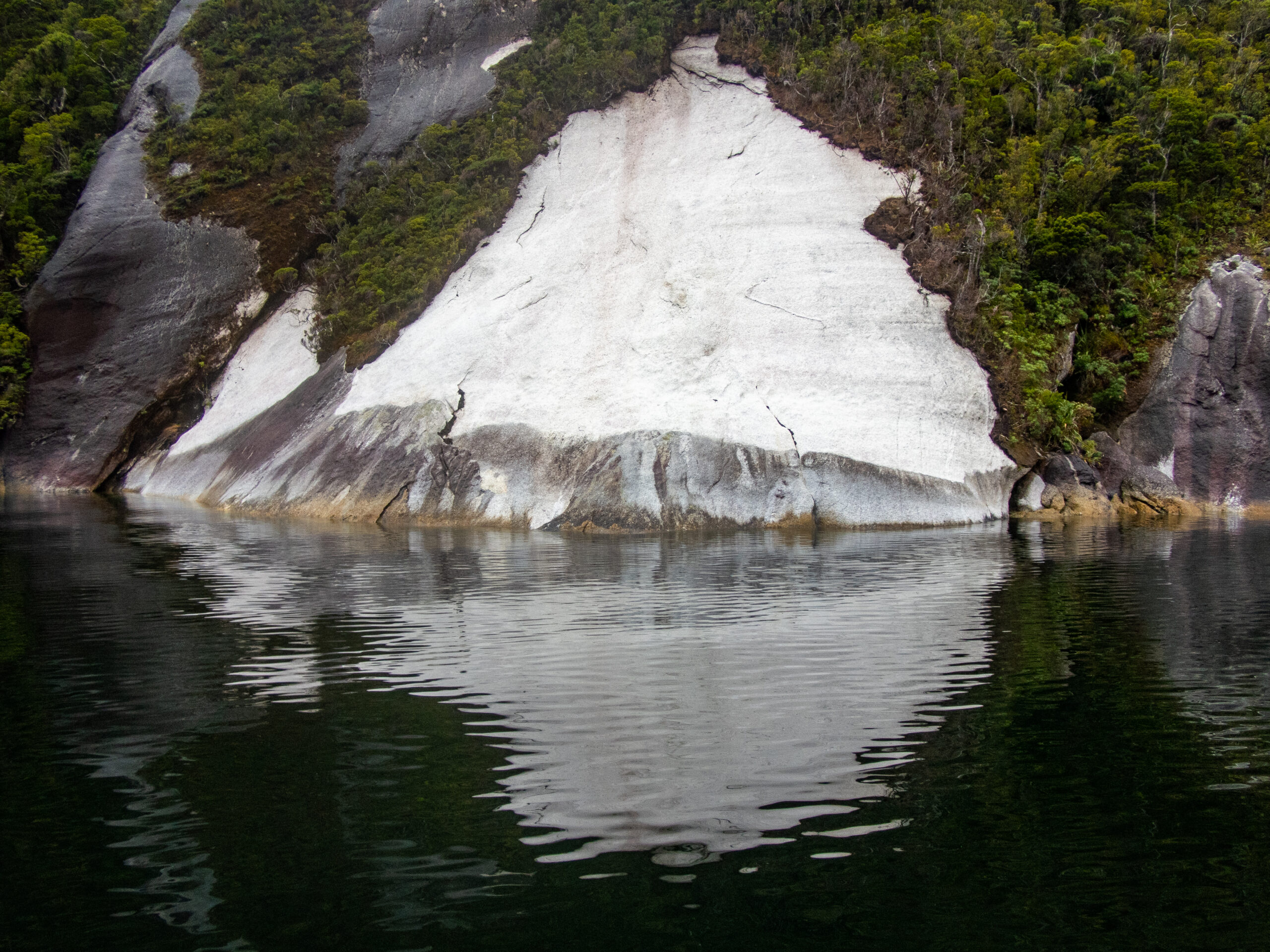
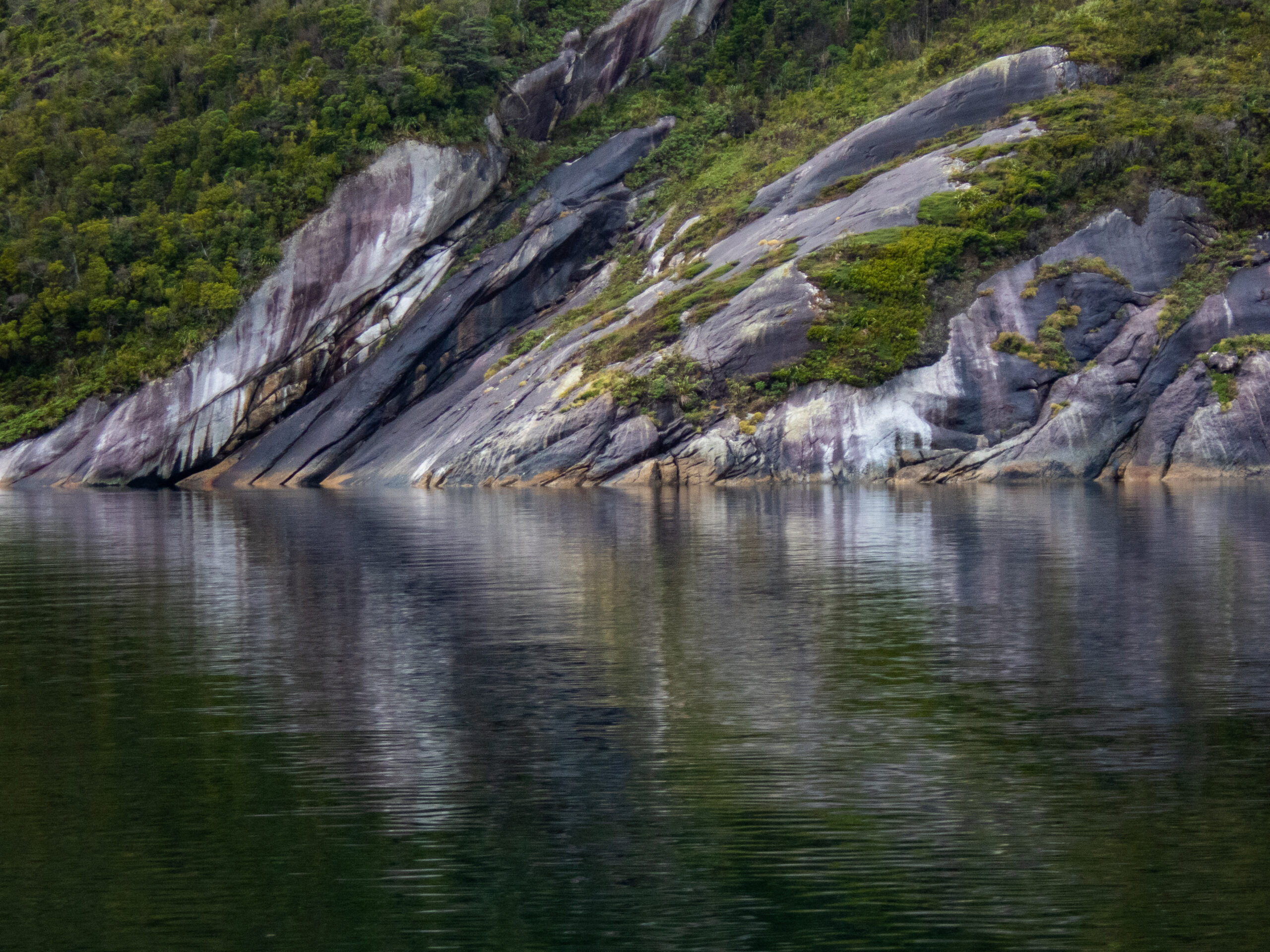
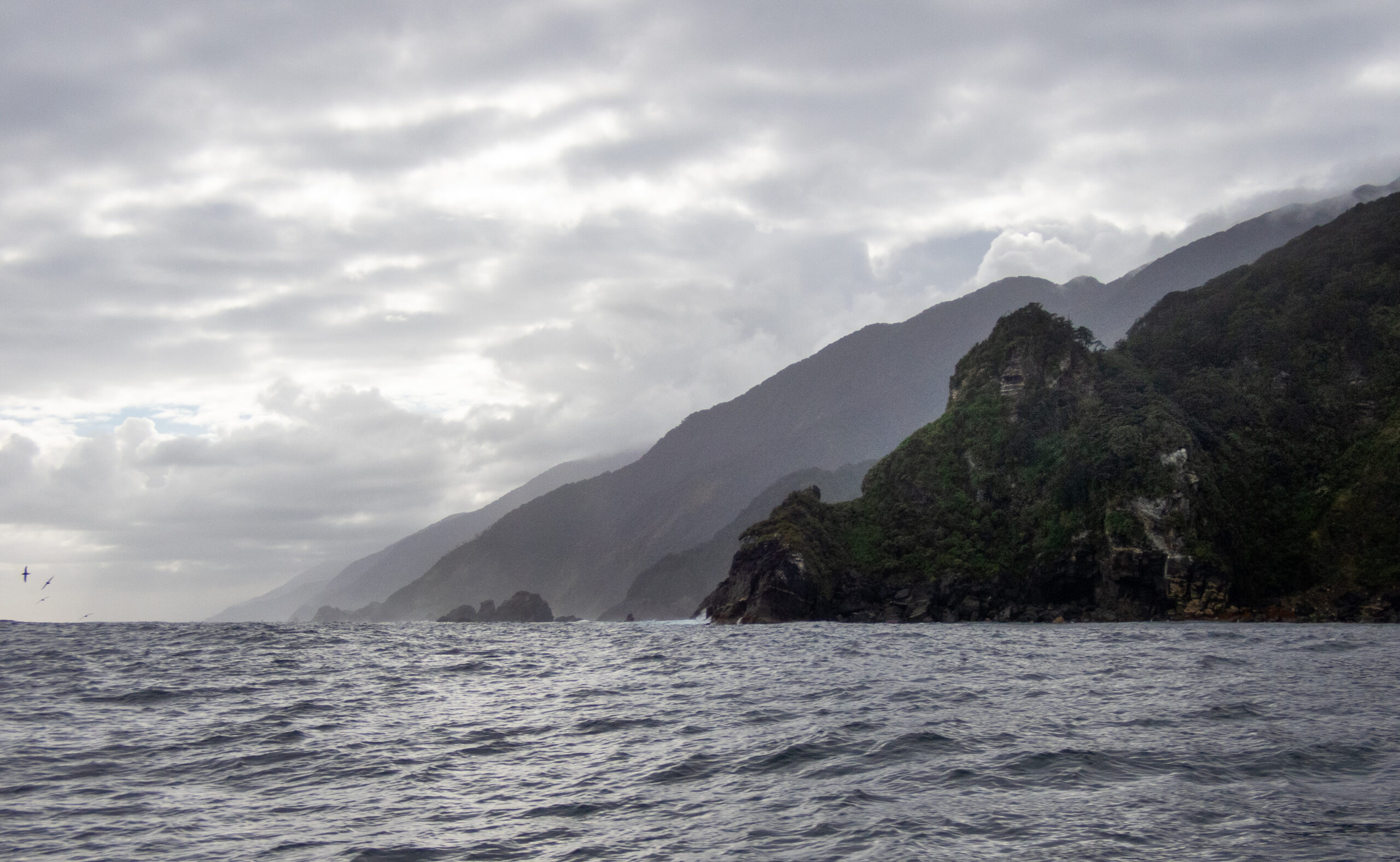
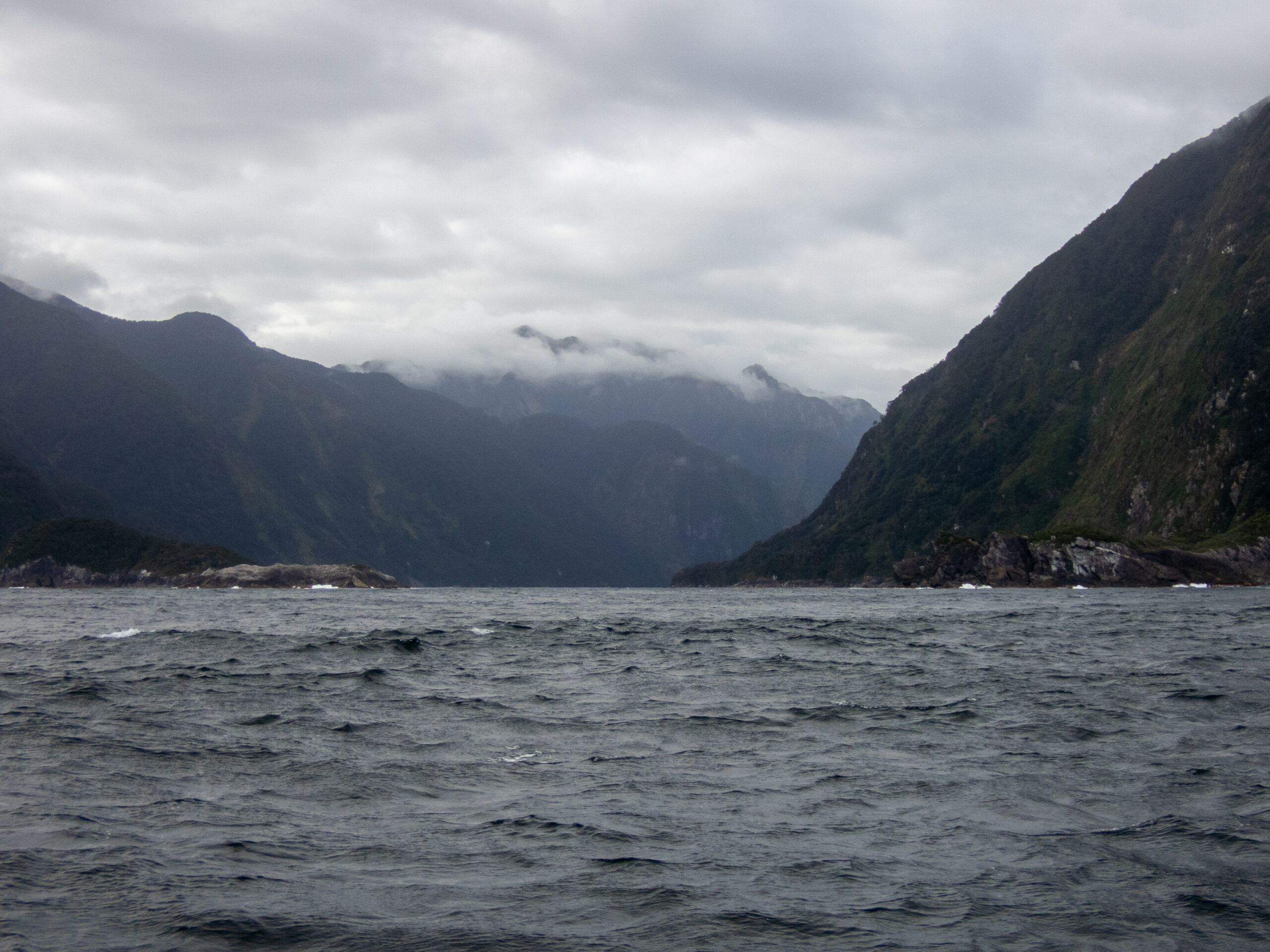

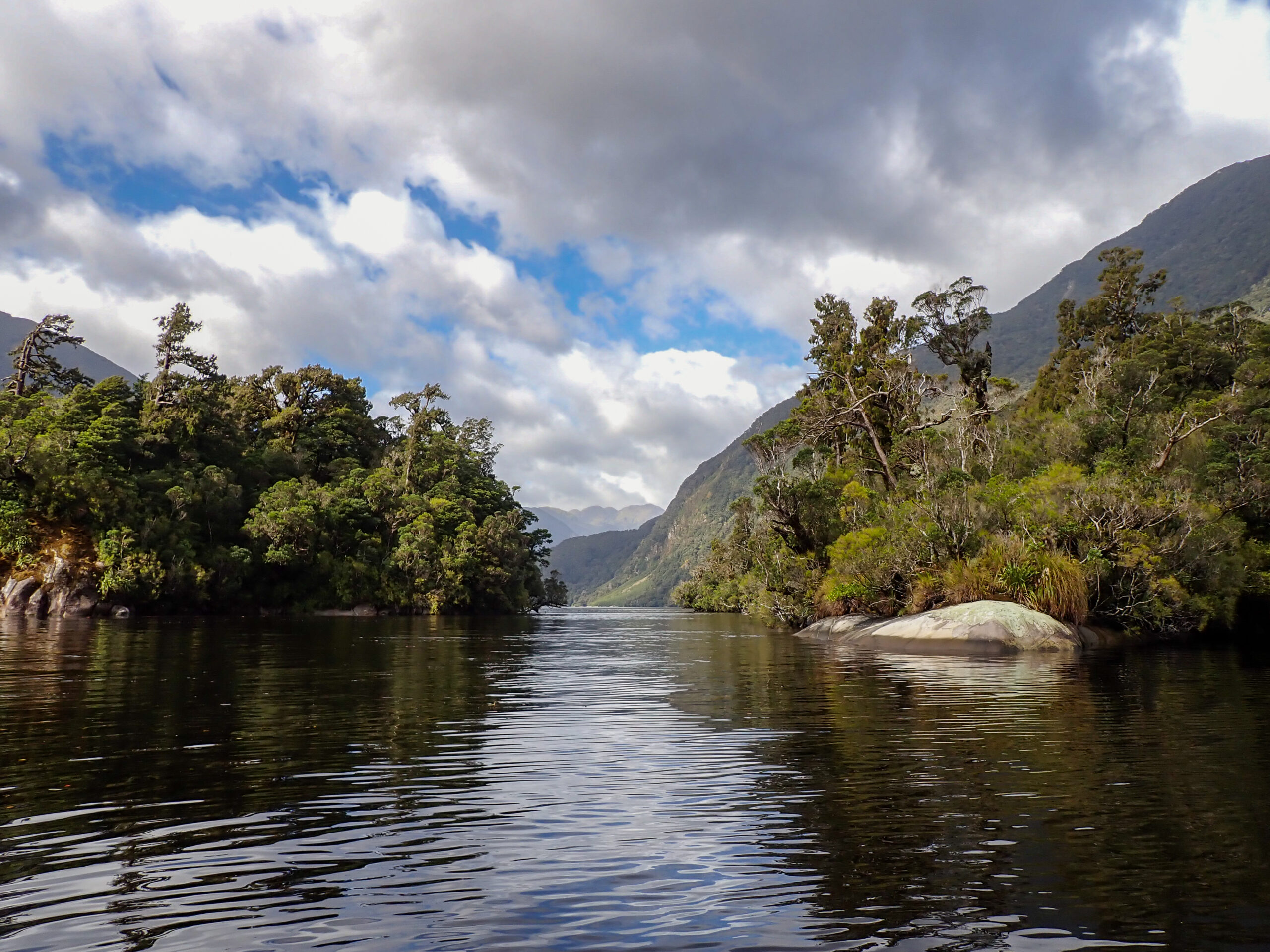
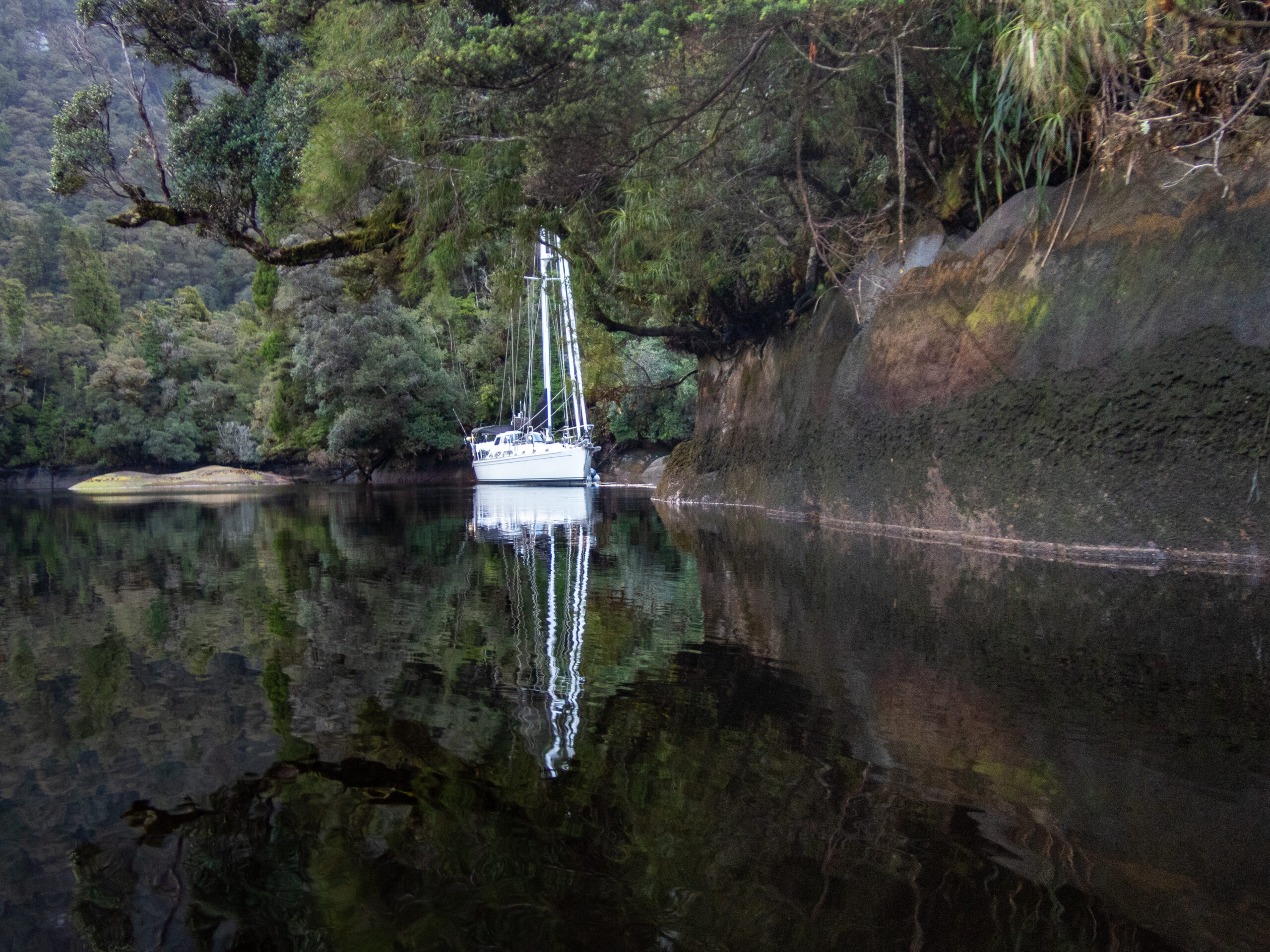


Abstracts
My favorite of Diana’s photographs from Fiordland are the “abstracts,” which she discovers by looking in a very careful, unique way, at the tidal line along the rocks, that magical transitional space between the hidden world underwater and the green, vibrant life-on-fire world above. Bare stone, stained and painted with time and color, bent and reflected by the still, secret, freshwater shimmering over the tide, the infinite, creative capacity of nature. Diana uses framing to share this vision, to point out Nature’s mastery of abstract art. It’s no surprise (and no accident) that these images feel so profoundly connected to her mosaic work. Most of the time these photographic expeditions are her solo meditations, which she shares with me when she gets back to Allora (after hours in the kayak!). But I’ve also been with her, paddling Namo gently into position, sitting right next to her, appreciating the wholeness of a beautiful place but without quite seeing what she is seeing. These images, for me, represent a particular (and particularly magical) collaboration between Diana and this very, very special world we are navigating in Fiordland.~MS
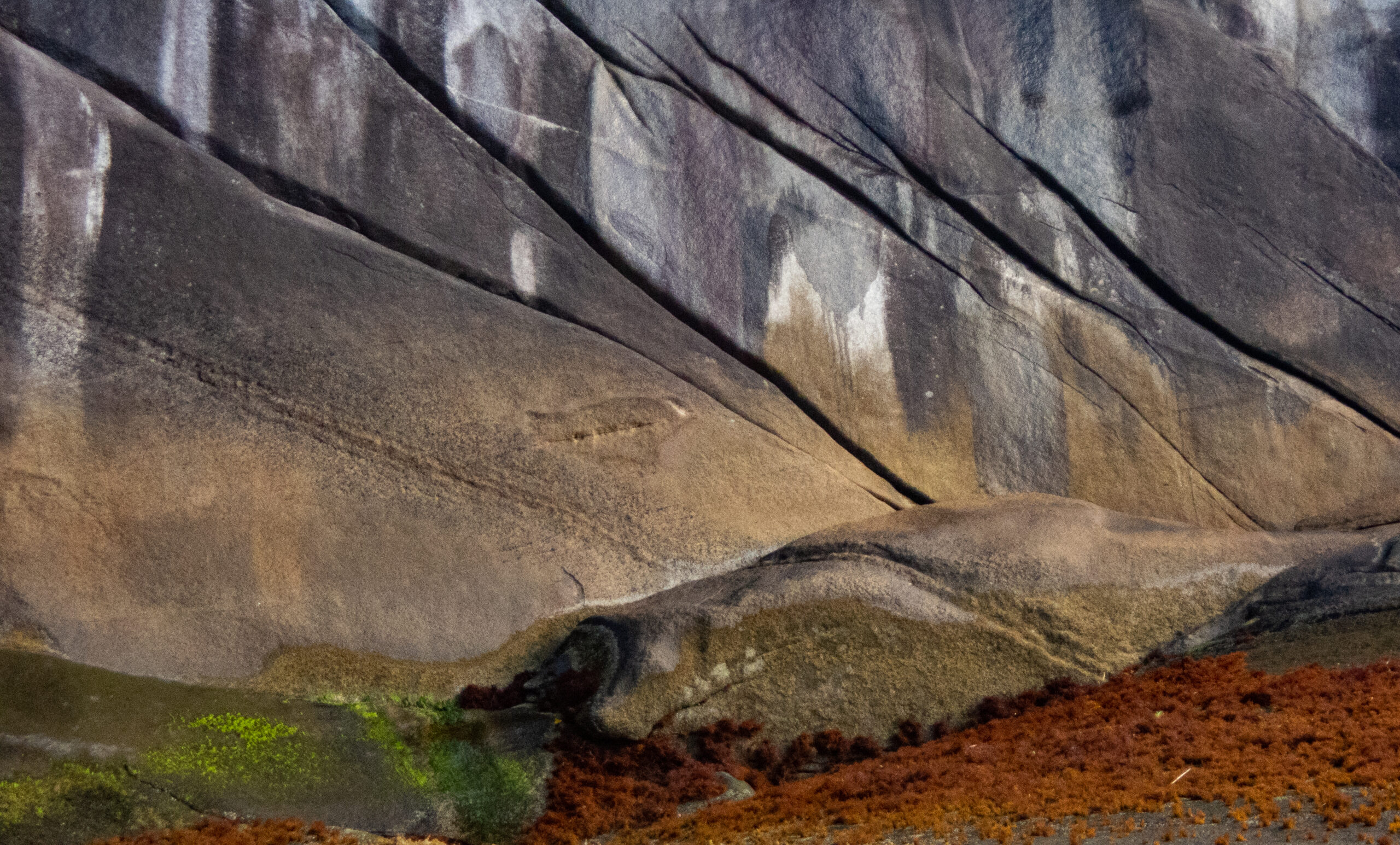

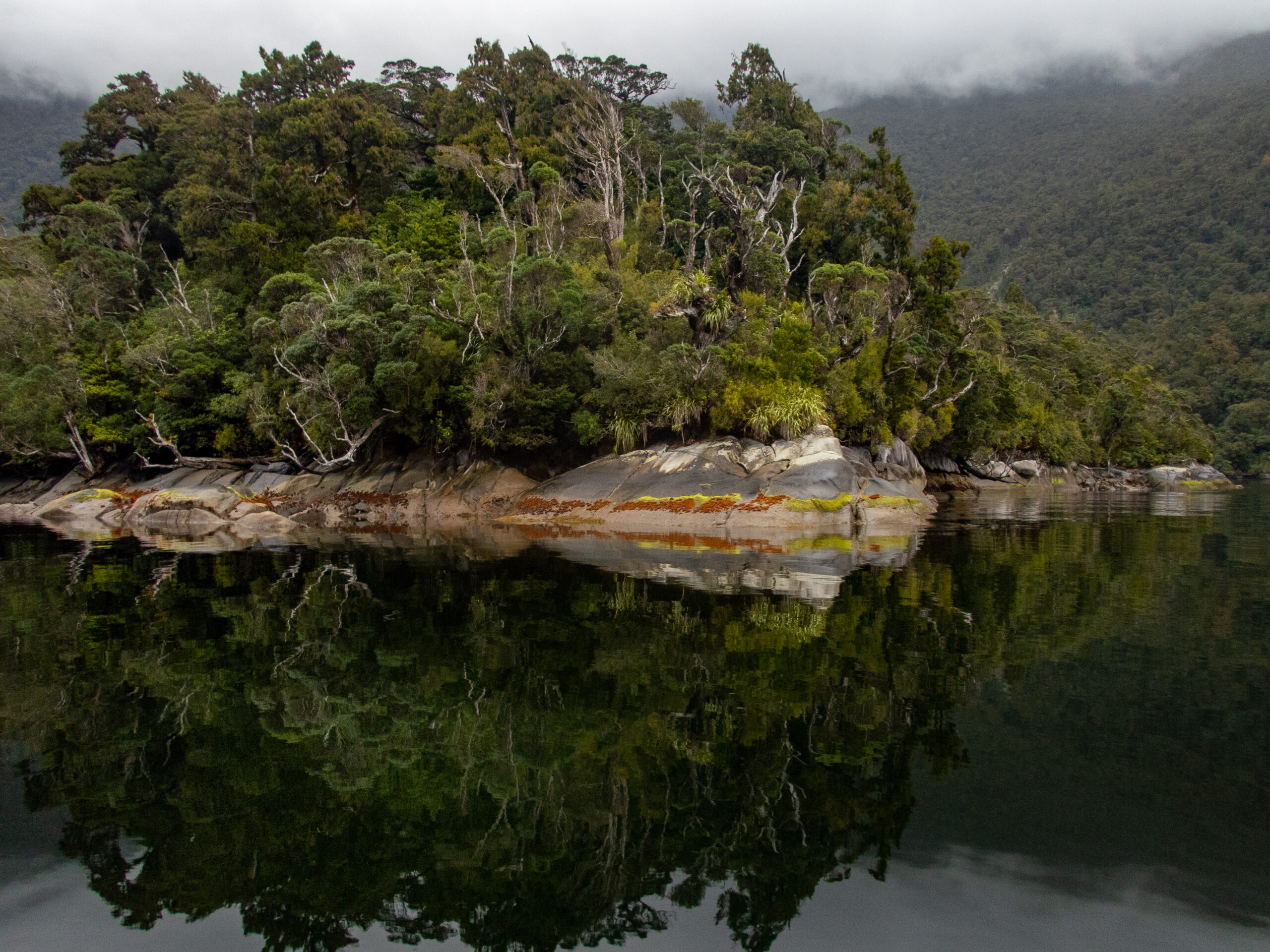
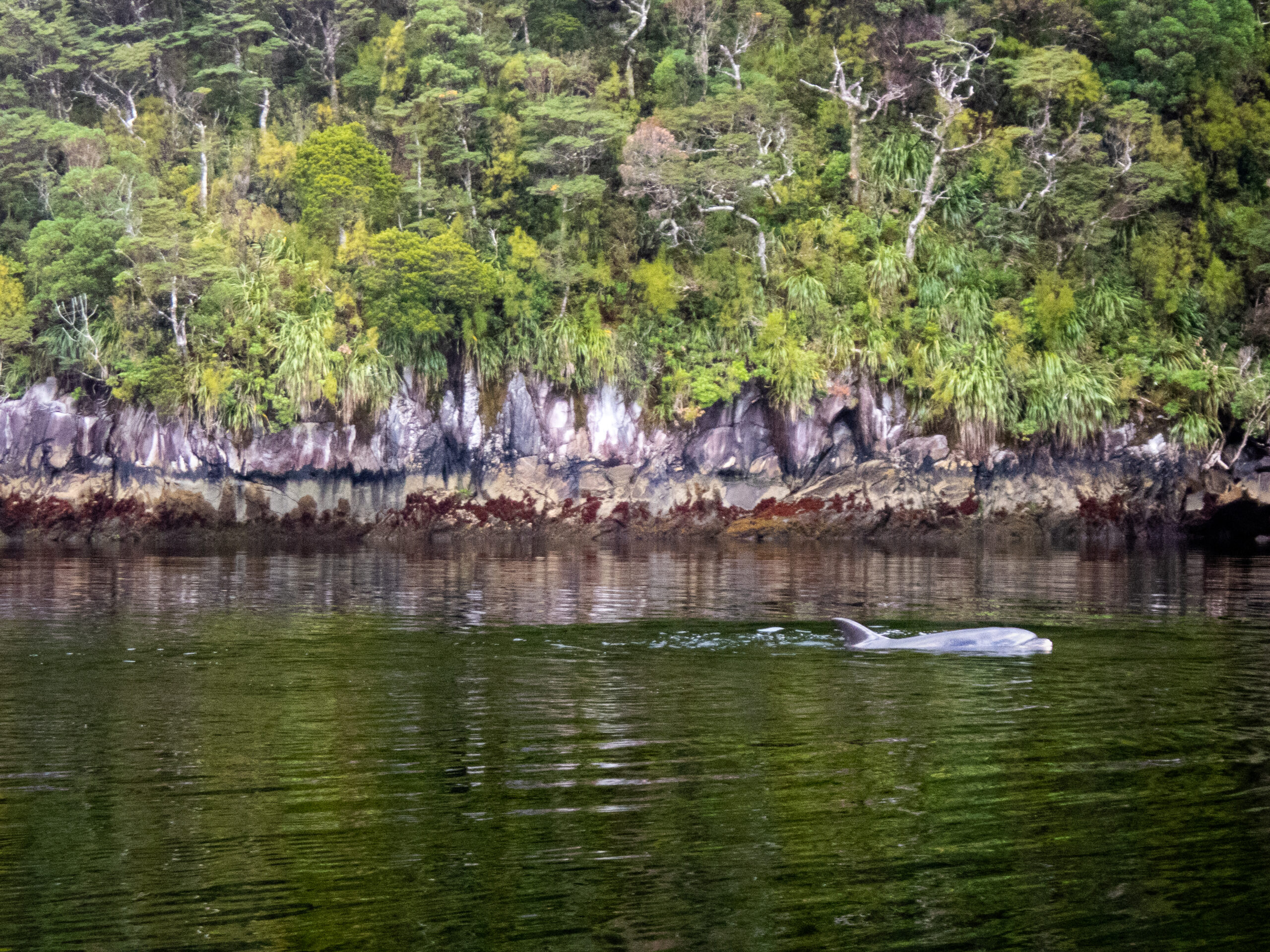
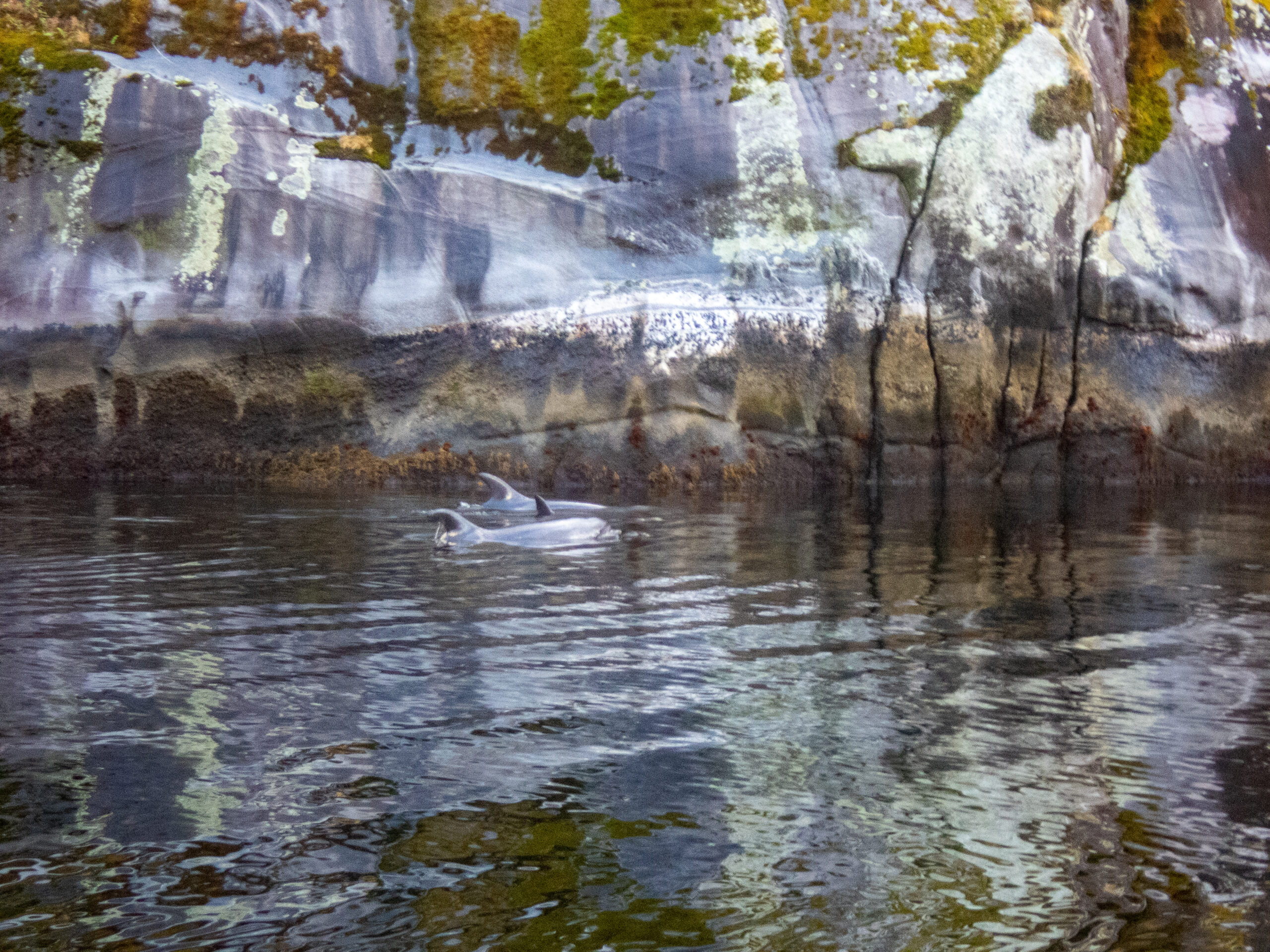
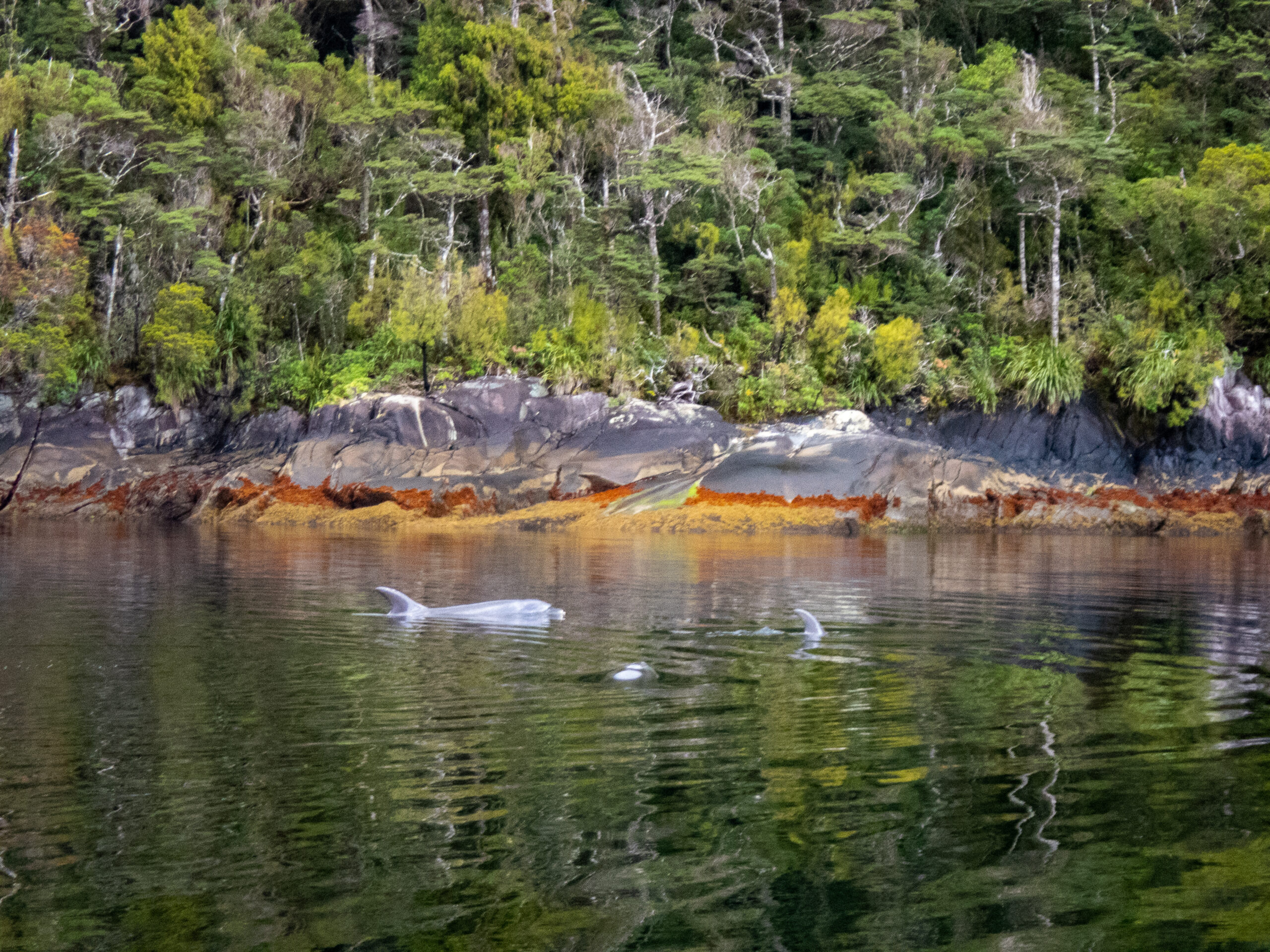


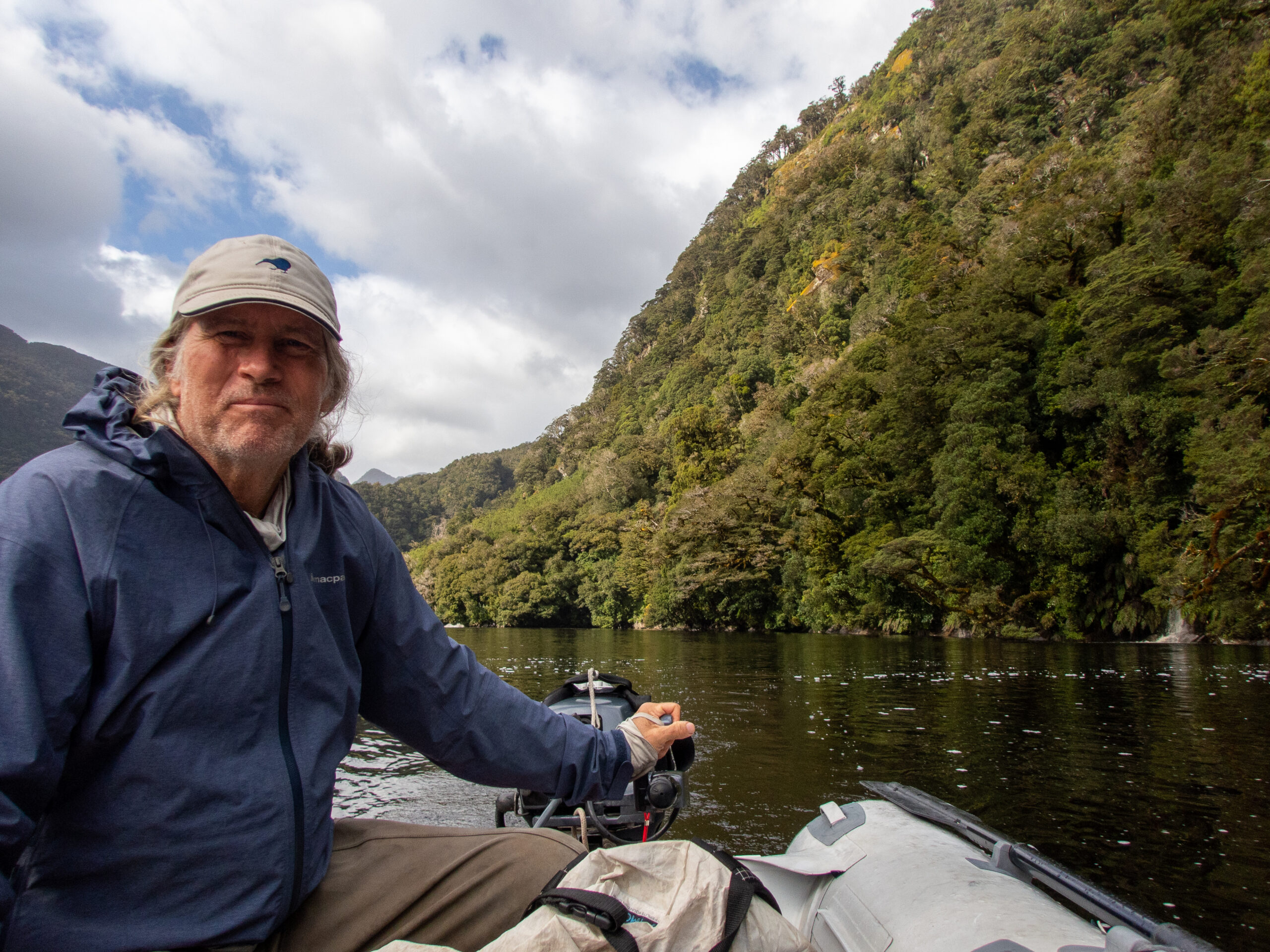
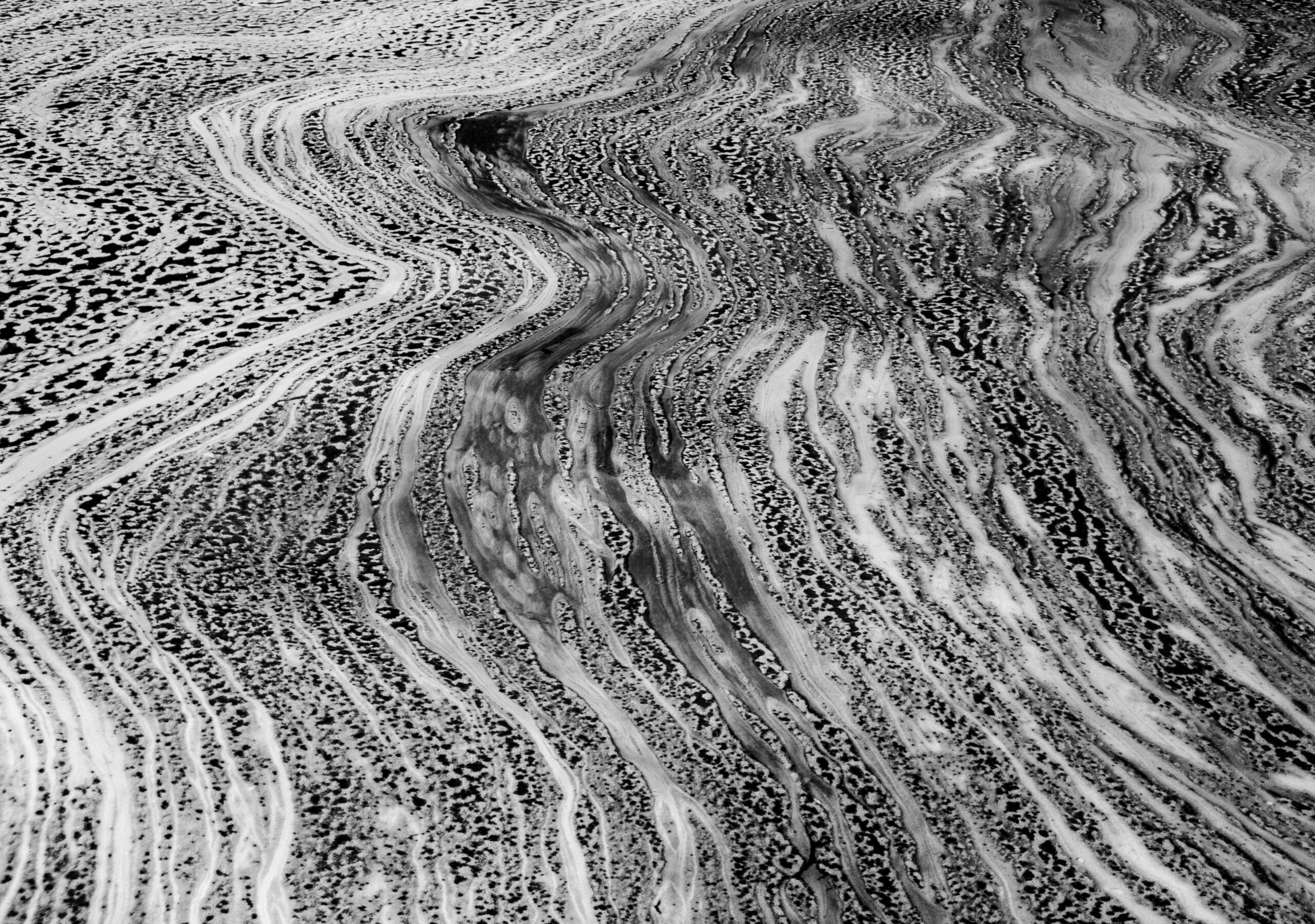
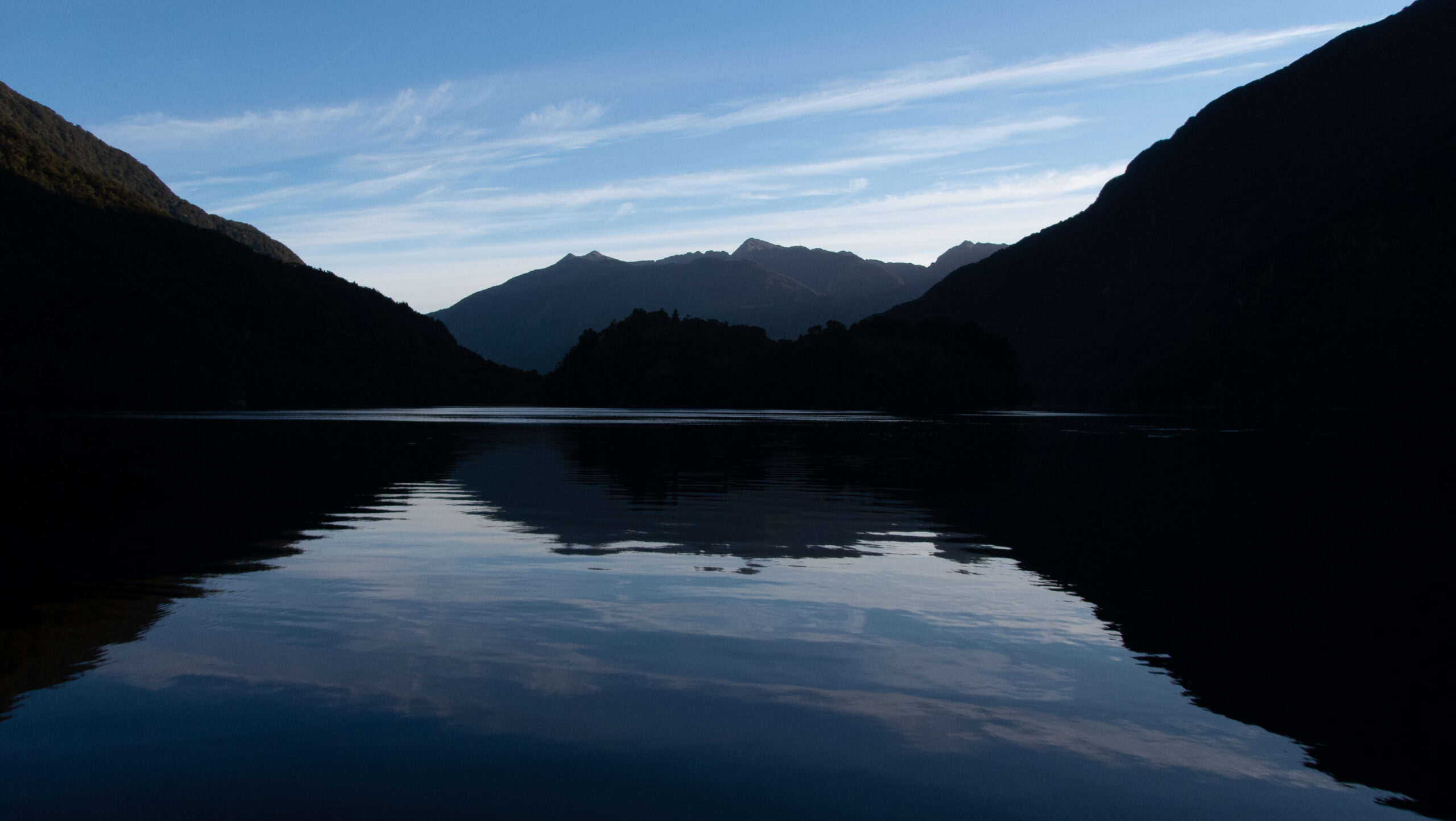

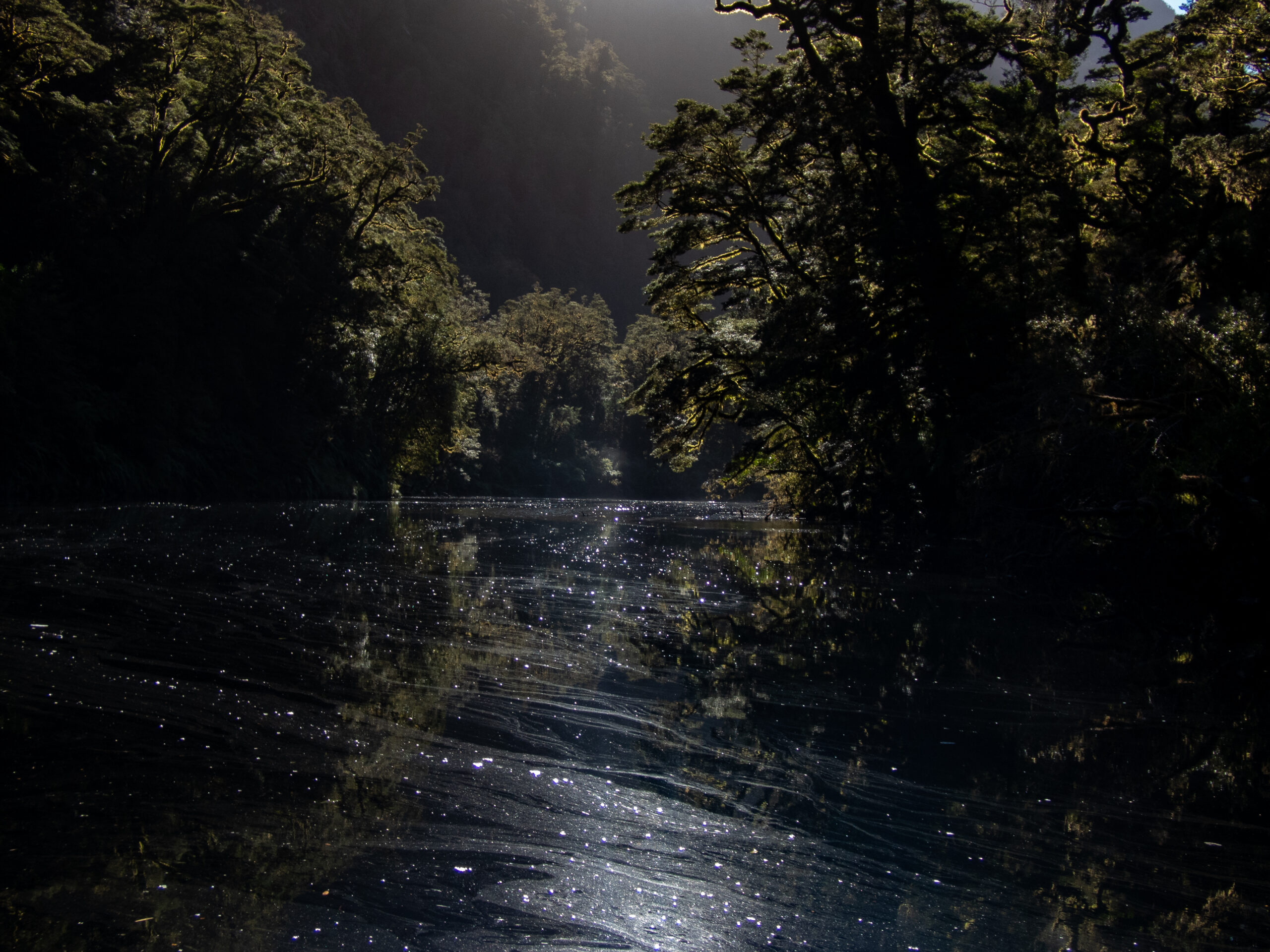
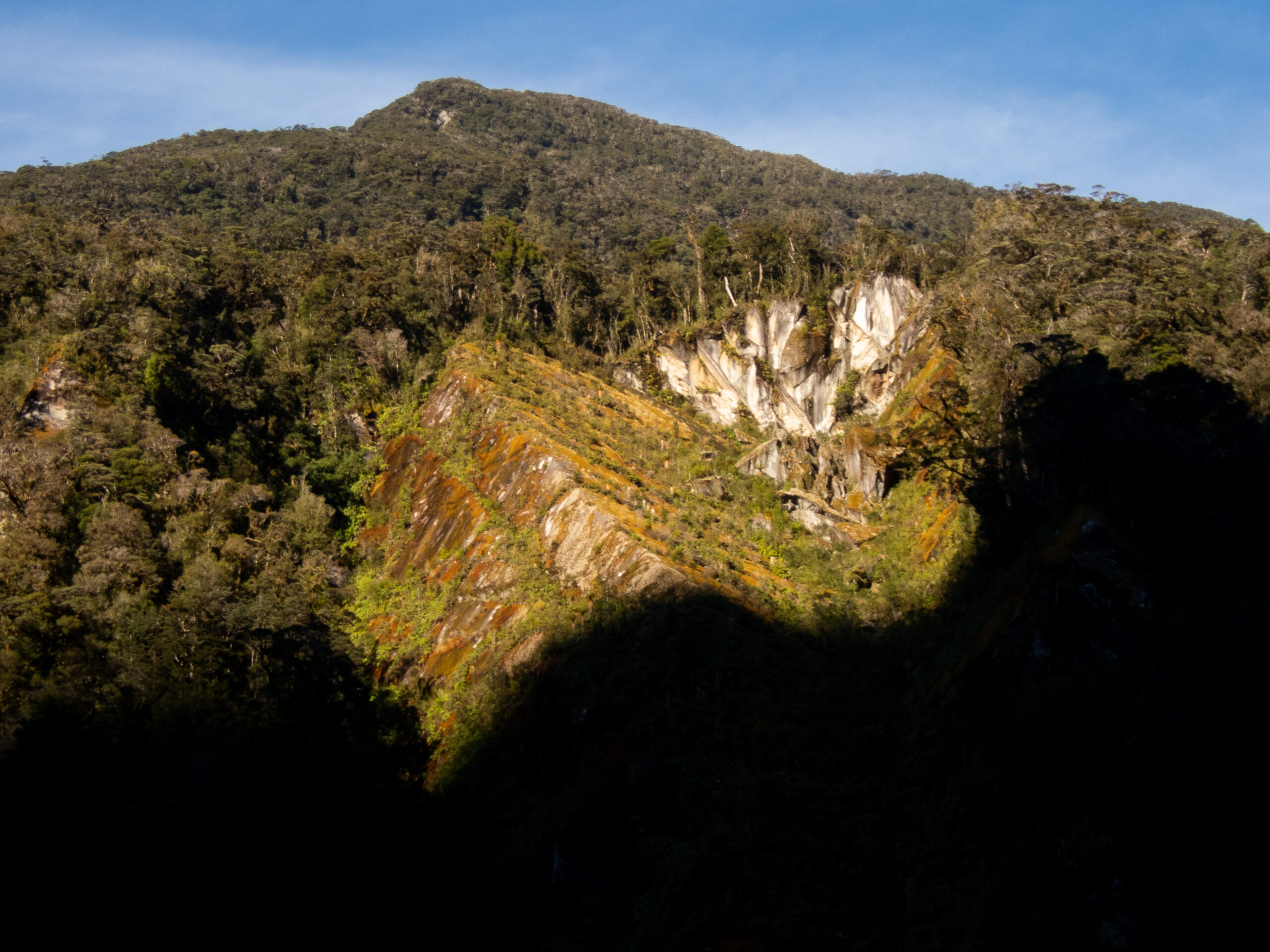
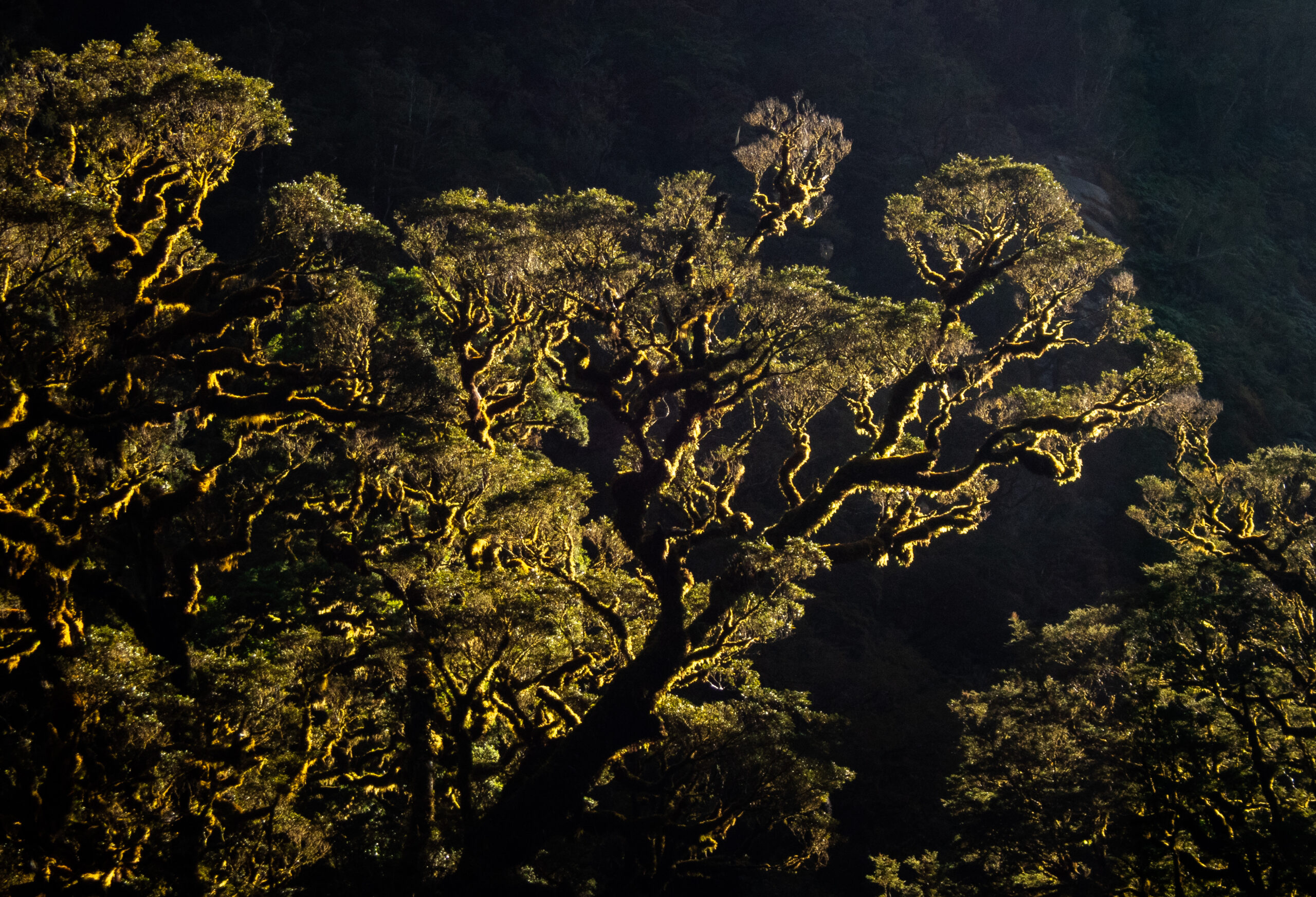
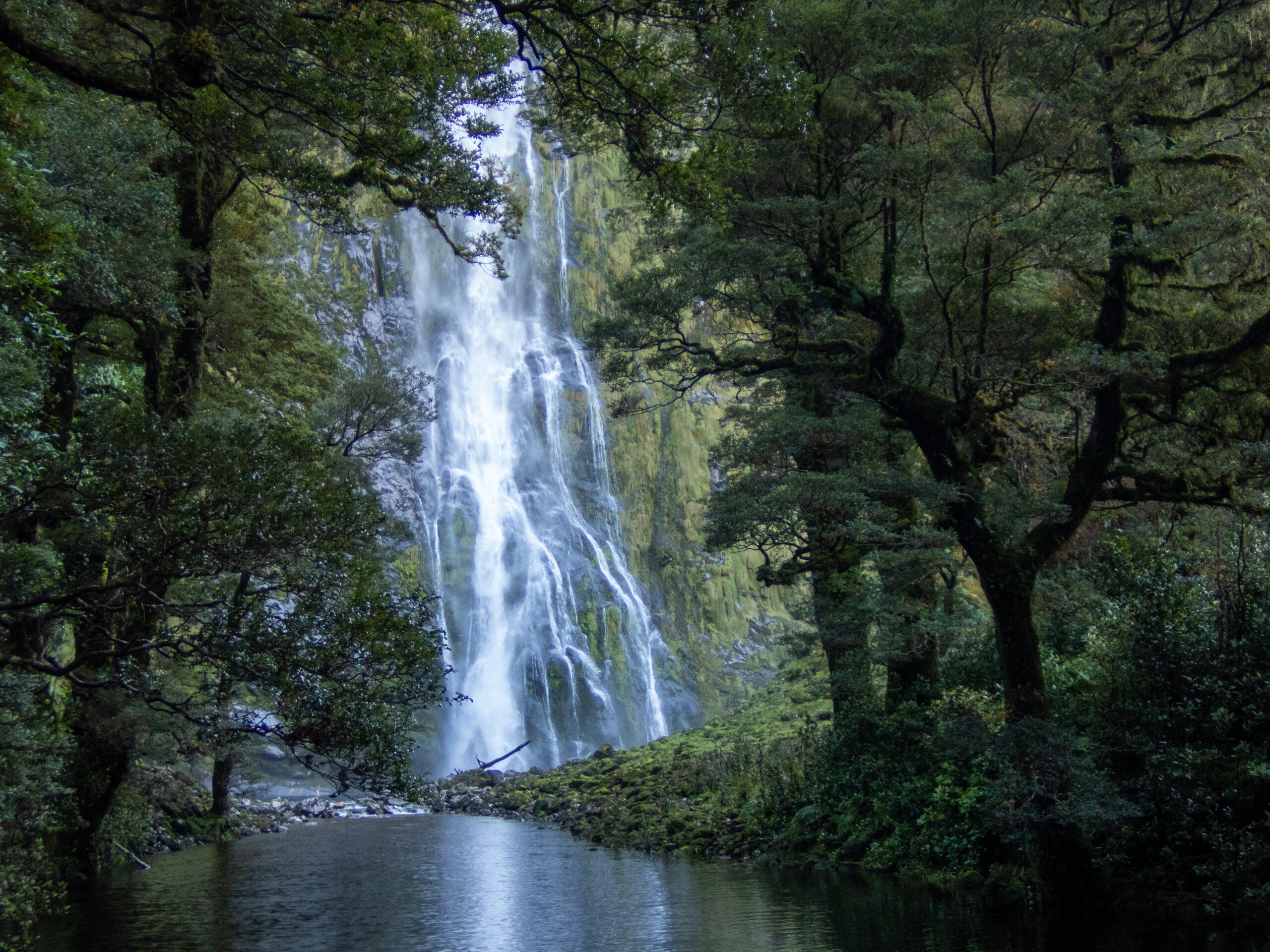

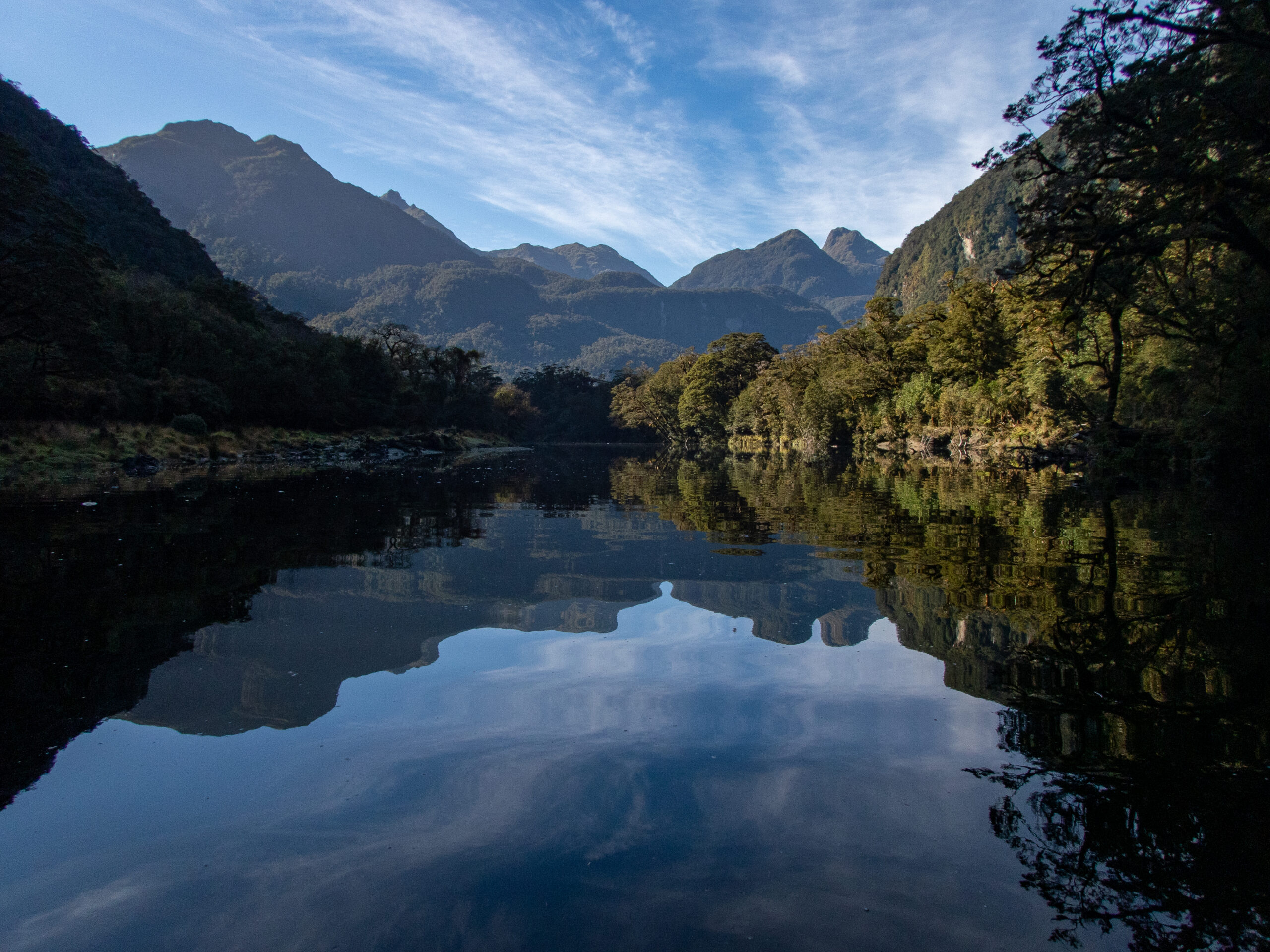
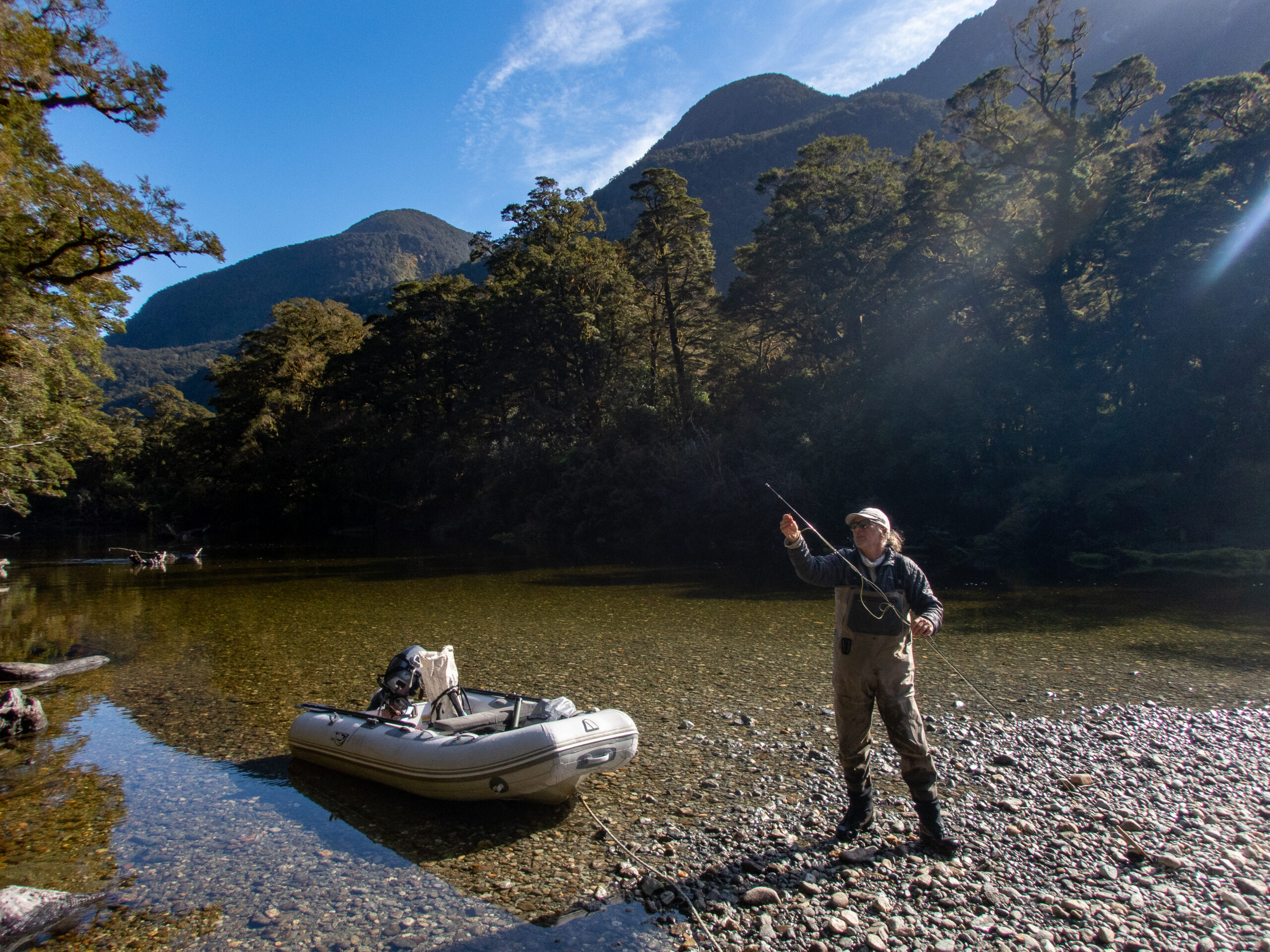

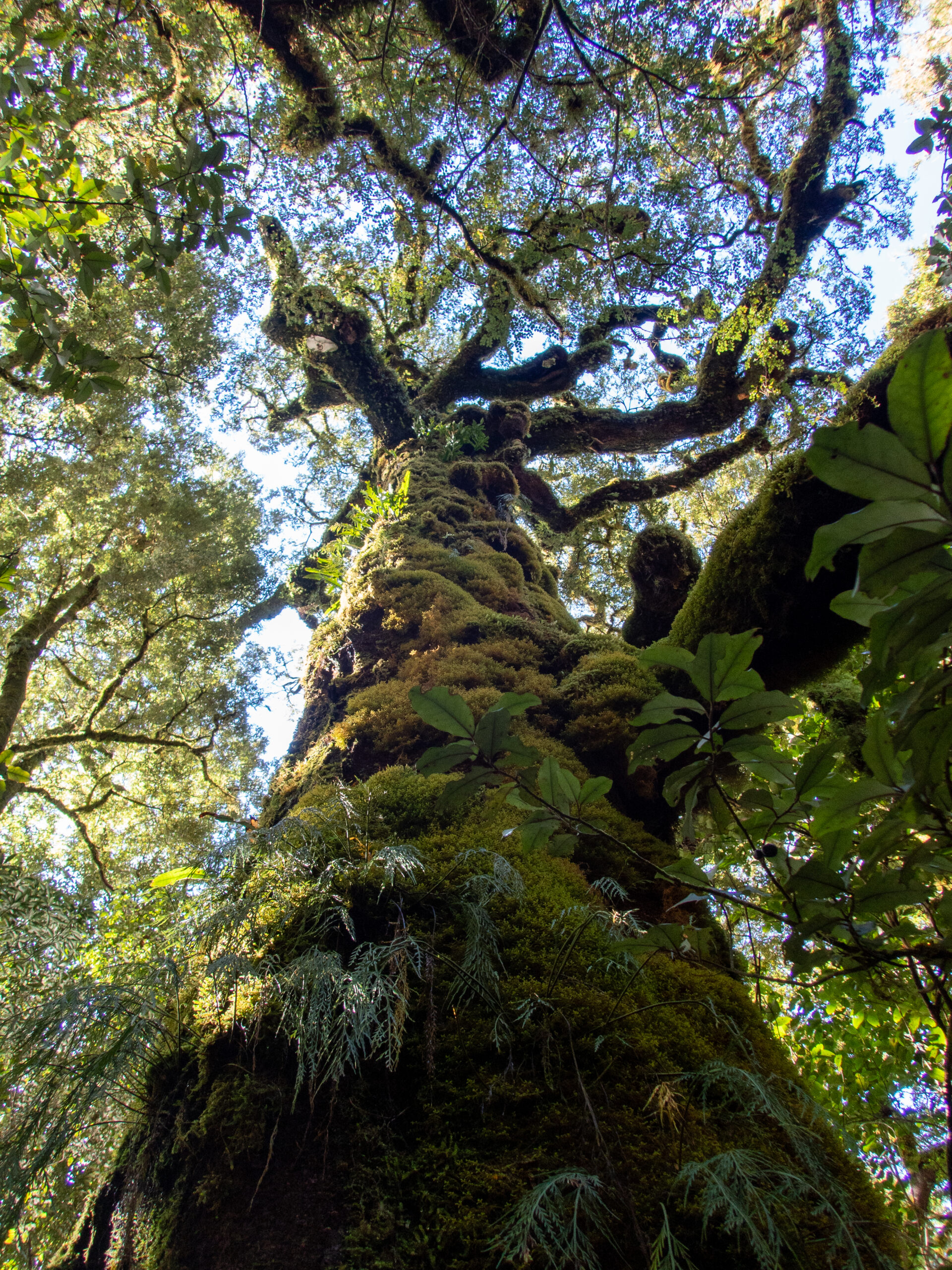
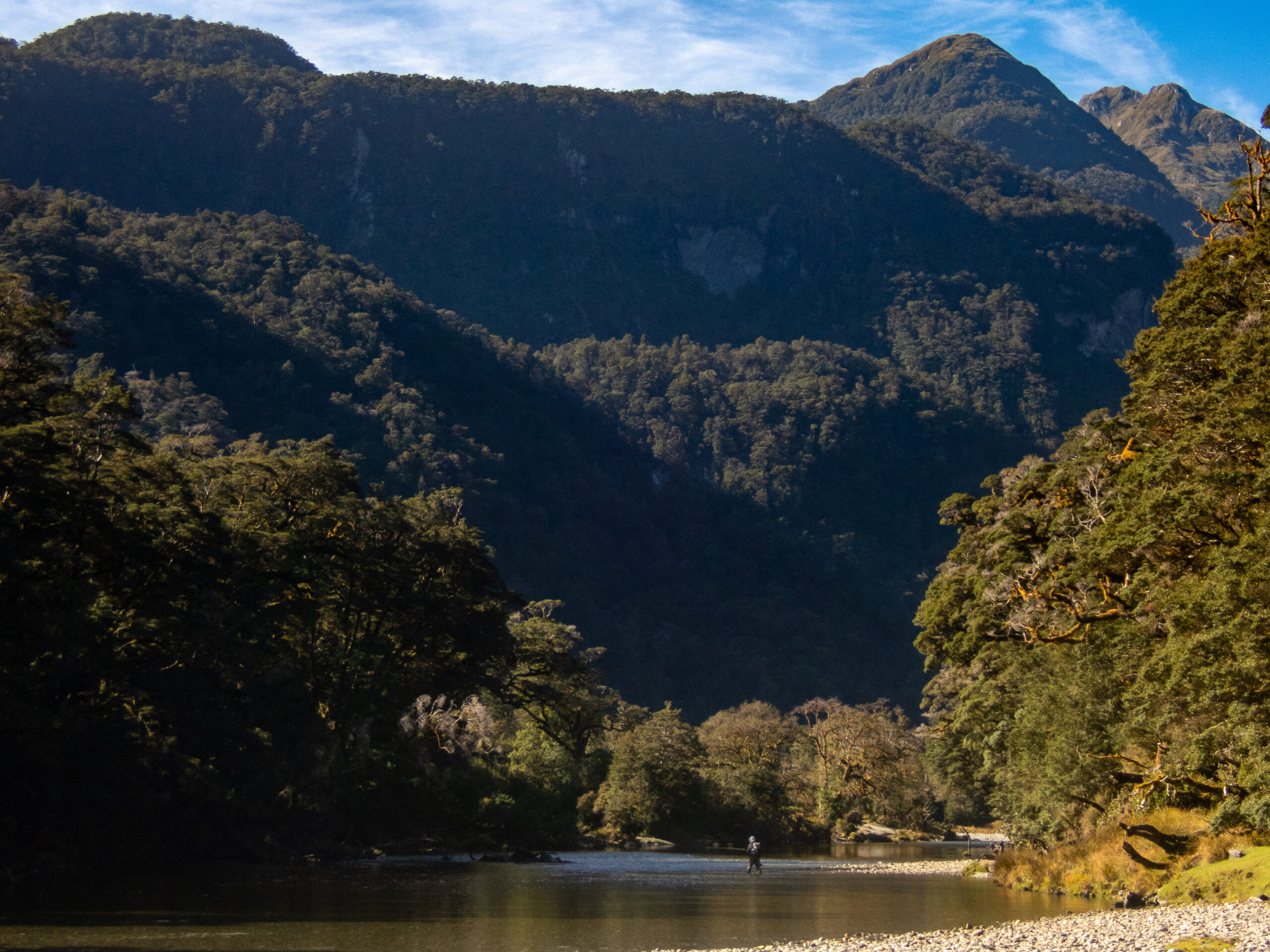
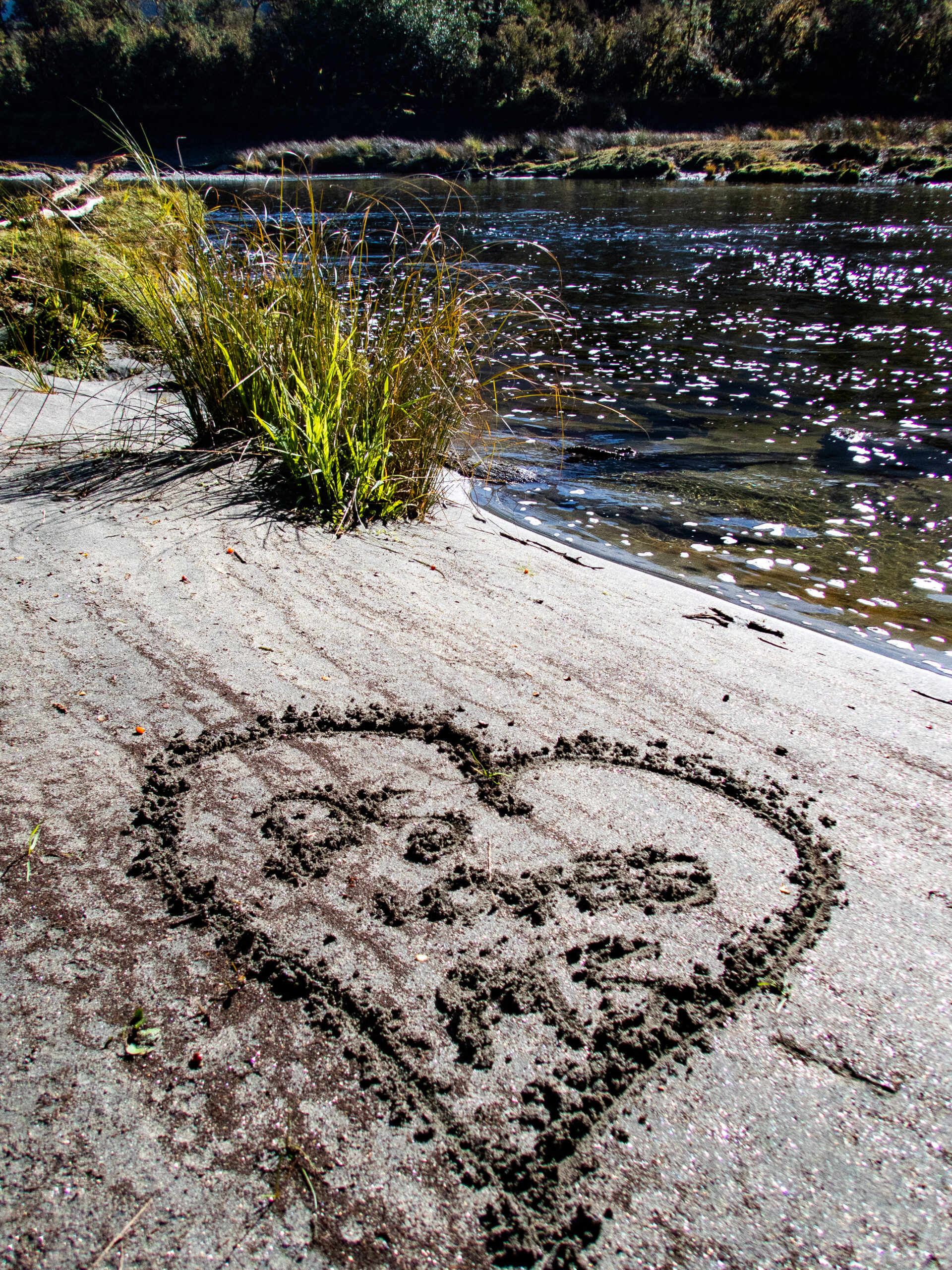
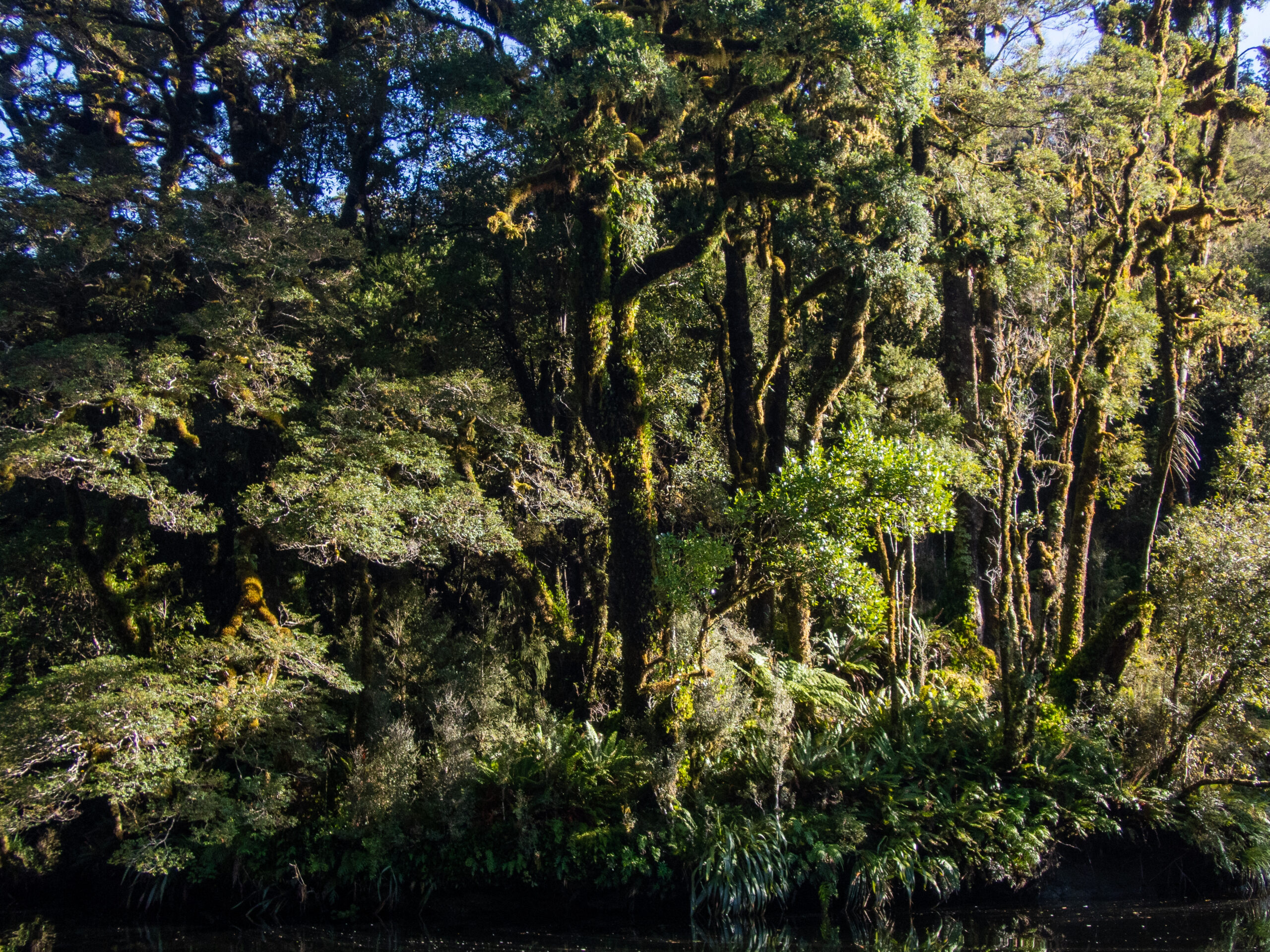

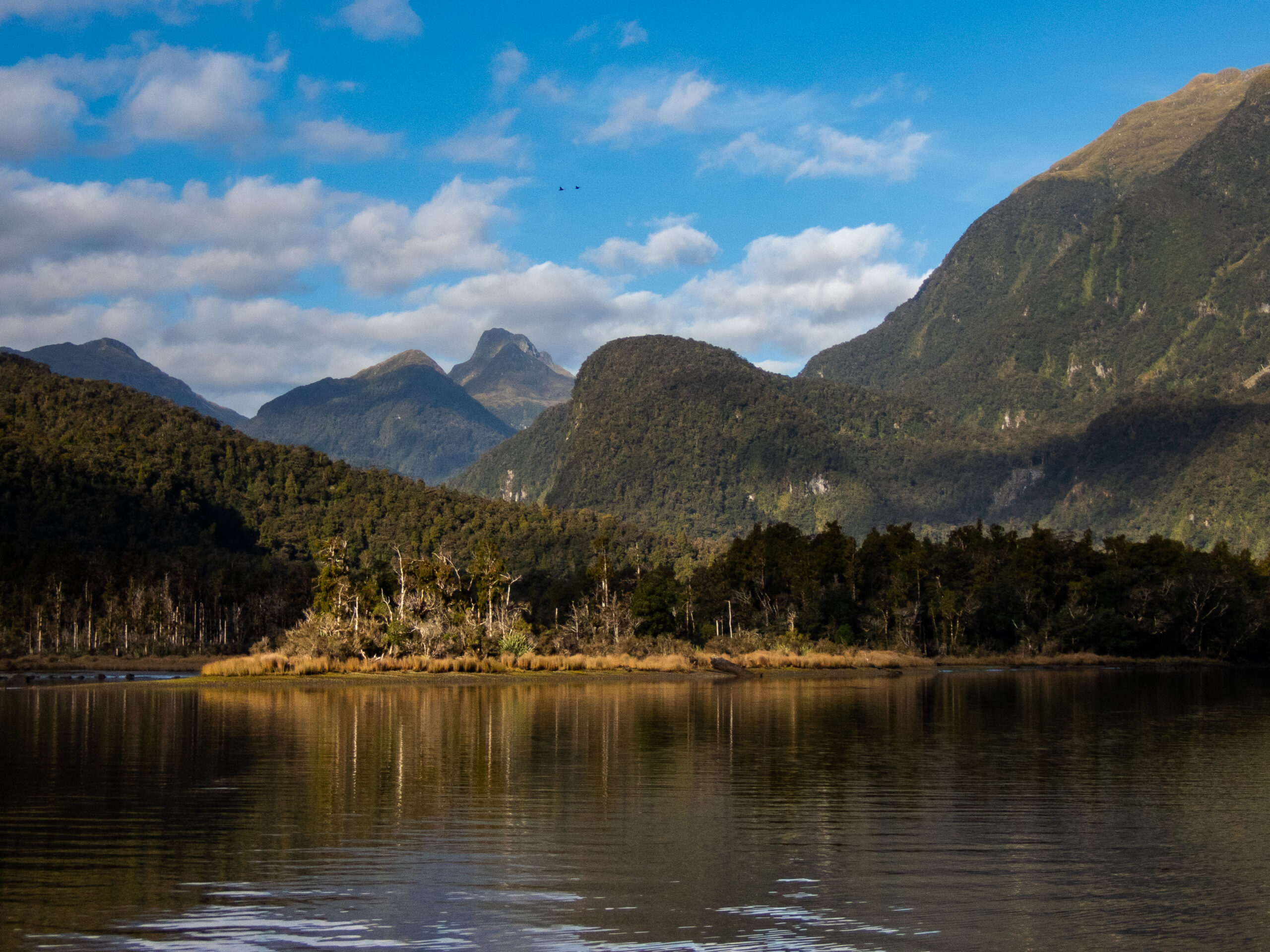
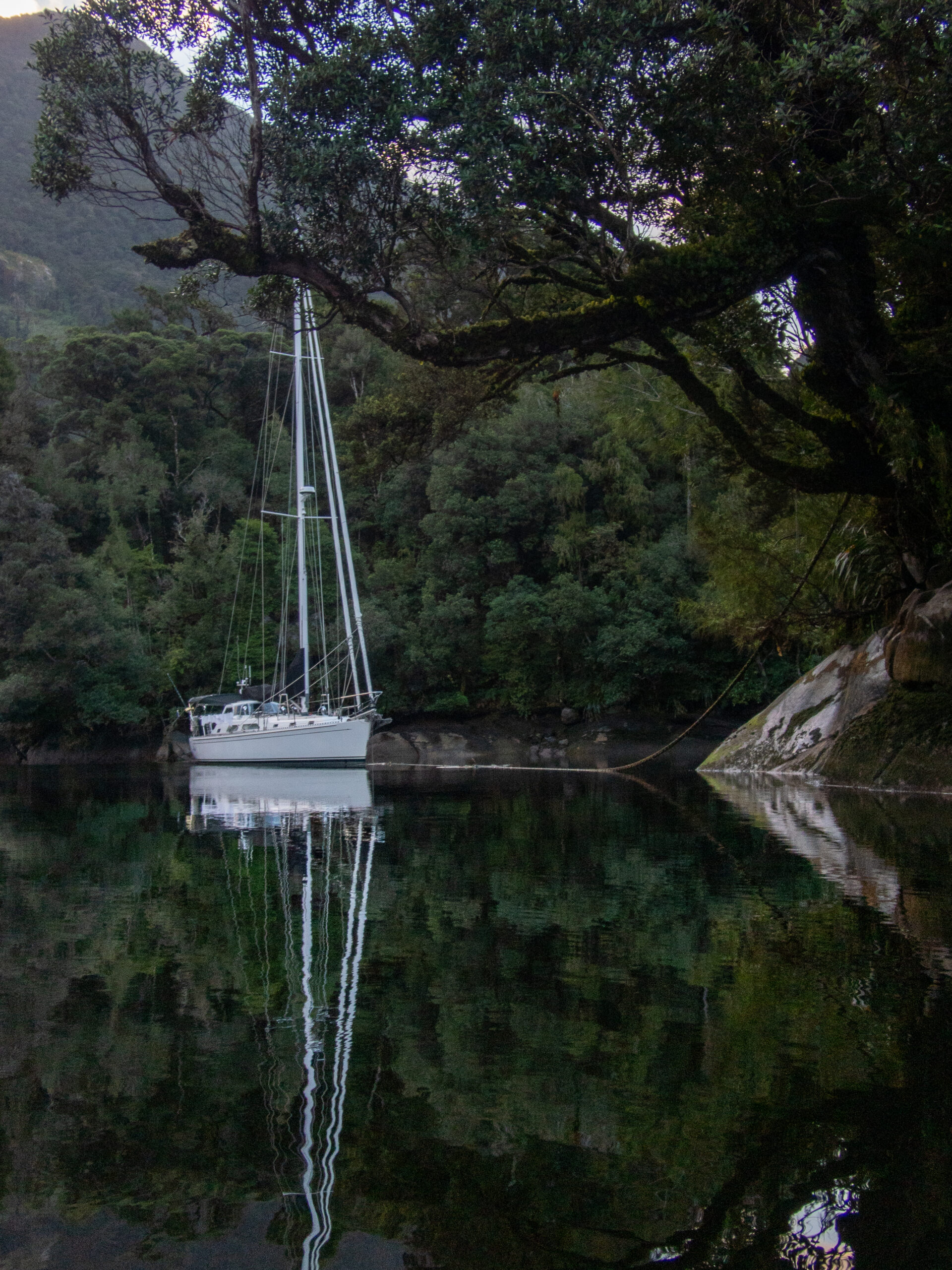
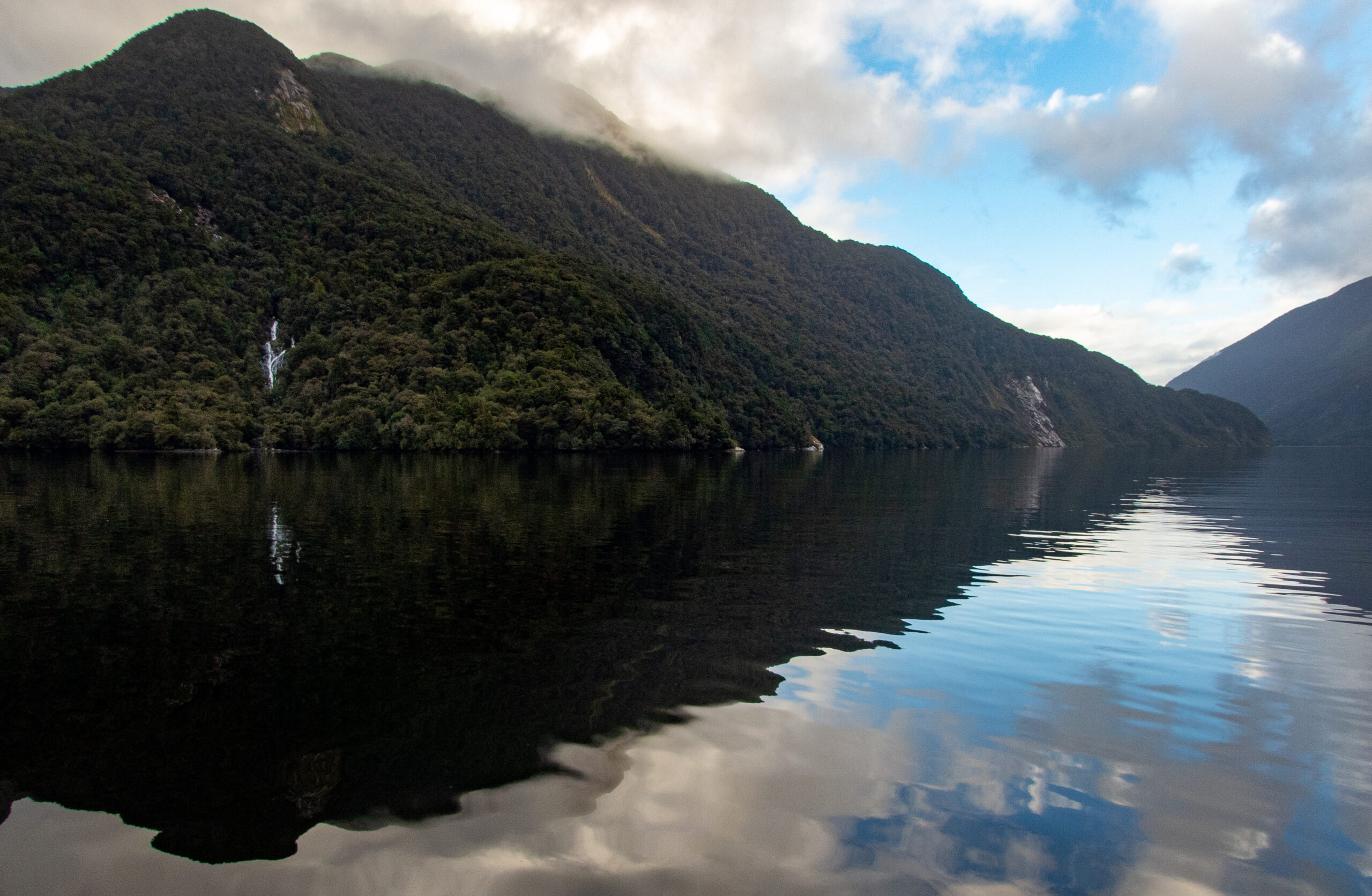
“It’s hot here,” the Pastor’s lovely wife said with a smile, “it’s always hot. Sometimes you can see some flowers blooming and you know it’s Spring, but it’s always hot.” The village of TeTautua does not own enough cars to have much of a road so its houses tend to meander along foot trails, which double as scooter and motorcycle paths, a web centered on the imposing blue and white Cook Island church. Ungirded by streets, houses with deep porches, windows without glass, only tattered cloth curtains, lay scattered at random angles. You might forget to notice that there are no dogs (they have been disallowed by the island council, which makes everything its business). Their absence, as much as the haphazard city planning, creates the feeling of a ghost town, especially if the children are in school and the hot sun is broiling the gray coral gravel underfoot.

The island is losing its population, slowly, people emigrating to bigger more populous islands, or New Zealand. Though there is an abundance of fish, there are few (maybe none) of the occupations that keep idle hands busy in even the smallest midwestern ghost town. In the big village on the other side of the atoll there is a nurse. There is a policeman, somewhere. There are teachers. But there are no stores. There are scant few gardens, a difficult enterprise in the hard limestone pavement that constitutes the earth of an atoll. There are thriving coconut groves, possibly the remnant of a copra operation, the kind that is still subsidized in French Polynesia. For a while there was a booming pearl farm business, which succumbed to cyclones and a disease among the oysters. Perhaps the mental, emotional, spiritual space that in North American suburbia is filled with cars and traffic lights, malls, donut shops, Home Depot and Costco, here is filled by the sea herself and the Cook Island Christian Church.


It’s no secret that missionaries did a number on the South Pacific. This is still one of the main places those white shirt and tie young scrubs in the Salt Lake airport are all headed. But it was news to me that God apparently doesn’t want you to fish on Sundays (I thought Jesus was a fisherman). No work, no play, no music, no swimming (sound familiar?). Like a friendly, island version of the Taliban, they take these injunctions seriously in Penrhyn and they made it their business to see that we anchored right by town to ensure that we weren’t off enjoying ourselves on Sundays doing the devil’s worst out of sight of the church’s two story pulpit.
Naturally, we were invited to church. Hats strictly required for women (strictly not allowed in Tonga) but definitely NOT permitted for men. Diana showed up with a beautiful head wreath from Rapa (made for church there) but here she was told she had to have a hat that covered the top part of her head (cuz God is looking down, I guess?). Long pants for men (in the tropics!), luckily Mike had a light pair I could borrow so I didn’t have to wear jeans. The Pastor’s white pants (God only knows how he kept them white) were unhemmed and about eight inches too long for him, so he walked on them, barefoot when he greeted us at his house and then under sandals for the service. He carried a bible, well worn with pieces of folded paper tucked among its pages, King James translated to Māori/Tongarevan, the language of the Cook Islands.
We arrived in the morning to find out that regular church had been cancelled because an elder woman, Mama Takulani, mother of 12, had died in her sleep early that morning. She had lived on Penrhyn her whole life, in this village of about fifty people, with barely one dirt road and about four cars to drive on it, no stores, no post office, nothing but a collection of very simple homes occupied by people who must know each other very, very well.
We gathered at her house, the palangi (foreigners) outside on plastic chairs to witness a three hour funeral, mostly singing, which seemed unscripted and improvised, arising spontaneously from the group of women seated on the patio floor. Men joined in, and the harmonies were unlike anything we’d ever heard, oddly discordant and complex, a fascinating mix of church hymns and Polynesian music, all the more intense as an expression of mourning. Speeches were given by men, long speeches, in the local language, with occasional acknowledgements in English to the visiting Palangi. The woman’s body was carried to the church, in through the left-hand door, briefly spoken over, then exited through the right-hand door. She was buried in a pre-built concrete crypt in a hole dug that morning by a backhoe outside her bedroom. She was covered with a tapestry and laid in the ground. It felt very odd to witness something so profoundly personal and significant for our hosts, though they went out of their way to make us feel welcome, and afterward there was a feast, with an insistence that visitors eat first.
The next Sunday (Father’s day!) respecting their local commandments and traditions, I did not fish. The first time that has happened since I became a father, 27 years ago. Instead, we went again to church to be harangued, mostly in Tongarevan, but also in English, by a series of men who (like the pastors of Rapa), utilized a hierarchically arranged pulpit (literally with stairs) to wield their authority. Maybe you need something organized like this on an island with nothing but turquoise water and sun and fish, to keep people from running amok, though it felt so out of place with the usual island vibe of very friendly, relaxed, open people. Singing provided some relief in the service, though the performance was more structured and a little more hymn-like than what we witnessed at the funeral. There’s a lot of this kind of singing in Penrhyn, all through the week, several times a day on Sunday. They grow up with this music, so they sing with passion and confidence and subtlety. The women often hold a hand to their face as they sing, and I wasn’t sure if it was to help them hear their voices (the way you might imagine Sting in a recording studio), or to hide their faces and wide open mouths. One young woman held a book that blocked most of her face. Afterward, there was another generous feast at the Pastor’s house, with pictures of the gathering of foreign visitors (representing several countries in Europe and North America) to be posted on Facebook.
When it seemed we would be on the island for another Sunday (waiting for a weather window to depart, and fishing) we decided we would skip church, but thought we’d better say something about our decision in advance. The Pastor seemed relieved (the unexpectedly large group of sailors must have been hard on his freezer, which would not be refilled until the next supply ship, months out). He did admonish us not to do anything on our boats, especially not swim, and seemed to joke (not sure here) that the sharks were in league with God and would enforce the no swimming on Sunday rule. Diana spent about five hours in the water cleaning our hull anyway, and lived to tell.
Though we chaffed at being required to observe the religious regulations of the island, presented to us as Law (which almost certainly cannot have been constitutional in a country governed by New Zealand) we were also overwhelmed by the generosity of their reception. Gift giving and hospitality is a pervasive and vibrant cultural practice throughout Polynesia, and they outdid themselves. We did our best to give back, too. And although the dogmatic Christianity was a tad stifling, we still managed to have some good connections. The Pastor was a bit of an odd duck in that way, at least for me, it was very hard to engage him in a regular conversation. His relationship to the visiting foreigners seemed mostly about the opportunity to give speeches and express the piety of his flock and the importance of his position as their spokesman.
We were the fourth boat to visit Penrhyn in 2019, but within two days there were eight more boats. Most of them part of a group of kid boats (that is, boats which have kids on them, who generally drive the social schedule), all loaded with school supplies to give to the children of Penrhyn. Liza, of the boat Liza Lu, is a teacher from New York whose class had started a pen pal relationship with Penryhn before coming. She had more postcards to deliver and spent time at the school helping the kids compose new post cards that she would mail back to her school. Our friends on Alondra, marine biologists with two girls, eleven and twelve, brought in microscopes and spent a day with the students peering at everything from fly eyes to butterfly wings and gecko toes. A huge hit. The boat ‘Panacea’ with Tuomo, Reka and their kids presented a slideshow about how they’d come to be there aboard a sailboat, and shared glimpses of all the countries they’d seen. The families aboard s/v’s Luminesce, Calle II, Itchy Foot and Caramba all participated, too, and Adagio’s crew were elemental helping with the mosaic. It was an unusually bustling ‘point in time’ on the sleepy eastern side of Penrhyn … ~MS
 Every fisherman dreams about a secret fishing hole somewhere. Someplace no one knows about. No one goes. No one (or hardly anyone) has ever fished. A place where you show up knowing you won’t see a single soul and that the fish have never seen a fly. This dream fishing spot is naturally chock full of fish, too, everywhere you turn.
Every fisherman dreams about a secret fishing hole somewhere. Someplace no one knows about. No one goes. No one (or hardly anyone) has ever fished. A place where you show up knowing you won’t see a single soul and that the fish have never seen a fly. This dream fishing spot is naturally chock full of fish, too, everywhere you turn.
The Cook Island’s atoll, Penrhyn, might just be that place.
This atoll lays more than 800 miles of open ocean from anywhere. There are no flights. It is visited by just two supply ships a year. The only way to get here is in your own boat, sailing far off of the normal tradewind route. There was a time when expensive flights from the main islands of the Cooks occasionally brought an intrepid fly fishermen from New Zealand, though because there are no hotels or any other tourist infrastructure on Penrhyn the only way to fish these remote flats, even then, was to stay as a guest with the pastor at Te Tautua and have him take you. This apparently did happen at least once. Years ago. Basically, the only people who ever visit, in very, very small numbers are sailors. The intersection of committed bonefishermen and blue-water sailors who can actually get themselves to Penrhyn yields a very tiny slice of humanity. I’d bet there aren’t more than about five of us in the whole world, and that includes our friend Mike, who’s introduction to fly fishing was walking the flats with me in the Gambier and Rangiroa.
The pastor insisted on taking us to his spot, though we had our own dinghy and knew from Google Earth exactly where to go. Wishing to be gracious guests of the island, we accepted the ride. We spotted the first pod of fish even before getting out of the boats and over the next four hours (the limit of the pastor’s desire to stay and harvest noddy bird eggs), I landed at least fifteen bonefish (which is a lot of bonefish), considering the amount of time it takes to land each one and the fact that a fighting ‘kio-kio’ clears the immediate area on the flat of willing fish. Mike caught nearly that many, as well, and we were often doubled up with fish on at the same time.
We fished this singular spot for a couple weeks going back on our own, and it wasn’t always as good as the first day, the tide and the weather have a lot to say about how good the fishing is going to be, but it was always our spot and the fish were always there. They aren’t as big on average as the bonefish in French Polynesia, but Penrhyn is chock full of them.
We pinched ourselves regularly to make sure it was not just a dream. ~MS

I’m going to ask Marcus to wax poetic about our final weeks in the Tuamotus. Suffice it to say that this region of French Polynesia is most definitely a favorite of ours and I even heard Marcus say he could live there. If fresh produce was available, I might be on board! For the time being, these pics can be a placeholder. These are shots from Tahanea, Fakarava and Rangiroa.
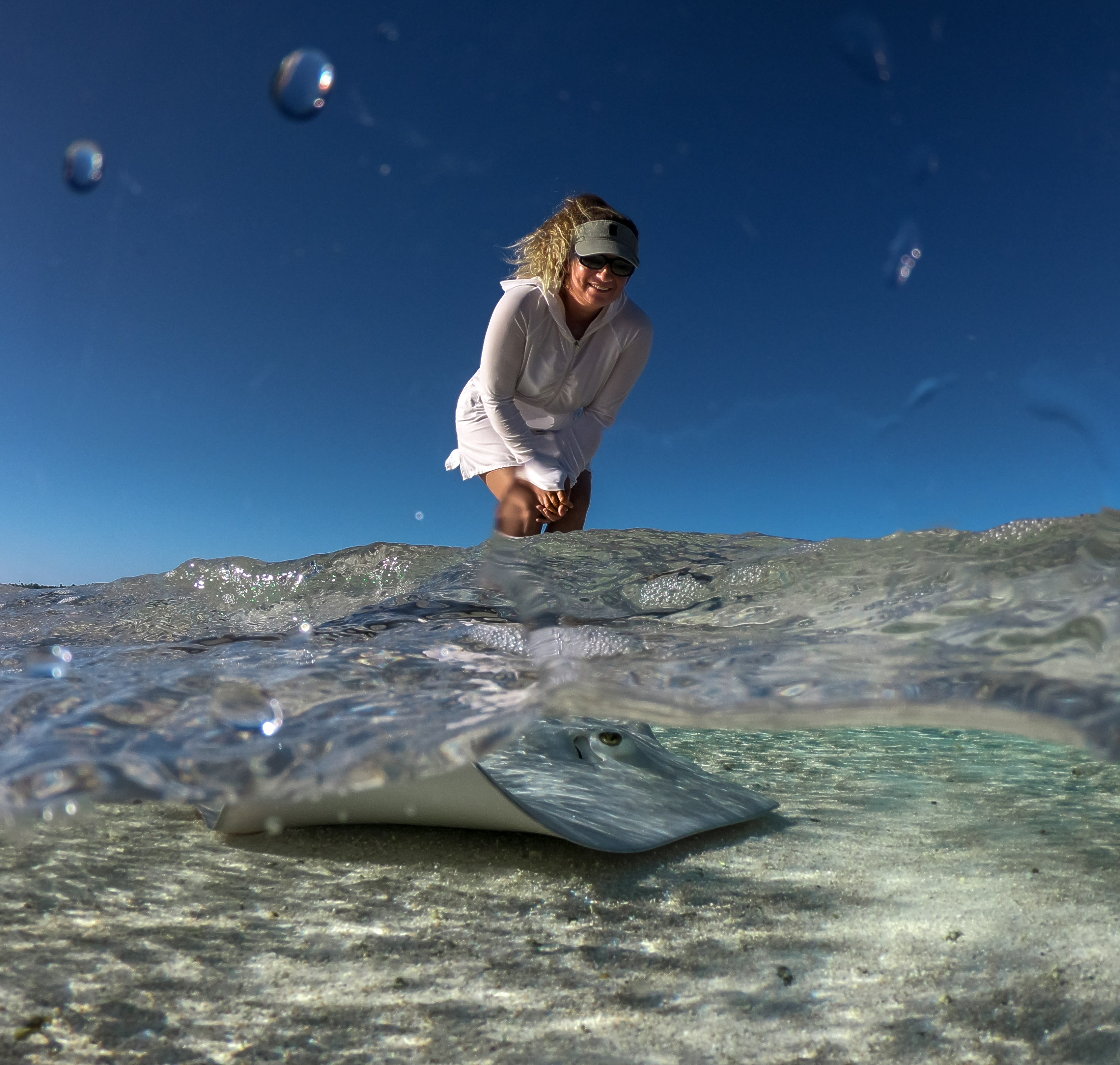
We spent about 6 months in the Gambier between two visits, which was enough time to start to make some connections and get to know people a little bit. Herve and Valerie on the island of Taravai nurture these relationships with sailors, warmly welcoming everyone who drops anchor behind the reef. Eric and his family became near and dear and when tragedy struck (Tina was lost at sea in August of this year), we grieved together.
We learned our way around, becoming comfortable with how things worked with the supply ships, buying gas in 200L barrels and negotiating to pump diesel straight from the boat. We got used to the idea that it was nearly pointless to try to get an internet connection, even in town.
We got to know some of the people along the water in Rikitea’s harbor:
Mike the fisherman and his wife, Agnés, the school teacher, offered us fresh fish and tried to organize an excursion outside the reef with Marcus, but the timing never seemed to work out.
Vaitea, the guy at Jo Jo’s (the ‘magasin’ or market) who made key resources manifest when there were supposedly none and was the recipient of multiple loaves of banana bread.
Louison, the body builder who rented us extra scuba gear – always laughing and smiling, paddling his Va’a in the harbor, delivering us tanks and gear wherever, whenever.
Eric’s sister-in-law, Juanita, and her friend Tao who drove us around the island in search of fresh fruit and invited us into their homes with open hearts.
Tehoto, who grew up on Kamaka island, who’s wife, Noella runs the pizza place, which is sometimes open on the weekend, depending on what else they have going on, allowed us on his private island, sharing his haven with us.
Iolanie rented us her car for a couple island excursions and stored our bikes in her front yard and later, in her store and would accept nothing in return.
Josie and her husband from Las Vegas ran one of the magasins and they volunteered to bring us veggies out to our anchorage about 8 miles away, as they were going by to a nearby motu (island) anyway … and this on Christmas Eve!
And then there were the cruisers, considerably more this year than last, who sought refuge from inclement weather in these eastern Polynesian waters, namely cyclones. A comradery naturally developed as we ended up seeing the same boats around the islands. We sat out a tropical depression at Herve and Valerie’s place in Taravai with a handful of other cruisers and were all poised to help out our neighbors as need be. The community of sailors is one of the highlights of this nomadic lifestyle and generosity, much like in the local culture, is a ‘given’ concept and knows no bounds.
Over two seasons, we covered most of the waters that comprise the Gambier, and yet it was hard and strange to leave knowing we would probably never make it back to this beautiful, remote Archipelago apart from the world.
cerulean seas
rain storm snorkel,
diving (with and without weight belt),
sharks, shells, sand, sailing in the lagoon
bugs on the beach, turtles
coconuts and an ancient village
Taravai petanque, ukulele and guitar
gusts from the mountain
anchoring pandemonium,
slow time and quick time
Valerie’s painting with sand
more fish more music
more fish more fish
damsels, butterflies, leatherbacks, grouper
parrot fish, sling jaw, guinea fowl puffer
canyons of coral, warm water
singing, laughing, lazy days
~MS
Our 2019 ‘cyclone season’ in the Gambier kicked off with visits from our Mom’s and sisters. Mom and Lori arrived at the end of January and we enjoyed a couple of weeks aboard Allora, sharing our favorites (people and places) in this sweet eastern corner of French Polynesia.
Mom certainly knows her way around the boat, so she slips into very relaxed mode and we always marvel at her being ‘game’ to do just about anything. This was Lori’s first full-fledged stay aboard, so it was particularly wonderful to immerse her in our life afloat. These were full, rich days!!! ~DS
Through Lori’s Lens:
DIVE IN! We’ve been to the Gambier before, this little Archipelago on the southeastern edge of French Polynesia, clinging to the tropics by a few minutes of a degree. From any place to any other place in the Gambier it always seems to be six miles. Motus, reefs, mountain islands, all of French Polynesia on a small scale. Not a lot of people anywhere, basically one road on Magareva, no traffic lights, or stop signs or yield signs. No internet to speak of.
We’ve been to the Gambier before, this little Archipelago on the southeastern edge of French Polynesia, clinging to the tropics by a few minutes of a degree. From any place to any other place in the Gambier it always seems to be six miles. Motus, reefs, mountain islands, all of French Polynesia on a small scale. Not a lot of people anywhere, basically one road on Magareva, no traffic lights, or stop signs or yield signs. No internet to speak of.
The business of the Gambier is pearls. Its cooler water temps and open lagoon are ideal for cultivating that one particular oyster which has captured the imagination of the world’s great connoisseur and collector ape, an irredeemable species with a bizarre obsession with grading things according to their level of perfection, and assigning abstract value. Toiling like 49’ers, cleaning the oysters, nurturing and counting them, performing delicate surgeries to create little iridescent balls of nacre.
We had lots of company in the Gambier this time around. Lots of time to go explore some of the places we missed the last. We thought it would feel like lots of time in general, but I guess Time doesn’t exactly work that way. First to arrive was Maddi, followed a few days later by Wyatt’s girlfriend, Heather. All passionate outdoors people, crazy about running over mountains and diving with sharks and mantas. Heather kept a diary of the fish she identified (as a scientifically trained person would). She and Wyatt would pour over Diana’s books at the end of their dives. Diana’s pretty good at this, but I’ve been slower remembering the names of (non-game) fish. One that Wyatt and Heather found that has stuck and is easy for me now is the Piano Fangblenny. Nice name for a fish with what sounds like a mean habit of eating other fishes scales. We had lots of music and card games for the rainy days. Maddi hooked a giant bonefish right off the shore in front of Eric’s. It charged her fly and then ripped into her backing. She landed the next one. Wyatt landed a nice fish there, too, a few before having eluded getting their picture taken by slipping off the hook at the very last second. We dove, exploring new places in the Gambier, had some gear trouble, and then got that fixed. We played volleyball in Taravai and climbed Mt Duff in the pouring rain. It felt quick (as almost everything seems to these days) but filled with memories.
 The weather was unsettled during most our stay this year in the Gambier. Everyone says so. It’s a thing. We had great weather and we had rainy weather. We had calms that made it possible to swim with mantas at Ile Kamaka and spend a wonderful Sunday afternoon relaxing in the shallow water beach in front of Eric’s pearl farm. We also had the worse wind we have ever experienced at anchor, a glancing blow from a depression that plunged the barometer to the low 990’s. Top gusts of 54 knots and sustained winds of 40 knots. A proper gale. Other sailors certainly got tired of us commenting that it wasn’t like this last year.
The weather was unsettled during most our stay this year in the Gambier. Everyone says so. It’s a thing. We had great weather and we had rainy weather. We had calms that made it possible to swim with mantas at Ile Kamaka and spend a wonderful Sunday afternoon relaxing in the shallow water beach in front of Eric’s pearl farm. We also had the worse wind we have ever experienced at anchor, a glancing blow from a depression that plunged the barometer to the low 990’s. Top gusts of 54 knots and sustained winds of 40 knots. A proper gale. Other sailors certainly got tired of us commenting that it wasn’t like this last year.
Christmas day the festivities were held at Edouard and Denises, at the southern end of Taravai. We wore our hats from the Australs, and like everyone brought food to share. Herve supplied the pig for the roast (he introduced me to the doomed prisoner the day before) and Edouard made Tuamotuan-style bread on the fire from coconut heart and flour wrapped in leaves (delicious). We brought guitars and ukuleles and I backed up Maddi on few songs, then Wyatt came in. For me the best song of the afternoon was the one Wyatt and Maddi sang together “Wildermen.” It starts, “my brother and I”… but Wyatt sang “my sister and I.” They stopped and tried again, laughing when they each switched the line, and then on a third try got on with the song. Funny and relaxed, what a great afternoon! The song Maddi wrote for mother’s Day “Anywhere You Are” was also a big hit. We played the chorus a few extra times so everyone could sing along. After awhile, Herve brought out his Marquesan style ukulele, which confounded us at first because he’s left handed, though he hasn’t restrung the instrument to match, so he plays it upside down and backwards. It didn’t make it easier that here they use the do re mi system of notation in French Polynesia instead of A B C chords that we’re used to. But after a bit of mental gymnastics we were able to share some songs with him, too.

KAMAKA is a small, steep island on the south edge of the Gambier. Because the reef is submerged along this border of the archipelago the ocean swell is free to move in. There’s a patch of sand that great for anchoring (though watch out for a lost anchor on bottom about one third in from the east side), but the conditions have to be pretty calm for it to be comfortable. There is almost always a south swell breaking on the west side of the beach (in case you’re a surfer).


Taravai is a sort of sailors mecca in the Gambier. It’s a good anchorage in most normal weather even big southeast isn’t too bad. But the real attraction is Herve and Valerie. They live on this island with their son Ariki, the only child on the island. Herve’s uncle, Edouard and his wife Denise live at the other end. It’s kind of amazing in the 21st century to see such a gorgeous place so simply occupied. Gambier’s blessing for being enough off the beaten track and a place where sweaters maybe required in winter. On Sunday’s they put on a pot luck BBQ, usually chipping in some fish that Herve has speared and sailors bring food and drink to hang out, play petanque and volleyball. Hard to beat. Valerie greets newcomers with a warning not to beach their dink under the coconut tree which is tall and would be lethal if it let go a coconut as just the wrong moment. The games of volleyball are played with Taravai rules, which include a slightly lower than regulation net and an easy going vibe … Herve’s secret weapon, besides his wicked sense of humor, is the headshot. It never fails to unnerve the opposition. Valerie is a committed player, too, always giggling, saying “Fakarava!” when she misses. Herve calls her “my lady.” The games often persist until it is just too dark to see, so Diana had the idea to ask Wyatt to find a glow in the dark volleyball to bring along as a gift. It lights up when hit, and stays lit for some period of seconds. The first night we played until the only thing people could see was the ball.

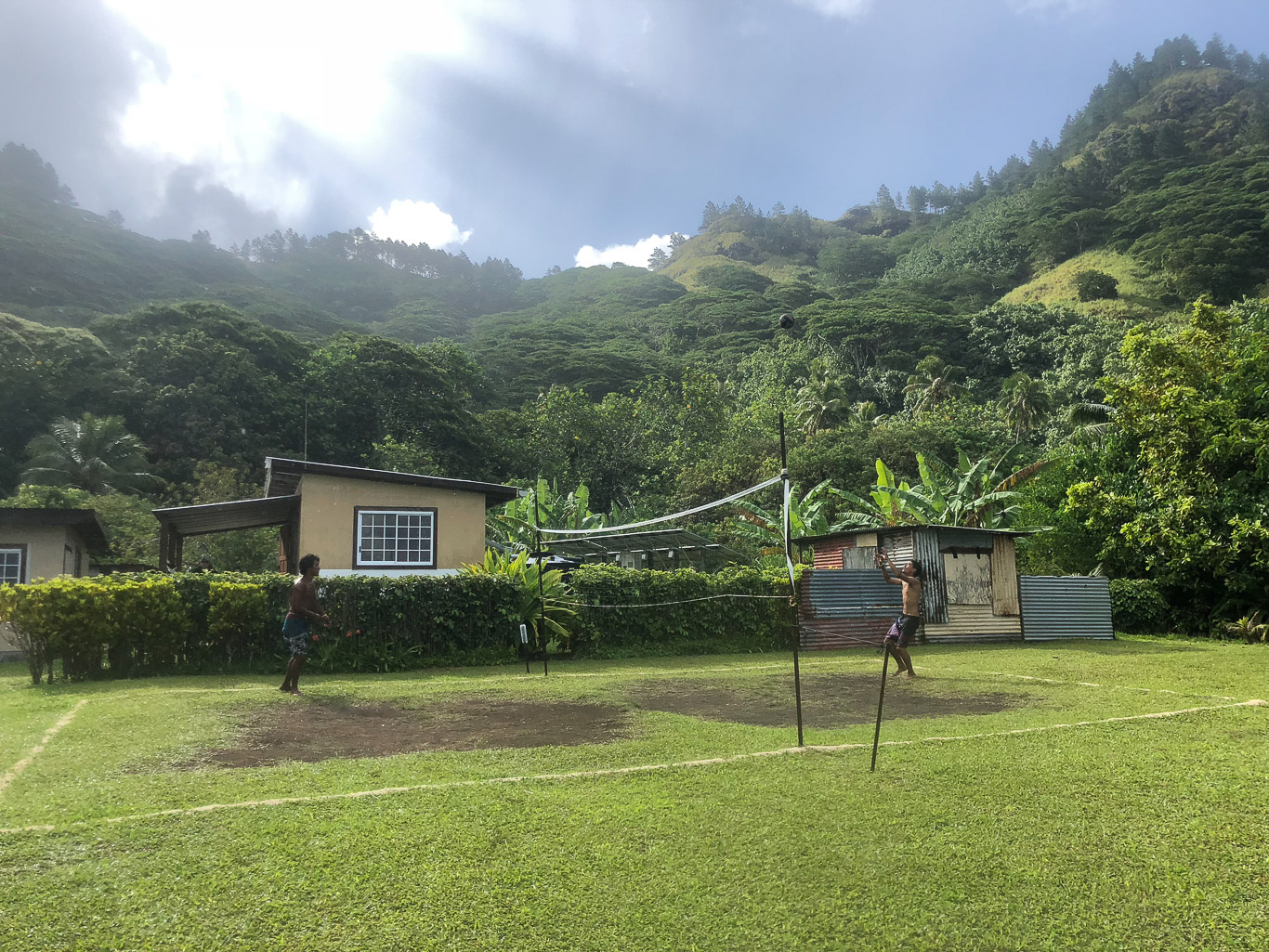
Aka Marlon Brando’s atoll, aka where Obama went to write his memoirs, aka the weekend get away for Tahitian royalty for hundreds of years before those two. This is a difficult atoll, not very often visited by sailors. There is no pass to get your sailboat inside the lagoon, so you have to find a place to be on the outside, which means that conditions have to be just right. There’s a bay on the southern side, but the prevailing swell in these parts is south, and it has to be less than a meter and a half, or it’s just not tenable. The trade winds are east-southeast, so those have to be mellow too. The other big, big problem is that it’s super deep right off the reef. There’s not really a place to anchor. Charter operations out of Papeete have put in five mooring balls. Only one of those is really good for overnight, and if the conditions are right, the charter boats are guaranteed to be using them. We sailed in from Makatea unsure if we were going to be able to stay. In fact we had to plan our schedule so that we arrived in the early morning. Then, if we had to move onto Tahiti, we’d be able to get there before too late in the day.
As we approached after an overnight sail from Makatea, we could see two charter boats already arriving. Our only choice was to motor up to the catamaran that was unloading his guests to take ashore and ask if we could use one of the other moorings.
Now it’s really easy to imagine the response you might get to such a request in much of the rest of the world. Even a polite, sorry, these are private buoys would not be surprising. Less polite, not surprising either.
Obviously, we got an altogether different response. The captain of this catamaran had twenty or thirty guests that have paid $150 each to get there and were lined up to get ashore. He’s a one man show, from running the boat to making sure everyone has a life jacket. So he’s a bit busy. Nonetheless, without hesitation he pointed to the closest buoy and said, that’s the one you want. We asked are you sure, not one of the others, no that’s ours and it’s the best one. Can we stay the night? Absolutely, no problem. His name was Moana.
After he ferried all of his charge ashore he came over to talk. Remember the thing about Tetiaroa is THERE IS NO PASS. Meaning, no break in the reef that will allow you to sail to the protection inside. That includes shore boats. Marlon Brando and Obama got there by airplane. The only way to get ashore is to time your approach with the waves and surf your dinghy across the reef. When the surf is out, there’s a three feet wall of coral wall to slam into. This is what we’d been watching Moana do – dinghy runs with his guests. Seriously, it took our breath away. Obviously, it was possible. No doubt centuries ago Tahitian royalty were paddled across the same section of reef by young, strong paddlers. Moana offered to take us in, but he was leaving at 2:00 (we preferred more time on the inside), so we decided to launch Namo (our dinghy) and go for it. We went over to ask for tips and instead of letting us just try it, he took me in his dingy and showed me how to surf across. The key is to line up with a palm tree that has no top. The other key is that the waves roll along the reef so you can see them coming and gun it at the right time. It’s too late to just wait for the water to cover the reef, you have to be going full speed by that moment. Then to get out, the key is to know which coral heads you might hit with your propeller if you don’t aim right. Spot them, then gun into the white water of the breaking surf.
So we did it, surfed in with Moana cheering us on. Basically, you get across the reef and land in a pool, then if you turn hard right you can wind your way through the coral heads and tie off on shore. It’s also possible, but very complicated, to wind your way along the royal Motu (small island) and into the lagoon. We opted for anchoring Namo up at the spot where Moana left his guests and walking around the motu (the opposite way from which he took his clients) into the lagoon.
And what did we find there? Huge bonefish, as big as I’ve caught anywhere. Diana got lots of pictures. It’s illegal to fish inside the lagoon, but catch and release bonefishing is allowed. However, all of the charter companies have signed an agreement NOT to bring fishermen. So the only way, other than the way we did it, to fish in Tetiaroa is to go the the hotel. Where Obama went. Yep, $4,000 per night, not including airfare, for the cheapest room in the off season.
The next day another charter boat showed up. A smaller, private charter, same company, POE Yacht charters. They took the same buoy as the other captain had, but then once he’d off loaded his guests he came over to tell us that he needed the buoy we were on for the night. Once again, sorry sir, but this is a private buoy, you need to get lost. Right? Nope. He said that since this was the only safe buoy for overnight (capable of holding five boat in deep water off the reef), we could tie up to him and be his guest. He also offered to ferry us across the reef, and if we wanted we were welcome to come on the tour. When we asked if his guests would mind, he suggested that it was his choice and they wouldn’t mind anyway. These very friendly people were there to celebrate a daughters 25 birthday, so other than some Karaoke late into the night who could possibly complain?
I took him up on the ride in because Diana had discovered that the best snorkeling was on the outside reef edge anyway, plus, the sharks we’d been seeing circling Allora were Lemon Sharks, which we hadn’t seen before. Diana cannot resist swimming with sharks. While I was away, doing what I do, a mother and calf humpback whale swam right by the boat. Diana was so torn about whether to grab a camera, get snorkeling gear and a wet suit, or what, that she wasn’t able to get in the water with them before they passed, but she had a wonderful close encounter anyway.
We were so reluctant to leave the next morning, but the swell was up, and the forecast was for building southeast wind… time to sail for civilization. In case you’re there already and don’t quite realize, civilization equals ice cream, chocolate and internet. Not to be taken for granted. Especially since we were completely out of coffee, too.
Our first instinct, on our initial pass through the Tuamotus last year, was to avoid Rangiroa. It seemed too popular – with actual hotels for tourists, including those ‘elegant’ thatched roof bungalows out over the water that plague Bora Bora. But on our second pass this year, we ended up spending a month in this largest of the Tuamotus atolls.
I’ll keep my part of the motivation for staying so long to one sentence: Rangiroa has the best bonefishing in the Tuamotus. Okay, moving on. Okay, well maybe not moving on. I broke both my nine and eight weight rods on these fish. I used up my entire stock of number 4 hooks. I fished everyday, and there were bonefish wherever we went, even at the touristy Blue Lagoon. We’re not talking armies of tourists, lets say a couple dozen for a whole day in three or four small boats. One group even waved me over and fed me lunch. The tour operator was an avid fisherman and pure Polynesian friendly. He told about a spot where he’d seen a giant bonefish, so big that at first he’d mistaken it for a shark.
Unfortunately, I never got over there. The wind shifted and we had to pull up anchor – which is a short sentence for describing a pretty harrowing situation where our anchor windlass failed, and we had to untangle the anchor from some nasty bottom, manually, and then with a little luck and jimmying of the windlass control, we raised the Rocna, just as the waves and wind built in earnest. Fortunately, we figured out the wiring problem at the next anchorage and it was an easy repair. ~MS
Fakarava North
Anyone watching us might have wondered what we were up to, bouncing back and forth between the anchorage off of Rotoava and a spot near the north pass of Fakarava. Part of the story is that you need winds with some north in them to be able to sit by the pass comfortably. There’s a nice public buoy by the channel marker and the snorkeling there is pretty awesome. Diana became quite familiar with its retinue of sharks and one particularly friendly triggerfish. I liked the spot because it’s a jumping off point for going to the far northwest corner of Fakarava. This is a nature preserve area, so no anchoring allowed. It’s about a five mile dinghy ride, but a pretty cool spot with some really nice fishing. Diana explored with me the first time, and I did the 10 mile round trip a few more times on my own. I brought a VHS radio in case I had any problems. Occasionally, a few boats brought tourists from visiting cruise ships to a place out that way they like to call the blue lagoon (every atolls got to have one). It’s a pretty spot and they bring lunch. I was lucky this time that they did, or not lucky depending on how you look at it. While I was off wandering across the endless flats in search of bonefish, one of these tour operators spotted Namo anchored by the shore of one of the motus. Apparently, he could not think of a single earthly reason that anyone would park a dinghy in that remote spot (not by the blue lagoon). So while I was out of sight, he “rescued” Namo and towed her away. It’s true that if one of the sailboats in Rotoava lost a dinghy this is where it would float to. Lucky for me there was still one other tour operator in the area, though it was a bit of hike to get to them. He was able to get one cell phone call out before he lost the signal, and after about an hour of chit chatting with the cruise ship passengers, Namo reappeared with the apologetic tour operator at the helm. ~MS
Toau
I think we’ve been to Toau four times now, maybe more. Diana’s posted about it before. The difference this time was that a new group of sailors was moving through, having done their crossing this year. It was interesting to see the island get new visitors, sailors who migrate through each year, visit the same spots, have barbecues on the beach, talk about their experiences crossing the big ocean, and think about the mysterious way the wind messes with the tides. There’ll be another group next year, too. We are so remote and still there is a steady presence. Toau is a popular spot, despite its tricky pass, for good reason.
Among the new crew were friends we made in Baja, Mike and Katie on Adagio. They have dive tanks and a compressor, so we got to do a little scuba diving. Mike is also a pretty fanatical fisherman and gets as excited about the subject as I do. He’d only been fly fishing once before, kind of on a lark in Yellowstone. But we grabbed a couple rods and went out a few times to see if he could hook one. Fortunately, he’s a good enough fisherman to understand that’s a pretty tall order for a first time, but he got a few shots, enough to get a fair idea of how addictive it can be. The fish were being tough in Toau this year, giving me a hard time, too.
We spent a little time on our own, too, doing what we do. Freediving to photograph fish, and yep, more fishing. Lots of water time.
We moved around to Anse Amyot, (the ‘false pass’ outside the atoll in the north), for a little more diving with Adagio, which was excellent, including some caves in the reef absolutely jam packed with sea life. I fished a little more. We bought some wildly overpriced lobster from Valentine, the snaky operator of the business there and had a wonderful lobster dinner with Mike and Katie. Valentine tells the story that she came to Toau as a little girl from nearby Arutua in a small boat with a two horse outboard. She says she was brought by her father to keep her grandfather from stealing her. She has his name, is the explanation. She’s been there a long time. She’s very, very religious. But she doesn’t seem particularly happy with her lot. There’s a defunct phone booth on the motu and a very funky pension. They installed buoys for sailors ($5/night) from the time there was a village here. This is the first place we’ve been where we felt this proprietary vibe, but the option to tuck in safely on the outside was sure nice. ~MS
We underestimate gravity
living mostly in a flat world
or buoyed by the sea
or by the power of internal combustion engines,
jet turbines
until the boat heels just fifteen degrees beating to windward in moderate seas
and making coffee becomes a heroic adventure
I’m still trying to understand, to viscerally know
how gravity is mass bending space time
I do get that gravity is like time, in this crazy wingding world
falling toward the future
resisting it is an illusion
even our thoughts are not free of gravity
normal looks strange, titled just a little off angle.
~MS
Ian likes to plan and he has a knack for thinking through the details, even when the boat he’s planning for is not his own. He’s also devilishly persuasive. Long before we’d given any real focus to the question, he’d figured out that we needed to know where Maddi would fly in and out of when she came to visit in December. His suggestion turned out to be Fakarava, where by incredible coincidence, Makara (Ian and Erika) and Starlet (Jennifer and Mark) both intended to be for Christmas. We regretfully explained that while we didn’t really have a plan, per se, we would be much too far east by then, well on our way to the Gambiers. But every once in a while, he’d gently ask if these poor, confused American sailors had a plan yet. After luring us to join them in Moorea for an unplanned (by us) detour, we burned up enough time that, as predicted by Ian, Fakarava actually did make the most sense.
Lo and behold, we found ourselves Christmas eve, faced with an unusual northwest turn in the weather, sailing upwind and backwards (as in north and west), to get to Fakarava according to Ian’s plan, for a delicious Christmas dinner with Makara and Starlet.
This was only the beginning. Jennifer and Mark had their own devilish ways of derailing our plans, mostly involving Mark’s boyish grin and sentences like,”Let’s sail to Kauehi, dive the pass!” Why not? More north. Then all voices raised the call, “On to Toau!” West.
Ian, meanwhile, had been doing some more scheming. He was willing to concede that we did indeed need to start logging some south and east miles but… rather than sail back to Fakarava in April after visiting the Gambier (as planned?) it would make much, much more sense for us to sail north and meet them in Hawaii to join them for a northwest cruise up to Alaska and down the coast of North America. Back to our beloved Baja and from there, almost a year later than planned, we could hit the Palmyra and the Line Islands on our way to Tonga.
We actually got out Jimmy Cornell’s World Crusing Routes to check it out. Ian’s plan was diabolically clever (it sill sounds a little tempting).
It was only an extra 12,000 miles.
It was difficult indeed to finally turn southeast (as planned?) and leave our friends to continue their northwest journeys. This is the very hardest part of sailing. These goodbye’s feel so sudden and irrevocable. We will almost certainly see Starlet more, which is great, as they are circumnavigating along the same route, more or less, that we will be. But after Alaska, Makara is headed back to the Caribbean and then home to England.
And that’s a long way around for Starlet and Allora.
~MS
We’ve fallen in love with the Tuamotus, as most people do, so getting to share this utopia with Maddi over her winter break was really special. We’d promised a much needed rest, but ended up playing pretty hard, so hopefully her soul was recharged and enriched by the warm, turquoise waters brimming with life and the sun kissed days filled with simple, yet active goals. We ended up hanging out in Fakarava and Tahanea, two atolls with abundant wildlife/wilderness, (always appreciated by Maddi) and we just may have spent as many hours in the sea as out of it! We’d been renting diving gear from a local provider in the south of Fakarava, but once we met up with our cruising friends, m/v Starlet, they ‘hooked us up’ with tanks and together, with s/v Makara, we dove daily. Pics of these shared adventures will be on the next post, but here we focus on our middle daughter, the shark whisperer.~DS
“Groupers Shining in the Light”
Fakarava, famous for sharks
rows of teeth, sinister, graceful
ominous patience at the top of the food chain
keen senses for a slip-up, a moment of inattention
fish hide in the coral after dark
unaware of a tail poking out
sharks imprinted with curiosity
follow every lead, investigate every anomaly
de facto enforcers of the status quo
stick to the rhythm
you’ll be alright, maybe
it takes attitude to be a grouper
shining in the light
defending your rock
even more attitude to be a grouper at night,
You should try living among swarms of predators
try to sleep or procreate, try to enjoy a little leisure
not surprising that groupers get a little touchy about their neighborhood
food funnels with teeth in their gills,
they present themselves to the world mouth first
Prettier tropical specimens keep a wary eye
slip between branches of coral as though sipped by a straw
everybody seems to know
that the sharks know
they’ve traded decent eyesight and speed
for jaws and uncanny 3D senses for smelling fear and panic
traded chewing teeth for biting teeth
Six Gill sharks eat as little as once a year
(you don’t want to be reincarnated as a Six Gill shark)
Triggerfish, with beaver-like teeth
flopping, rooting, peering under rocks
Bluefin Trevally terrorize the shallows, manifesting classic symptoms of ADD.
Parrotfish seem to know that they’ve been named after birds
fluttering over the reef
crunching coral, shitting and spitting sand
along with their groupies, Maddi and I call “friends of parrotfish”
Moray eels scowl from their caves
Moorish Idols parade along the branching staghorn
huge green Napoleon Wrasse contemplate a sex change
an octopus camouflaged in the rocks
how much brain power it must take to run eight arms
and change color and texture instantly?
I can barely pat my head and rub my stomach at the same time
those unblinking eyes
that gambler’s mouth breathing tube
shoals of shimmering, blue, wide-eyed baitfish
birds above, predators below, strength and peril in numbers
bobbits with scissor-like jaws lurk in the sand
800 species of deadly cone snails
Everything that can be eaten
is
iridescent ink glows in perpetual darkness
volcanic vents in ocean trenches are planning for the future
human concentration suffers from lack of predators
evolution is happy to start over
when our moment of inattention
gets the better of us
~MS
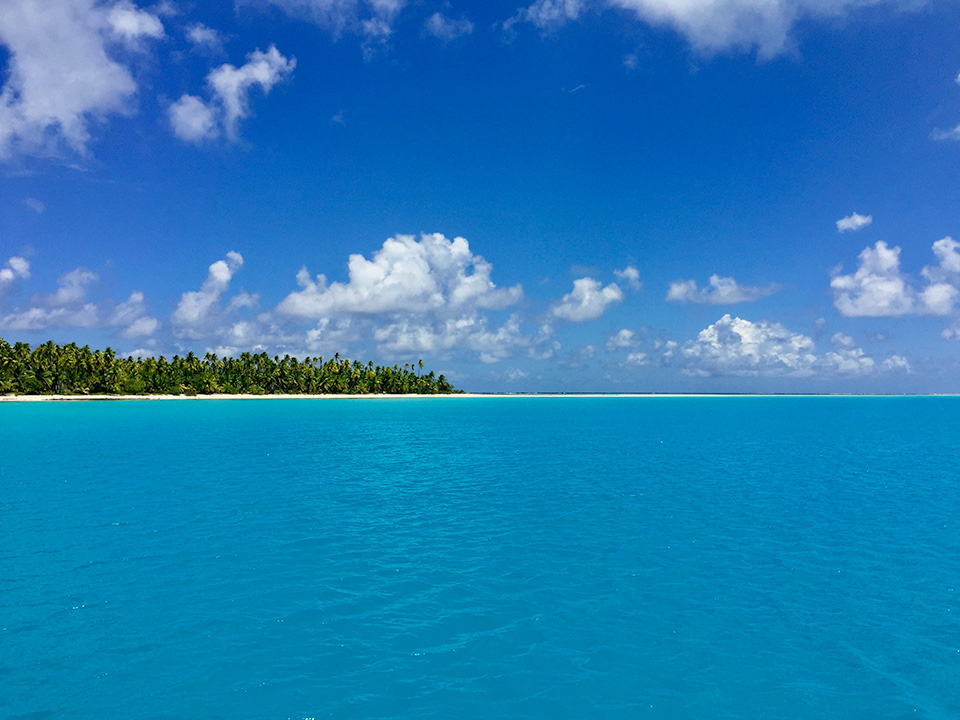
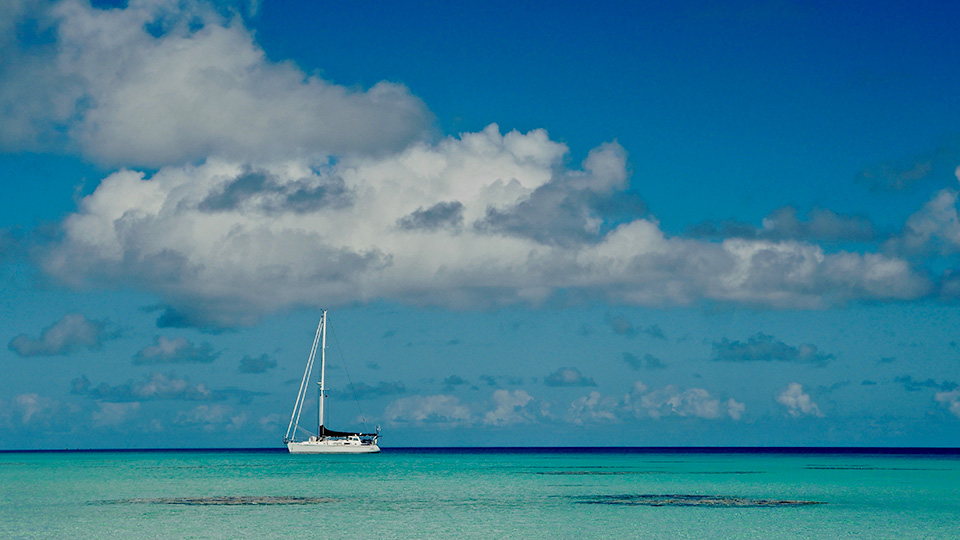
As we sailed south from the Marquesas, Diana was looking for sharks, calm lagoons protected from the ocean swell, turquoise water and coral, safe anchorage within earshot of the surf breaking on the reef. I was looking for flats — wide expanses of water that doesn’t rise above your knee in depth. Ideal for flyfishing. To reach the Archipelago of the Tuamotus, you sail by the Isle du Disappointment. We wished we had the time to detour, to see it for ourselves, if nothing else so we could say we’d been to the actual Island of Disappointment, but it was night when passed and low lying atolls are dangerous in the dark. We slipped by beneath the whisker of a moon.
Disappointment is a prerequisite for flats fishing. You must be comfortable in the waters of frustration. Particularly, if you go looking for fish that might or might not even be there. Bonefish inhabit the tropical oceans of the world, but they are not on every flat. And on the flats they do visit, they are not there every day. And when they condescend to haunt that ephemeral world, they come armed in ghostly mail, reflecting the dazzling world around them, barely visible. Liminal shapes. But you have to see them to catch them. You might spot a bonefish and she will turn and disappear right before your eyes. You will wonder if you have seen her at all. Often the only thing you can see is not the fish itself, but its shadow on the sandy bottom.
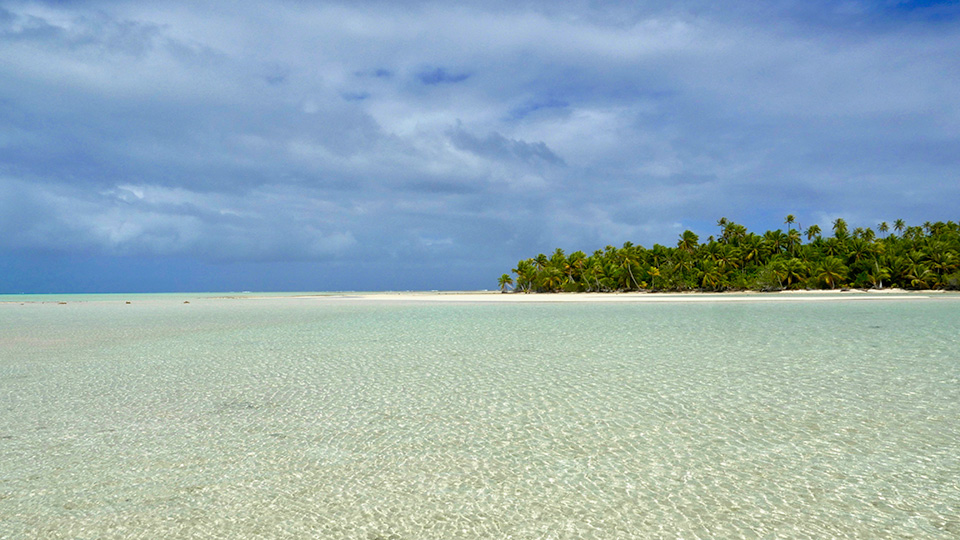
These atolls have long been known by sailors as the Dangerous Archipelago, and before GPS and Google Earth came along, most gave them a wide berth on the downwind run from the Marquesas to Tahiti. They get more visitors nowadays, but their isolation means that beside a select, well known few with air strips, the only practical way to visit is to sail there in your own boat. It took us twenty-five days to reach the Marquesas from Panama and another three days of fast sailing to reach the first of the atolls.
It’s a long way to go and nobody sails that far just to go bonefishing. Not even me.
We chose the Raroia atoll as our first stop because it was the most windward of the Tuamotos that we could easily reach from the Marquesas. It also has a well known, well charted pass for entering through the reef. We had no idea what we might find on the flats there, and nothing in google earth showed up that looked like the classic sandy bottomed expanse you’d find in the Bahamas. I expected something like the gentle reefs of Turneffe flats in Belize, but what we found was not like either. The reef itself looks like a rocky moonscape when the tide is out. It is hard bottomed and the rocks and coral are viciously jagged. Near where we anchored, there were the rusted remains of a shipwreck, the massive engine block and parts improbably strewn through the shallow water. It was easy to imagine the churning caldron that this South Pacific reef would be in a storm. The surf breaking over the reef at high tide sent wavelets rippling over the flat and the current in the cuts reminded me of wading the Madison River. It was a live, active environment. It did not look like a place you’d find bonefish, and I did not.

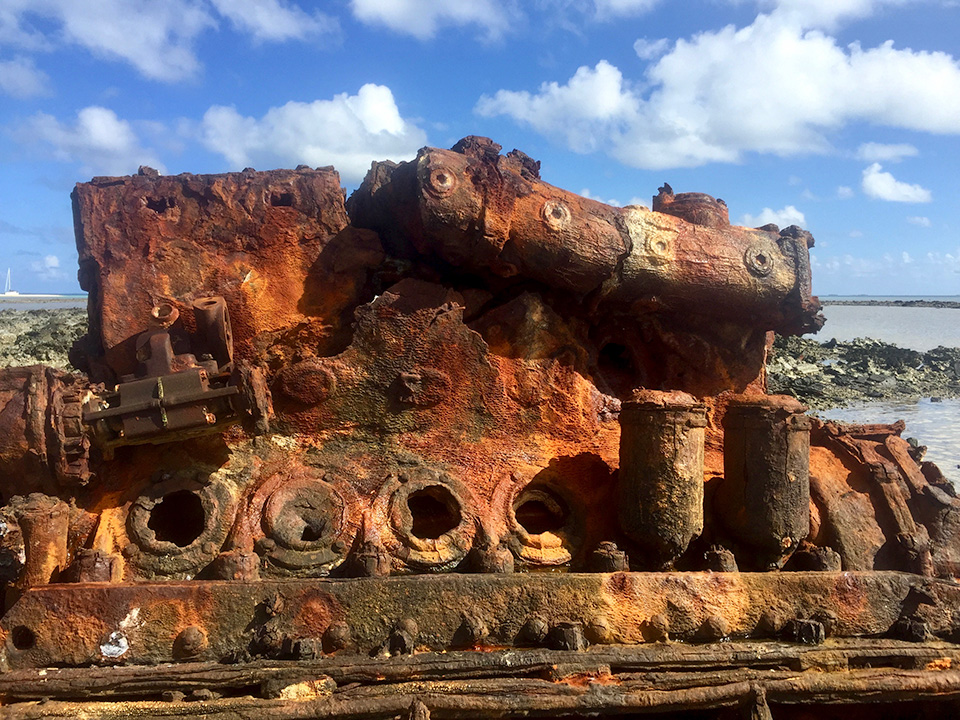
What we did find, was first and foremost, sharks. Black tipped reef sharks make a fine living in the Tuamotos. As a top predator, they seem like the sign of a healthy ecosystem. The coral here teems with fish like an aquarium. The closest I could find to a “flat” were some sandy shallows on the lagoon side between the fast running Hoa’s (Tuamotan for the cuts in the reef). There were also lots of other fish, and I quickly hooked my first Bluefin Trevally which went screaming across the shallows just like a bonefish. It happened fast and was so easy, I initially underestimated this species. These crazy, nervous, spooky, wild fish have since put me in my place. Bluefin Trevally is a beautiful fish, and the couple that rushed in and grabbed my fly, as opposed to the dozen that bolted away at the speed of light when they heard the line hit the water, were as powerful as any bonefish, maybe a little less fighter jet and more raw power, but ripping into my backing nonetheless. One of the first I landed broke the tip of my new eight weight rod. I also caught some smaller blue jacks that were fun (one shadowing a shark), and a less than gorgeous but hard fighter called a Long Nosed Emperor fish. On Raroia, I found a version of flats fishing, but not bonefish.

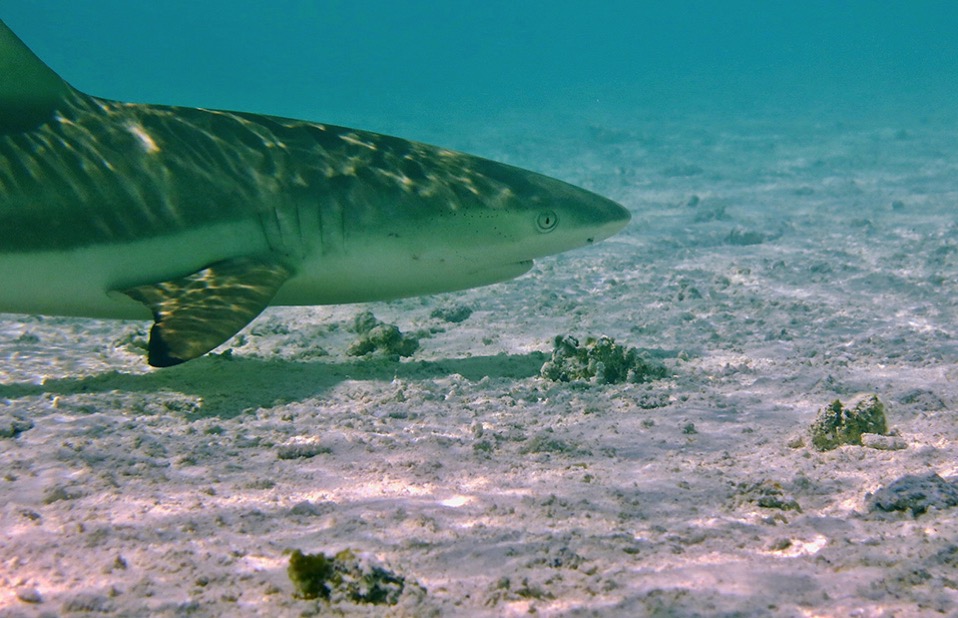

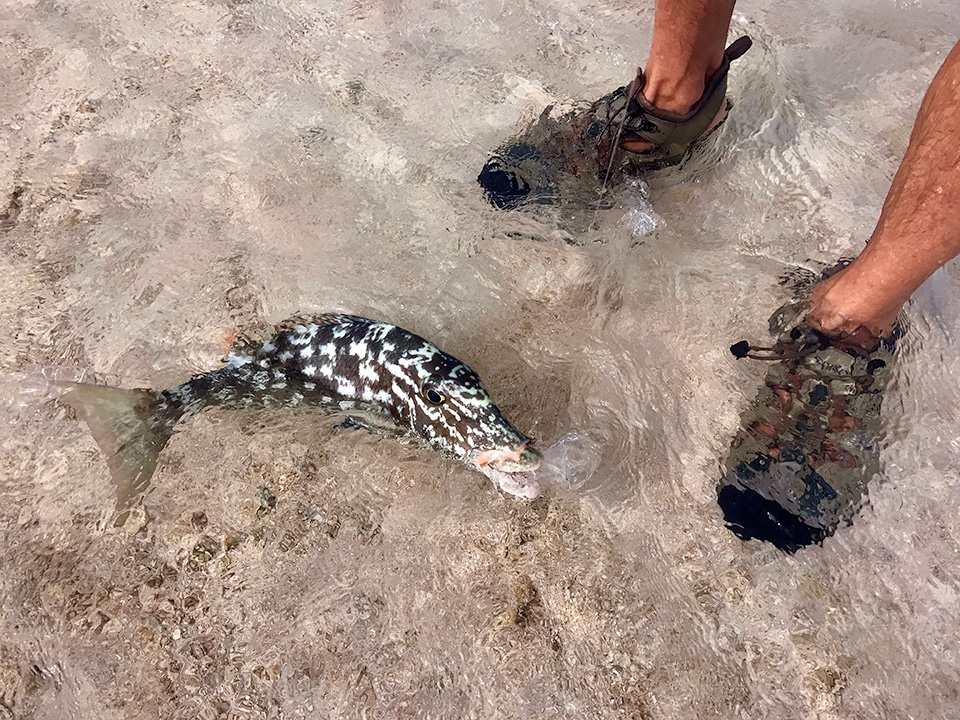
I had read that we might find bonefish on Kauehi, another atoll due west from Raroia. A Montana fly fishermen (like myself) posted a short article about catching them there years ago. He and his wife had crewed on a sailboat crossing from Panama to Tahiti, and Kauehi is a natural, first stop in the Tuamotos. A beautiful island with a charming village, the seductive if elusive promise of internet at the post office, and baguettes on Saturday and Wednesday (a slightly chewy “wonder bread” version). This is one of the atolls with flights from Papeete.
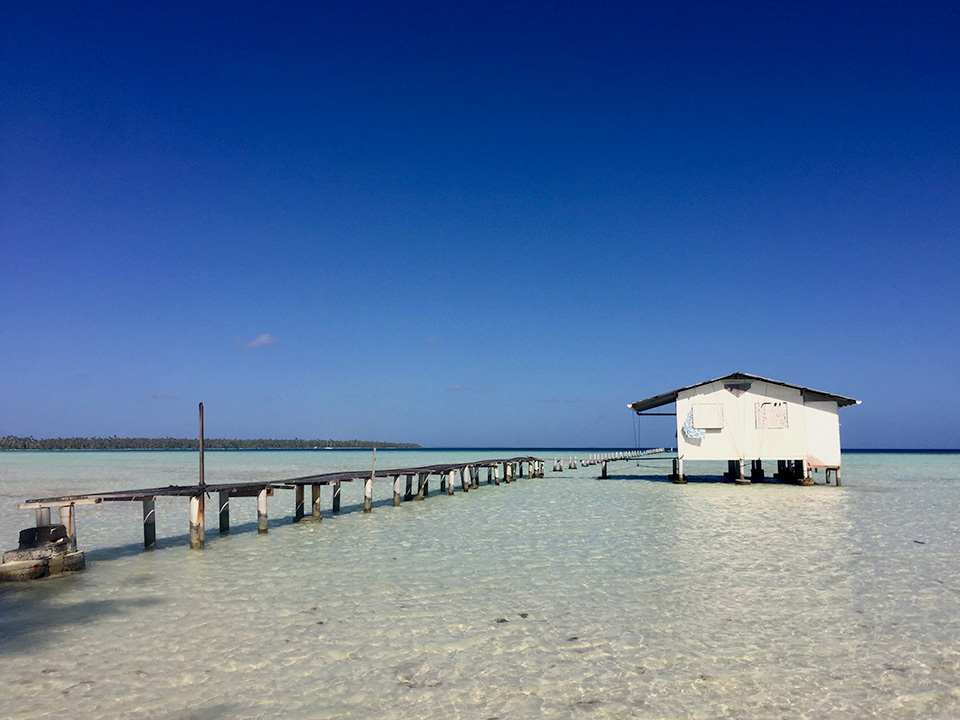
I saw what I thought must be a pair of bonefish almost as soon as I waded out onto the town flat. But they disappeared quickly and soon I was questioning if that’s what I’d seen at all. It took more than an hour to find another pair. I blew the cast completely, trying to compete with 15 knots of wind. Now the question was if I’d get another chance to cast, or if I’d just botched a very rare opportunity. When I finally spotted the next fish, I forced myself to slow down and tiptoe quietly into a crosswind position and wait until I could make a short cast. It paid off, and I had my first Polynesian bonefish on, ripping way across the flat throwing rooster tails of water as it unspooled line like no tomorrow.
An old man (well, not that old, but with a gray beard like me) was taking a Sunday afternoon nap under an awning at the beach. With the southern winter trades, the temperature in the shade is perfect. I felt bad disturbing him marching across the beachfront of his idyllic bit of paradise, but he waved me over in that friendly Polynesian style, and I showed him a picture I’d taken with my phone of the bonefish I’d just caught on the flat in front of his house. He confirmed that they are called kio kio here and told me (in French) that they made excellent Poisson Cru, which is a yummy dish we experienced in the Marquesas, made there with raw tuna, lime and coconut milk. He didn’t seem particularly startled to see me out wandering around the two mile long flat near town, but when I asked Gary, the french dive master of Ephe Mer Plongeé, who’d been living aboard a sailboat in Kauehi with his wife and son for five years how often he saw people fishing out on the flat, he said, “Never. Nobody ever fishes out there.”
Obviously the locals do, I saw them come in with parrot fish and trigger fish they had harvested with a spear. So that’s not what Gary meant by nobody. He meant no off-islander with a fly rod. The young Polynesian man who showed me his spearfish catch, thought the triggerfish would eat my fly when I showed him what I was fishing with. And they did, though it wasn’t quite that easy, though certainly more than it must be stalking these skittish fish with a spear.
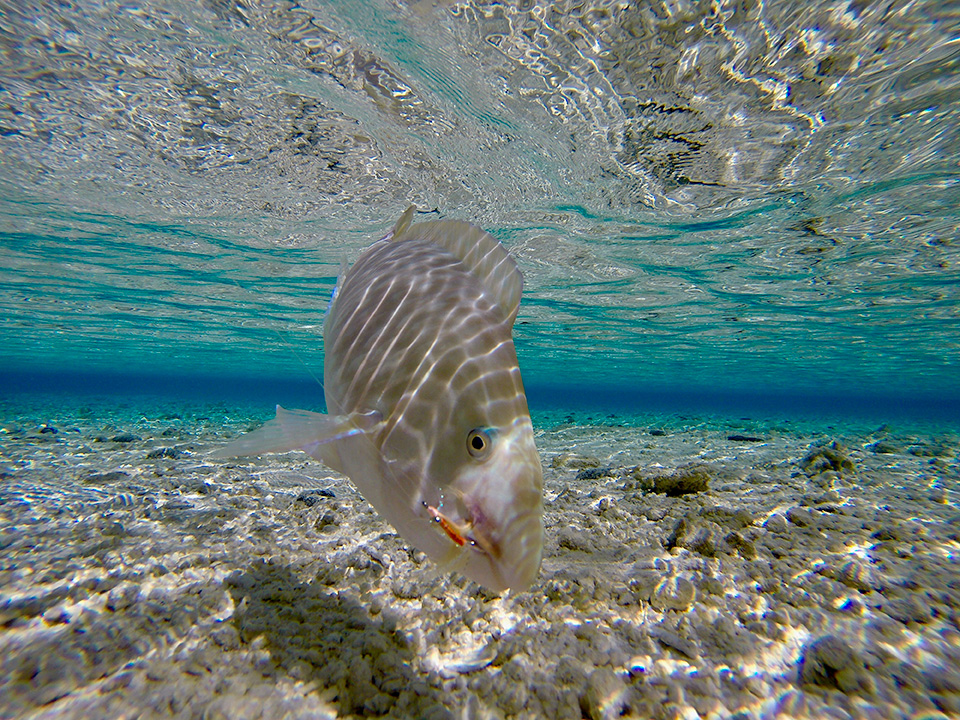
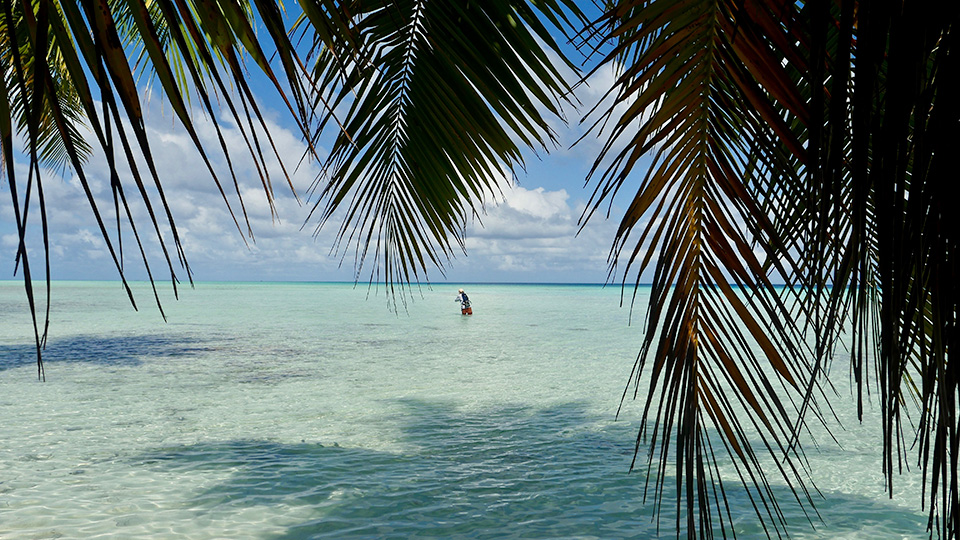
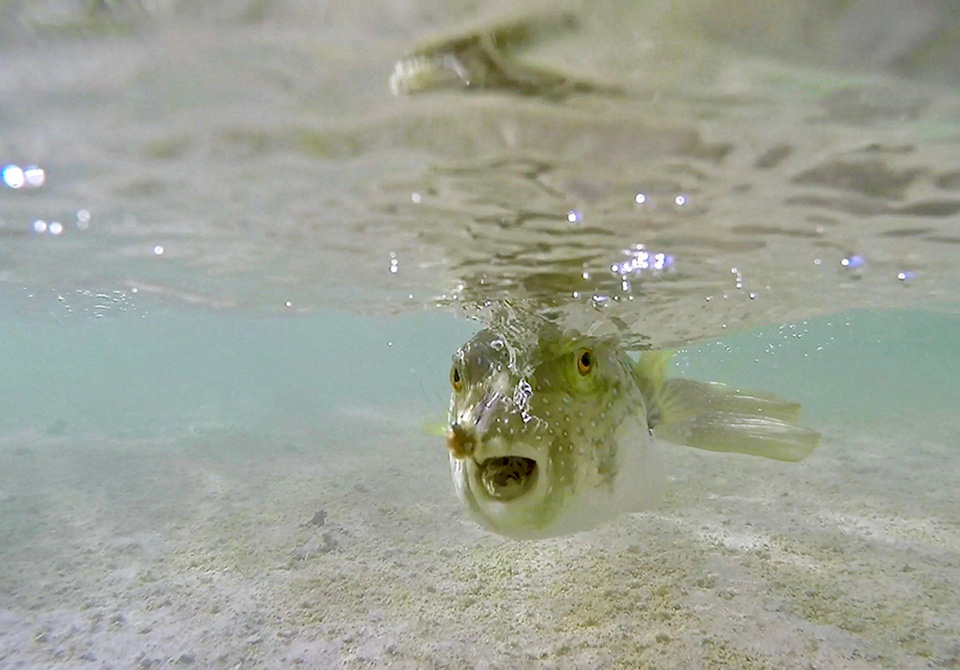

Fishing here is a way of life and it’s about food. It fits most people’s image of fishing — casting a baited hook into the dark water and waiting to see what you might happen to drag up. Flyfishermen are not that different from other fishermen, in most basic respects. Their attraction to the game varies according to the particular part of it that keeps bringing them back, the aspect of flyfishing that rewards and maybe also torments them. It’s like other games, like love even (yes, I did say that). For some size matters. For some it’s the battle and the conquest. For some it is the flirtation and the take. It’s first sight, the beating heart of the approach, the cast. The strategy and the plan. You only have to walk into any fly shop to realize that for some, it’s the fashion. For me, though there’s no doubt, it is true love, for all of the above.
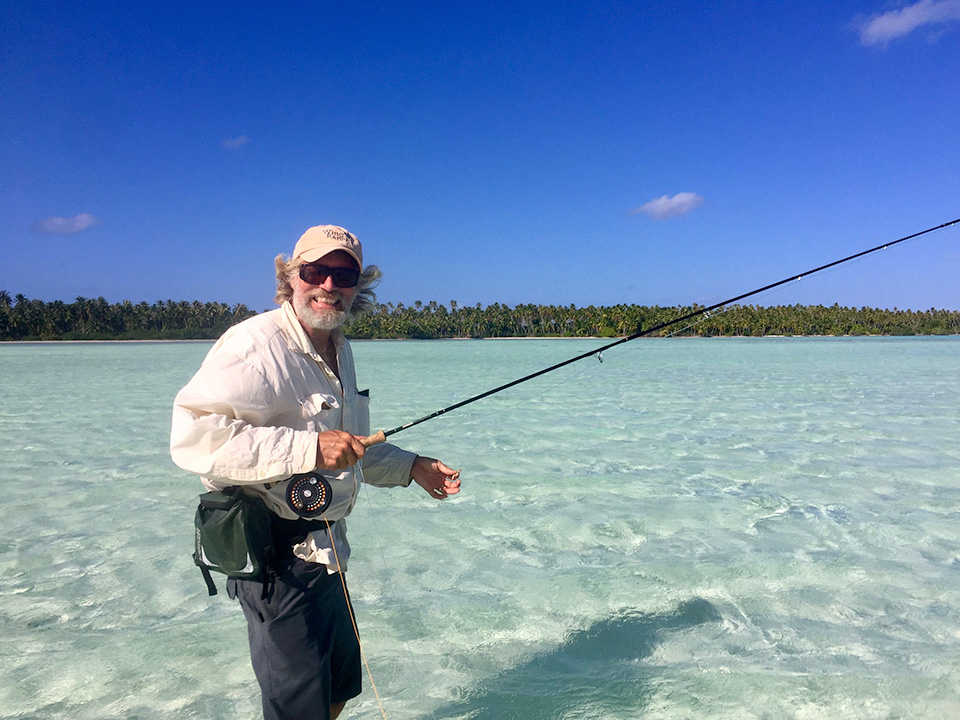
A passion (or possibly an addiction) for salt water flats fishing, particularly bonefish, is something one comes to naturally as a fly fishermen for trout. It’s particularly seductive for a dry fly fisherman whose been bitten by the bug of rising fish sipping small dry flies in the gin clear waters of Montana.
Seeing the fish, stalking, presenting the fly. Precision. Timing. Delicacy. The take and the set. Those are the common elements of the game. A dry fly fishermen must remove himself from the fly, and any hint of current that might pull on the line, so the presentation floats naturally on the surface. The bonefishermen needs to learn how to move the fly the way the bonefish expects it to move, learning the timing of their body language to know when they’ve taken the fly and give them enough time not to pull it from their grasp.
Dumb luck will catch a certain percentage of fish anywhere. But it won’t work often enough to keep it interesting. If a game is too easy, it’s not really worth playing, right? On the flats, like so many things in this concentrated environment, mistakes comes fast and furious. Miss the cast, miss the set, break off. Bonefish almost never give you a second chance.
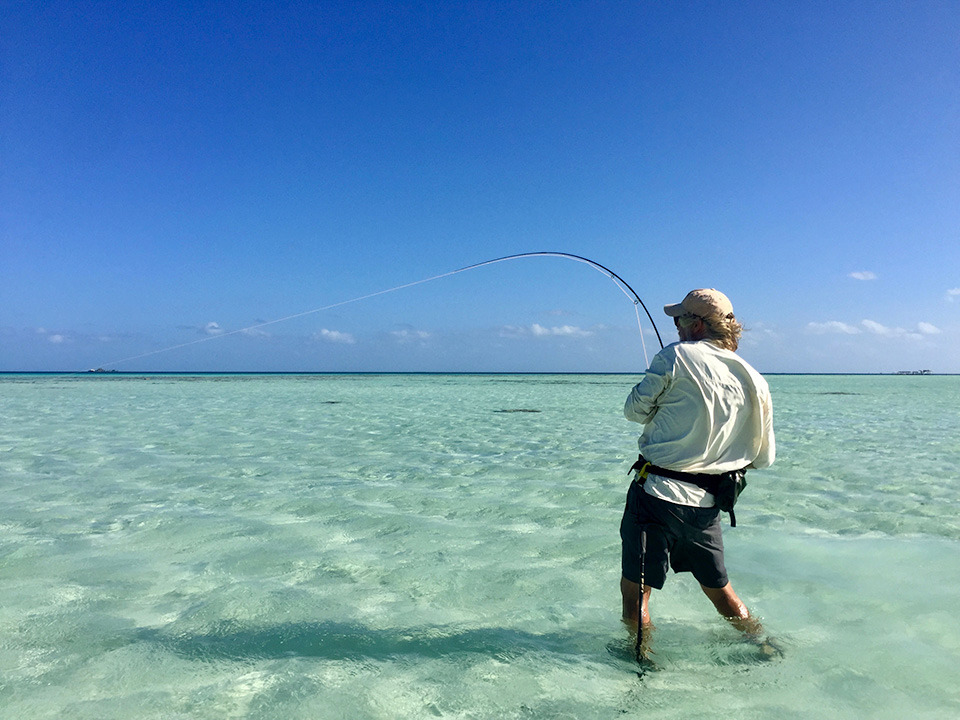

In Toau, the next atoll we visited, Diana saw bonefish swimming under the boat. In general they were concentrated closer to shore, probably because even though the flat is huge, most of it has three feet or more water even at low tide. Also, nobody lives here most of the time. The shallow edges go on for a couple miles. This atoll is one big step further away from the world. You cannot fly here. It’s only seventeen miles from one of the biggest and most populated atolls, Fakarava, so it isn’t that far. I saw the first pair before I really stepped into the water after taking the dinghy ashore. Another single within a few minutes after that. I landed the first fish within an hour of stepping onto the flat. Which was a nice start.
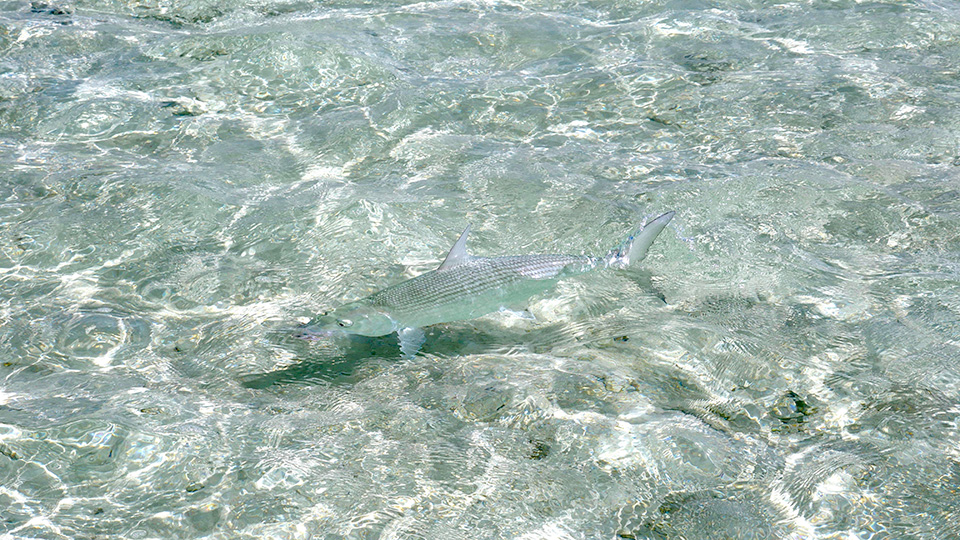
It hasn’t been non-stop like that, by any means. These fish aren’t easy. They spook at the line more than the fly, but they don’t like to hear it plop down. I started using a long tippet and tying my flies with lighter bead eyes so they can land more quietly. The colors that look right to me in this environment are tan with a touch of orange. It needs to belong but can’t be camouflaged — just sparkly enough to get some attention. They bead eyes are heavy enough to make sure it sets on the bottom which I think is crucial here, but not so big that they make too big a splash. In my previous iteration, I used ‘bunny fur,’ which I thought would be good for the splashdown, but I think it was too white. My final pattern used tan squirrel with 6 strands or so of iridescent flash. I caught 7 bones in total, six on this fly in less than three hours on the flat. I’ve been catching fish in water with no ripple on it, right up against the long beach, so I can watch them investigate the fly. Occasionally, they are pretty aggressive about grabbing it, but mostly they follow first, then take it only after it drops like it’s trying to hide. They seem to be used to the idea that whatever it is they are eating, shrimp or crab, is going to try to bury itself in the sand, not swim away. You really have to wait on the set. See them root down on it. They don’t take as long as the Triggerfish, which flop back and forth over the fly like they just can’t get ahold of it, and no wonder with that little mouth which looks overdo for a visit to the dentist. I try to resist casting to them now, because they almost always mangle or break off my fly, and I have a limited number of hooks in my fly tying kit. There are no fly shops for hundreds if not thousands of miles. That said, the other day I couldn’t resist, stupidly, casting to a grouper when I reached the rocks at the far end of the flat. He grabbed the fly in a dash and then didn’t seem to realize he had it, chasing away another small fish that had come out to investigate. I had to give him a tug for him to feel the hook and then he was off, straight for his favorite rock. After walking over reeling up all the line, I could feel he was still on, but I couldn’t pull him out from under the rock and eventually broke him off. After a bit he came out, the fly gone from his mouth, and glared at me like he was considering picking a fight.

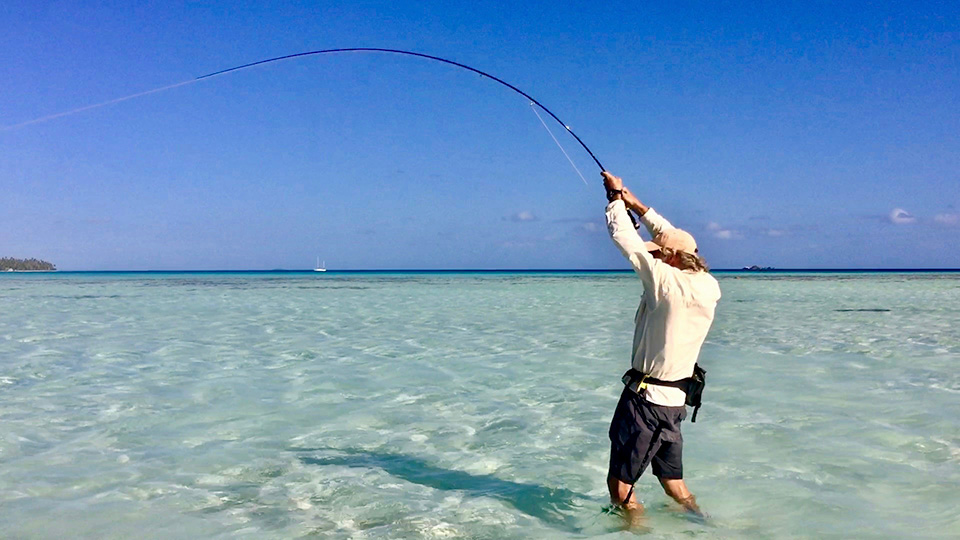
Probably the most exciting thing about Toau bones is that sometimes I find tailing fish. It’s not like smaller Belize bones tailing in groups on the flat, these are pairs or big singles. Big tails. They don’t work a spot for very long, but they aren’t in a hurry either. I hooked a really big one in about eight inches of water. I was lucky because he was moving directly at me. Even so I spooked him and had to recast as he scooted along, now broadside. This time the fly hit the water in the right way and he turned to find it. The take was clear and obvious, an easy set. The fight was unforgettable. He was off at warp speed (of course) and ran toward the shallow without stopping until he reached the shore. Then he turned a hard one eighty. I started reeling frantically (as you do) wishing at that moment I had a large arbor reel instead of my classic old Abel. But nothing was going to keep up with this fish. I reached for the line to start stripping by hand out of desperation, and then jumped. This huge bonefish nearly ran me over in his panic. I still had backing out, and he was zinging past my feet. I assumed he was long gone, but then he hit the end of the line, still on, and turned on a rocky shallow spot. Some poor fish there leapt skyward to get out of his way as he ripped across less than six inches of rock strewn water and in a second it was finally over. Somewhere the tippet had found a sharp piece of coral.
Day 3 on the Toau flat, I think (nice to be losing track), the fish conspired to humble me. My first big theory that it would be good to have low tide in the middle of the day turned out to be exactly wrong. Despite great visibility, and probably because of it, I did not see nearly as many bones. Fewer sharks even, until the tide started to come in as the sun dropped. After three thirty it gets hard to see at any distance except over by the shore where the windless water reflects the darker trees. I finally landed one fish out of a pair, but before that, it was either, wrong time, wrong fly, wrong cast, wrong presentation. They followed but would not take. I could see their eyes as they came in that close, but they wouldn’t pick the fly up.
With their 3D world reduced to two dimensions, and the sun a glaring light, Trevally are a nervous wreck in shallow water. They don’t know what they want to do. They cruise at high speed looking for an ambush with none of that sharklike cool. When they blow up at the slightest provocation, they streak away and then seem to worry that they’ve made a mistake and streak back in to see what they’re missing, then blow up and away again. They dart at the fly as if they know they are making a mistake. I cast to a pair of Trevally cruising inches off the beach and they left so panicked, I think they moved to the next atoll. But then later, I was able to get a cast fifteen feet in front of a pair coming toward me, a little further off. The first fish charged the fly from that distance so fast I have no idea whether I was stripping or what I was doing, but he was on! Another Trevally half an hour later startled me by bashing something under the ledge of the coral right at the shore and then came racing out my way. I cast to him, but I don’t think he saw the fly. He was too busy looking right at me.

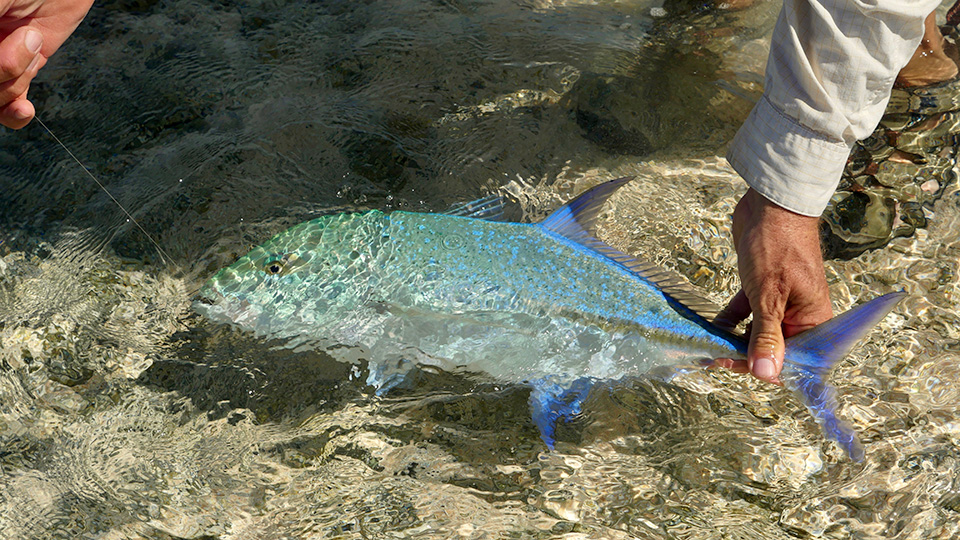
I guess I have been a little skittish on the flats, too, and maybe for the same reason. There are always lots of black-tipped reef sharks everywhere I wade. Curious as cats, with (presumably) bigger teeth. Early on, two of them, inspired by my splashing in shallow water charged in and hit my leg. Unnerving to say the least. Several others came swimming in at high speed, and finally I ended up bumping one six footer on the head with the butt of my rod to stop it. So there it is, full disclosure, there are lots and lots of sharks in the Tuamotus. I started carrying a walking stick for discouraging sneak attacks.
8:30 is about as early as the light works. The water feels cooler in the morning, but I think the light is more significant. These bones seem to stick to the very skinny water and so when it’s straight overhead they are skittish or not around. I saw more bonefish early, including tails. But I was having trouble getting the sequence of things right. Fish headed the right direction. Cast close enough, but not too close. Fish seeing fly but not spooking because it’s moving too fast. Timing right on the set, not too soon, not too late, not too quick, but quick enough. Tight line on the fight, keeping fish away from any rocks. Landing and releasing the fish without alerting any of the bigger sharks. It’s a long list. I headed back a little later than I had planned, around 10:30, Cast, hooked, landed two fish on the way back. The sharks found me after releasing the second one. I thought the bonefish must be okay, but the bigger shark, darker in color was very aggressive in swimming directly up to me. I think he could smell the bonefish in the water about me and he was sure he would find it at my feet or in my hands. I still don’t think he would bite me unless that bonefish was actually there and he could take it from me. That might be a different story. Though, I told myself, since evolution would not have designed them to bite human legs, standing ones anyway, I wonder if he would or even could be able to turn sideways in the shallow water in order to take the bite. So maybe he couldn’t bite my leg even if he wanted to. These are the kinds of things you think about on a Polynesian flat. I had to beat the water with my shark stick a couple times and then it tore off. I assumed it was because I had taught it a lesson about messing with a stick carrying member of homo sapiens. But then he started zig zagging at high speed. My heart sunk. He was chasing something. What’s truly astonishing about these sharks is how far away they must be able to sense a panicked or tired bonefish. Somehow they know the fish are too fatigued to outrun them. I’ve seen them working the flat where I’ve just released a fish like bird dogs in Montana.
Because of the couple of sneak “attacks,” I’ve developed the habit now of turning all the way around ever so often to make sure I’m not being stalked. It seems like a good idea anyway. On a flat, unlike a river, a fish could be coming from anywhere. One of the things I’ve noticed is that sometimes there’ll be a couple of nervous blue jacks following my mud trail. I think the sharks come from that direction for the same reason. They investigate all anomalies on the flat. You (if you are a shark) never know. This time about twenty or thirty yards behind me at the end of the faint trail I was leaving in the sand was a bonefish following me. I turned and made the short cast to an easy fish. He tailed on the fly nicely. Now I was sure that this new fly pattern, which had evolved from my short experience in Toau and in Kauehi, was the perfect Polynesian bonefish fly.
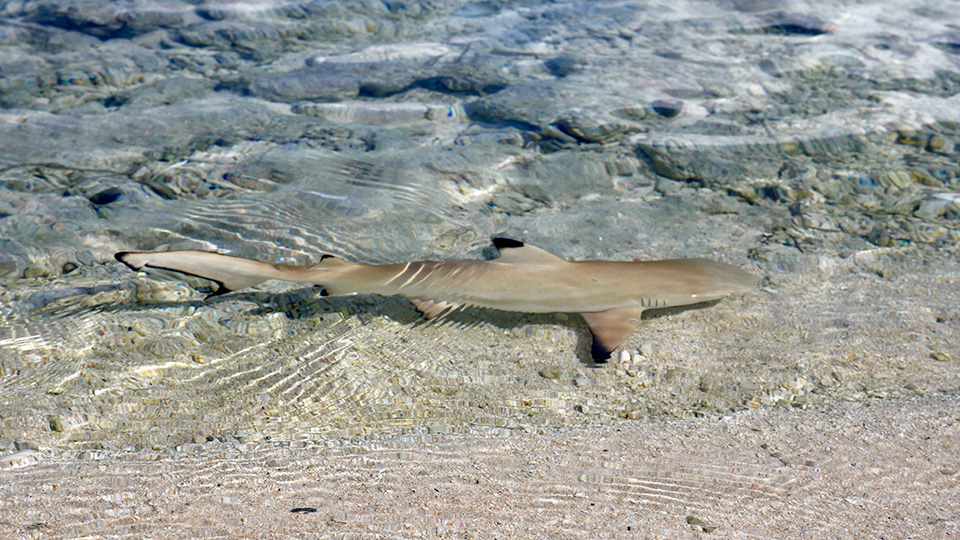
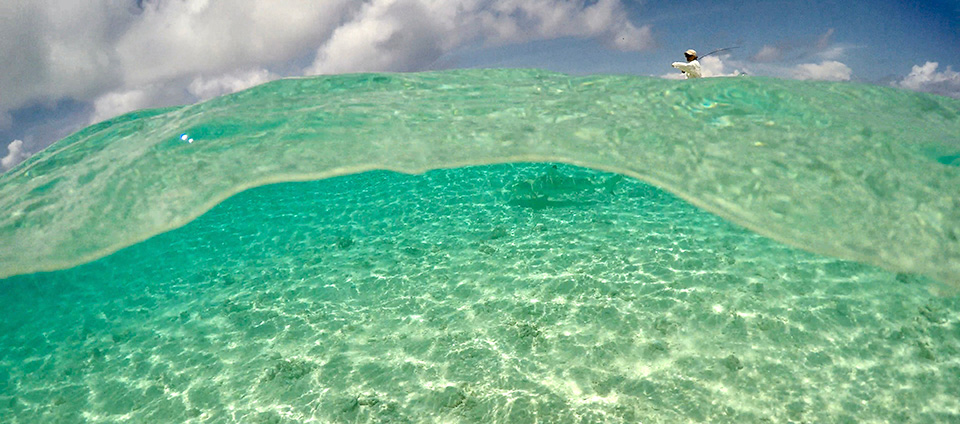
Day five on the Taou “town” flat. We explored “town” today. So far what we can find are the remains of a half a dozen structures. There are a couple of hard hats around that must be for the safety of working in the coconut groves, but the shacks are falling down. This was my most successful day fishing so far. The High tide was 6:52 and low tide was 13:06. I didn’t leave until 10 because we spent the morning doing some boat work. I scooted off, guiltily, leaving Diana finishing the job, cleaning oven parts on the stern. As soon as I started toward the flat after tying up Namo (our dinghy), I came upon two Trevally working quickly up the beach, as they do, not two feet off the edge of the water. I moved up the bank and walking as fast as I could without running I was just barely able to catch and pass them. I kept moving until I had time to get down to the water’s edge and strip off enough line for a cast. I made the cast at least ten or fifteen feet short, so I could move the fly when they got close. Even at that distance they reacted at the speed of light. My thought process barely had time to catch up with what was happening. They spooked right? Even with plenty of wind to hide my line noise and even casting way ahead of them. They are so hyper sensitive, they just blew up. No way to catch them in this scenario. Except that… my body was moving ahead my conscious thought process, and I stripped out of habit. And, unbelievably, a fish was on. Besides sailfish in Mexico, these are the most beautiful fish I’ve ever caught (okay, maybe not the mug, which is a little dopey) but the coloring is spectacular. The second Trevally did not abandon his buddy for a good part of the fight and I found out when I landed him that these Bluefin do have small teeth, like a brown trout.

It was a nice start and it got even better but then worse. I had barely waded onto the flat when I spotted a pair of bonefish. They were moving slowly enough that they were clearly looking for food. When I’ve cast to fish here that are really moving across the flat, they spook, or if they follow I get a refusal. These fish were in 6 inches of water. Really. I was lucky with my cast. The wind subdued any line splash down, and the fly went into the water without too crazy a plop. The one fish turned on it followed and took the fly without hesitation. Because I didn’t want to lose the fish to a shark and because I knew my tippet was stout, I pressed the bonefish pretty hard and when he was close I leaned heavily into the rod to get his head up and bring him in. I slipped the barbless fly out of his mouth and as soon as I let him go, I noticed what had happened. I had broken my rod tip. I’d already broken my eight weight at Raroia on a Trevally (also no spare tip, yes I’m that foolish). Looking at the tip of the rod was a lot like looking at the water when you’ve dropped some crucial boat part overboard (like the oil drain plug on the outboard for instance). Something you can’t just replace with a clever substitution. You just can’t believe that something so irrevocable has happened so quickly that could have such major consequences. The most immediate consequence was that I had to stop fishing after a late start with low tide just two hours away. I had one more rod. An eleven weight, which was going to make delicate casts a challenge, but at least, I had something to fish with for the next two weeks before the Lawsons, Maddi and Wyatt meeting us in Tahiti could rescue me with spare tips.

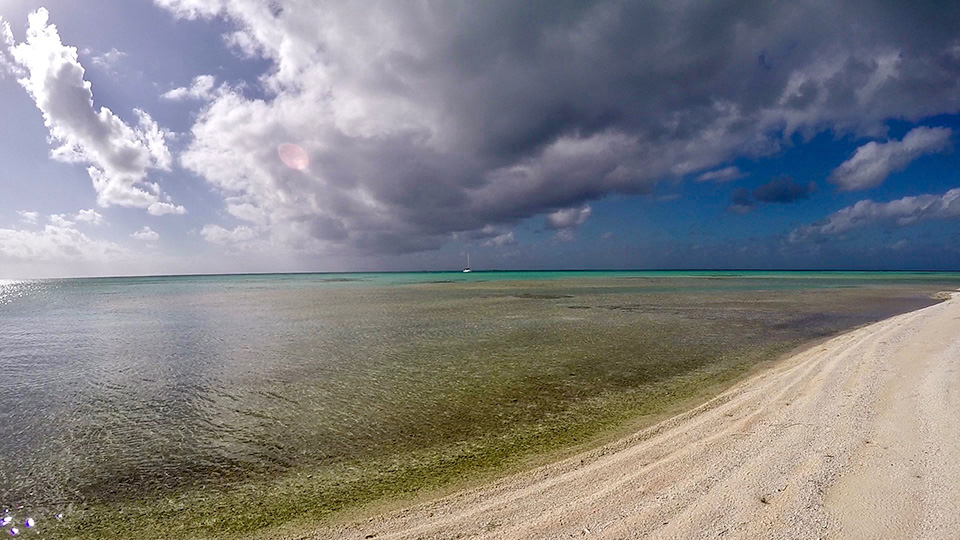
Fool me once shame on you, fool me twice… right? Two Titan Triggerfish on the flat, doing their clowny triggerfish thing. I’m thinking, this is exactly where I saw them yesterday. This must be their “spot.” But I don’t cast to triggerfish, right, that’s my rule, especially when I have just one left of my amazing new fly design that has been working so well. Nope, not doing that. I should also be remembering what happened the last time I hooked one of these goofballs, right here where I am. Just yesterday. The fish didn’t run, just swam casually over to a hole under a rock that you would not imagine was there out in the middle of the big flat. How’d that work out, Einstein? No, I’ll only cast to this triggerfish, if he makes it so tempting I cannot resist. What? Yep. When he ended up under the same rock with my precious fly again, I could see there were only a few inches of tippet ahead of the leader. Still I did not feel like reaching under that rock. I haven’t been touching the triggerfish cause I think they have some mean spines on their dorsal fin and I definitely don’t want any of my fingers anywhere near that mouth of theirs. Those beaver teeth could snap a finger off, I’m sure. I tried goading him out with my shark stick to no avail, so I finally resigned myself to losing my fly and walked away, glad there was no one… absolutely anywhere for miles and miles who could have been watching me behave like such an idiot.
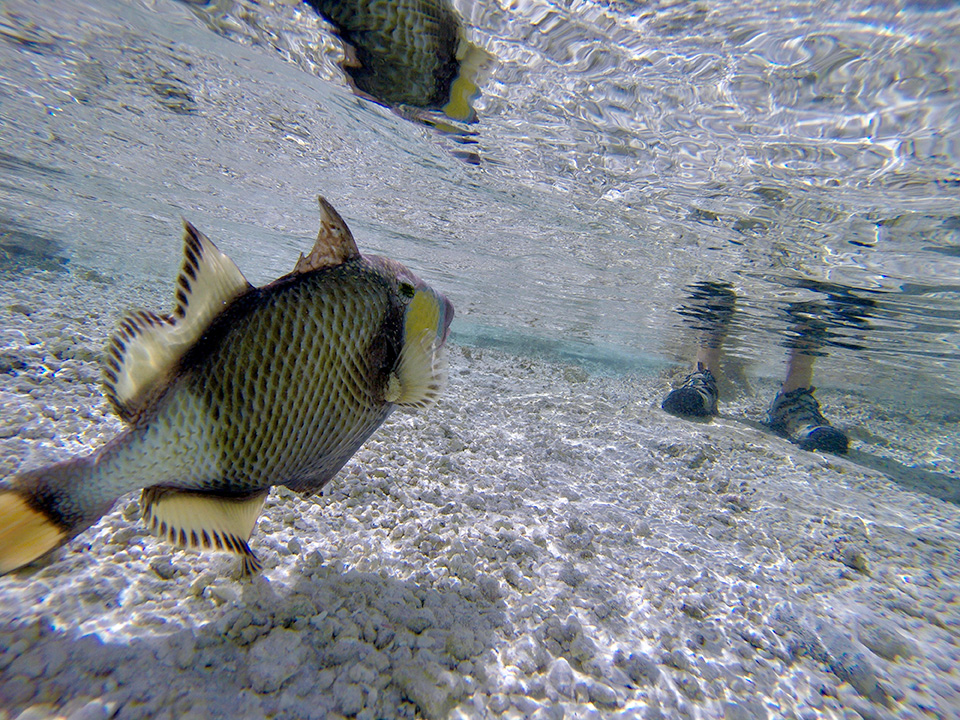
But on the northwest side of Toau we moored next to some friends, Rand and Ellen on the catamaran, Golden Glow. Rand was curious to see bonefishing firsthand and we ended up visiting a flat south of there — Rand Ellen, Diana and me. It was a little nerve-wracking because I’m not used to having an audience and there were obviously no guarantee we’d even see fish. I hadn’t even see the flat before. It just looked right on Google Earth. Luckily it didn’t take too long to find a group of bonefish which were waiting for the tide to get deep enough to get through a shallow pass to an inner lagoon. With camera’s trained on me, I hooked one and then, miraculously even landed it, giving everyone a completely wrong impression about how bonefishing usually goes. I hooked another a bit later, but lots of sharks started showing up and I felt lucky to allow the fish to throw the hook before they found him.
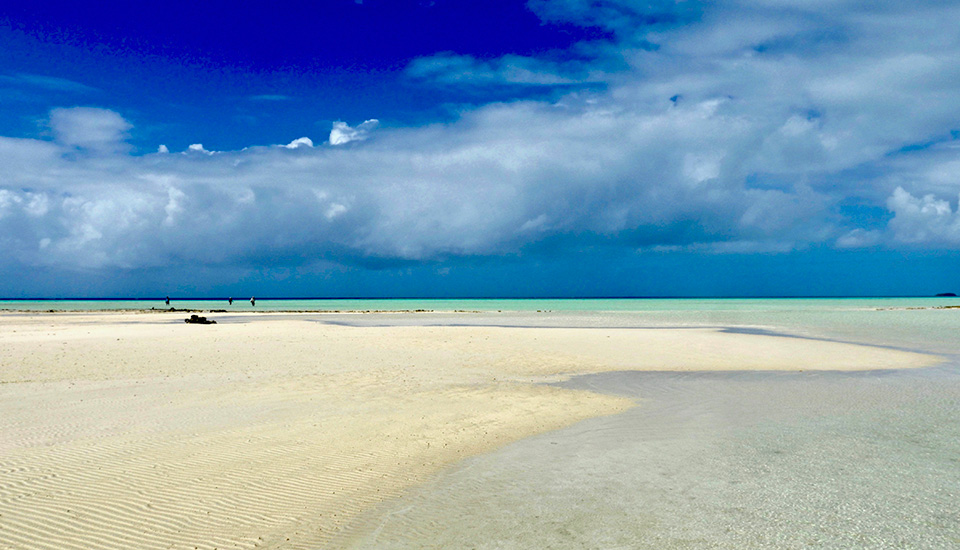
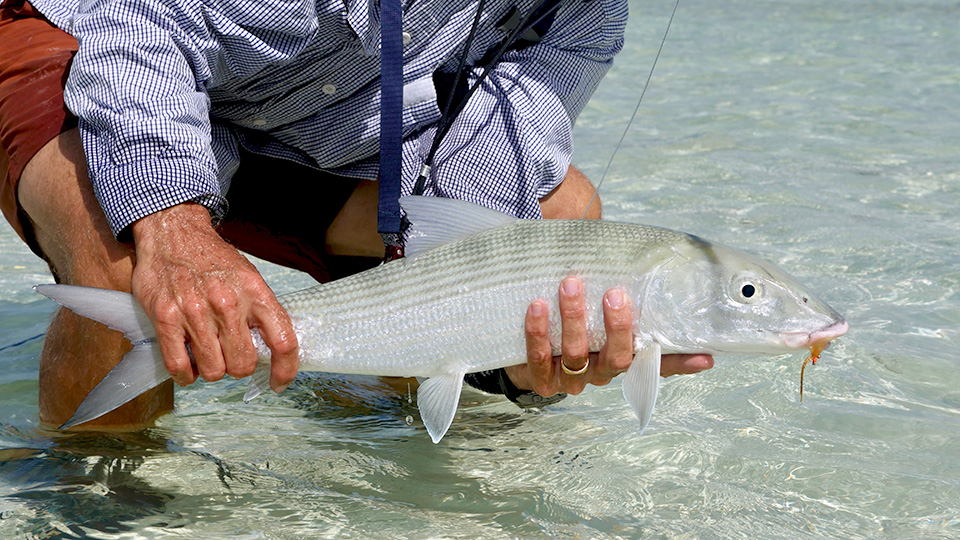
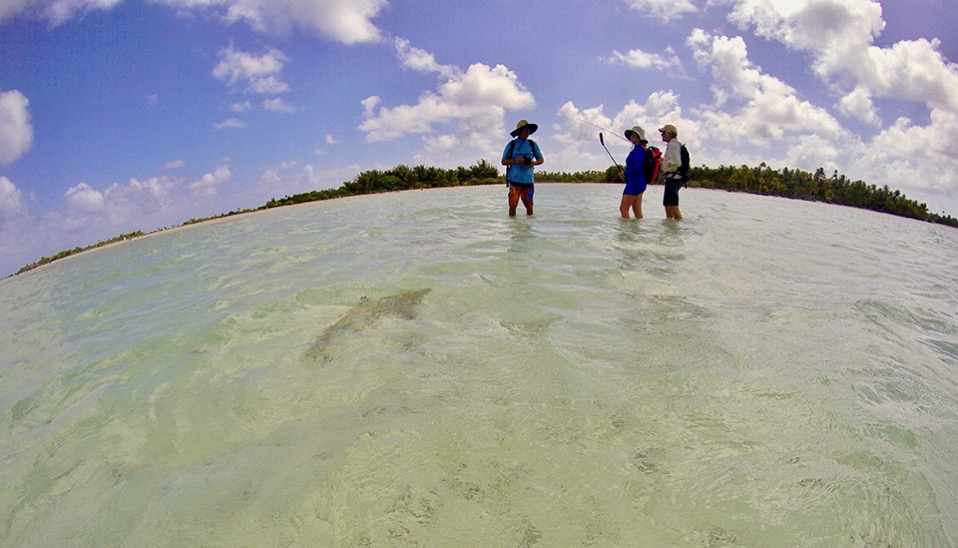
Sharks add an element to fishing here which I have never experienced in any other kind of fishing anywhere else (no toothy predators on a spring creek, though there may be other hazards for your sanity). The first adjustment requires getting comfortable with their constant presence and relentless curiosity. That can make being on the flat a little edgy. Constantly reminding yourself that sharks are best dealt with calmly. Escalating is always a bad idea. There’s the occasional really big shark like the one I had to bonk with butt of my rod in Raroia, that makes you question if what you think you know about them is really accurate. And then there’s the dilemma of trying to practice catch and release in a fiercely competitive, predator rich environment. The Tuamotos teem with fish like nowhere else I’ve ever been. The ecosystem feels as close to undisturbed as I can imagine. Sharks are everywhere and they are a part of that. When we dive the pass, there are hundreds of them and they demand our attention and fascination. They are not dumb fish. But looking over your shoulder when you hook a fish adds an unwlelcome extra challenge to the fight. Watching a fish explode in a puff of red, when a shark gets him, and then watching the shark really getting his sharks instincts up, makes you at least momentarily question the whole game. Obviously its not a game the bonefish want to play, and it wouldn’t be a hard argument to make to suggest that maybe it’s unethical. I’m sure it’s a coming argument that catch and release of any fish isn’t ethical treatment of animals, especially when it endangers their lives. On the other hand, sharks need to eat, too.

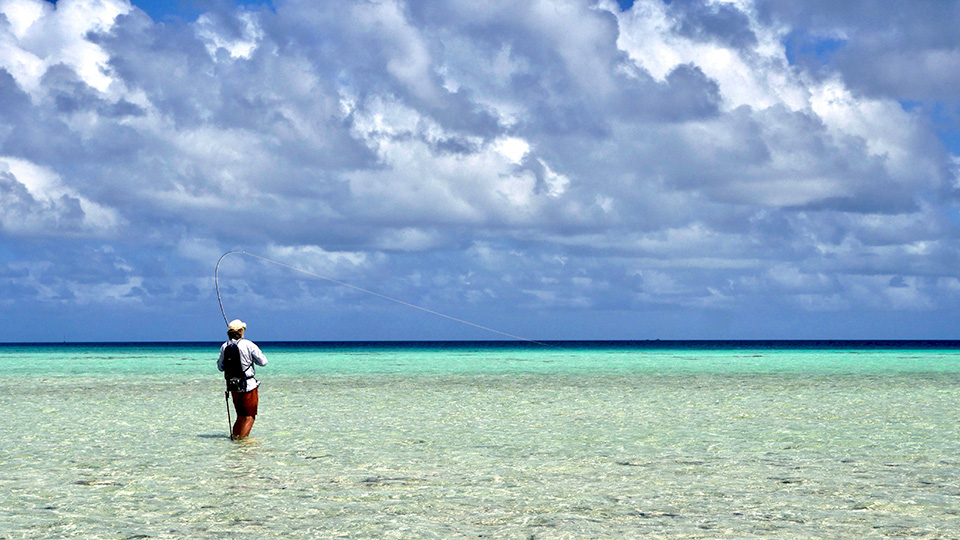
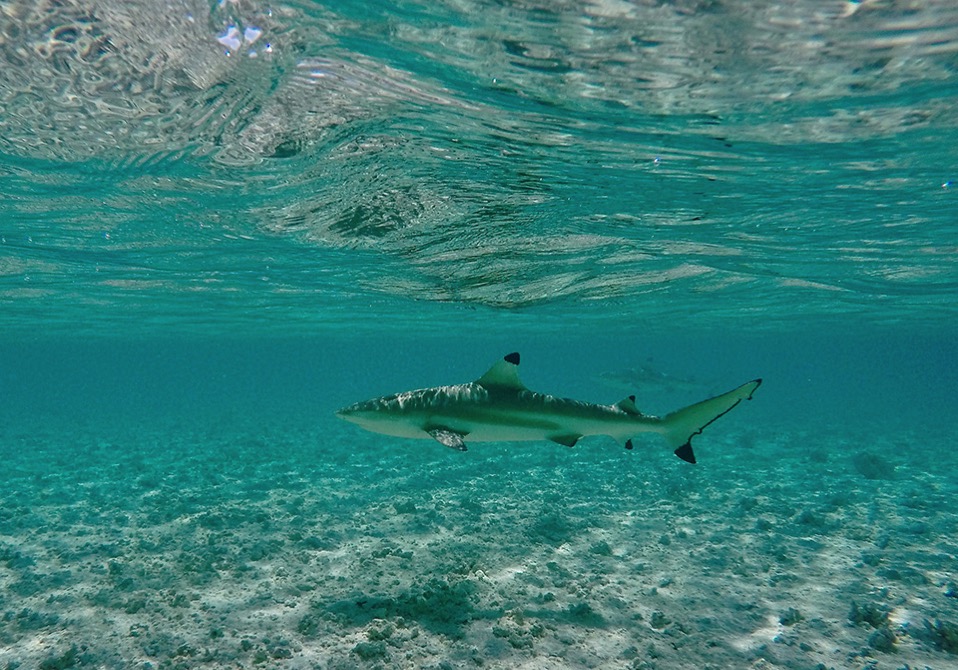
Anaa is an atoll without a pass for boats to get inside. This means we could only visit in certain conditions which just happened to occur as we were sailing back from Tahiti to Tuamotus. We tied up to the massive buoy that used to be used by the weekly supply ship. It wasn’t a great situation, and eventually we dropped anchor, but the bottom’s rocky and we had to worry about getting our anchor back. To get inside you shoot a tiny little pass in the dinghy between waves breaking on the reef a few feet to either side. The first time it was a bit hairy, not knowing how deep the water would be once we cleared the gap. Inside the atoll is an absolute bonefish heaven. There are flats everywhere. Diana tooled around on her bike and found one of the ‘magasins’, which turned out to be connected with Anaa Flyfishing. The woman who ran it said there was a small place, Pension Anaa To Ku Kaiga, where flyfishermen came to stay and fish the atoll. There’s a small airstrip with weekly flights. I found fish quickly, though they seemed spookier than the fish on Toau or Kuehi. I discovered soon enough why. After breaking one off on the set, and then losing one on the only branch stuck in the sand for miles, I got another hooked properly. It screamed off the flat into the deeper water and then came back. I was just getting ready to pull it in when two sharks showed up out of nowhere. They definitely were not messing around. They knew this game. I tried loosening my drag which only made a mess of my backing and the sharks got the fish anyway. I decided to move on rather than risk losing another fish to the sharks. What I ran into instead was a school of thirty to fifty sharks that were chasing baitfish under birds in the shallows. They literally churned the water in their frenzy. I watched one small shark run a baitfish right up on the beach and grab it. The anchorage was too uncomfortable to stay another night, so that was the limit of my experience in the only atoll with a flyfishing business, Anaa. Though the fishing seems endless, figuring out a strategy for dealing with sharks that have learned from a dozen or so people fishing each month that bonefish are vulnerable when hooked, would be key to fishing there. So is it strong tippet and try to bully them in, or light tippet and break them off if the sharks show up? I’m not sure.
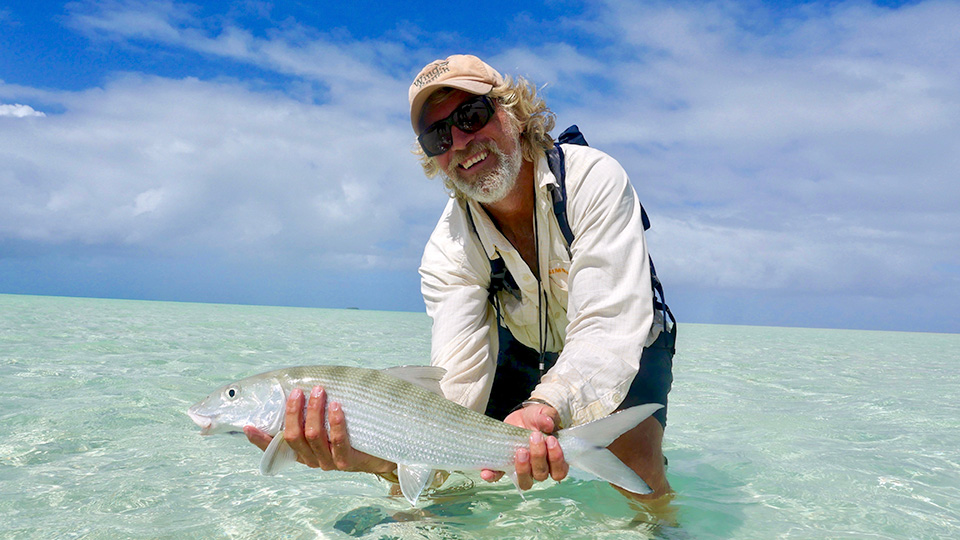

Curiosity is an essential element of the flat. All the creatures there are looking for something in that thin slice of a watery world. A human being walking a flat is an unusual event, and so I should expect a little attention. Of my many curious visitors, a beautiful red and rust brown turtle was the most conspicuous creature I’ve seen on the flat. From a long distance he was indistinguishable from a rock, except in that he moved. The first time we met, I followed him for a little way until I could tell what he even was. I’d never seen a brown turtle before. At about twenty yards I stopped to watch him, and then he turned and began very slowly swimming my way. I wanted to take a picture, but I didn’t want to spook him by taking my phone out, so I left it in my pocket and didn’t move. At about fifteen feet he poked his head out of the water and looked at me. And then he kept swimming over. Who knows what he might have been thinking. When he was literally about to touch my ankle with his snout, I blinked. I moved my leg just a tiny little bit, in case he was thinking of pecking at my foot. I wish I hadn’t because that settled it for him. Whatever kind of tree he thought I was, its roots were not supposed to move. He turned at a turtle’s version of light speed and swam away. We bumped into each other the next two days, but then as soon as he poked his head up out of the water and saw it was me again, he was out of there. So I guess he didn’t want to be my flats buddy after all.
